



Part of Furtherfield Open Spots programme.
In partnership with CRiSAP – Creative Research in Sound Arts Practice from the University of the Arts London – LCC, Furtherfield Gallery is pleased to present Migratory Dreams – Sueños Migratorios, sound recordings of an improvisatory online performance event using spoken voice and pre-recorded sounds that took place between two Colombian communities in London (UK) and Bogota (CO) in August 2012.
Contact: info@furtherfield.org
Download Press Release:
English Version || Versión en Español
When we migrate, our perception of space expands, as we experience new territories and cultures; sometimes this perception can be diminished if we lack forms of expression to engage fully in the new place. In our dreams, feelings are expressed unconsciously, offering a free and mysterious encounter with spaces we long for, and also with spaces that we have not yet encountered in our waking reality. Dreams become a metaphor and vehicle of our migrations.
The exhibition Migratory Dreams – Sueños Migratorios invites us to listen to eight dreams that were shared in an improvisatory sound performance via the Internet, between Colombians living in London and Colombians living in Bogotá, using spoken voice and pre-recorded sounds. The performance explored the sound space that is created in-between the two locations, as well as the feelings associated with different experiences of migration, and was manifested through Deep Listening practice and dreamwork.
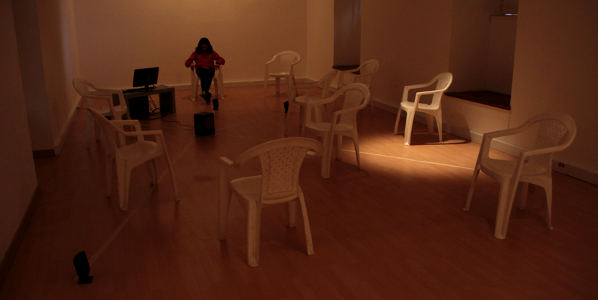
Resonating through voice in an in-between space, being heard on the other side of the world, about feelings left by the experience of re-location or dislocation, opens our sense of being and our multidimensional condition. Perception of location is sometimes as volatile as the sense of reality, and as clear and structured as the dream reality can be.
The performances were part of Networked Migrations, a practice-based research project which explored feelings of displacement and being in the ‘in-between’ of migrants communities.
Dreamers and performers London/ Soñadores y performers Londres: Amaru, Nelly, Sebastián, Steve Cárdenas Mosquera
Dreamers and performers Bogotá/ Soñadores y performers en Bogotá: Diana María Restrepo, Joela, Sandra Miranda Pattin, Tzitzi Barrantes
Programmer Max Interface/ Programador Max Interface: Emmett Glynn
Venues: Resonance FM (London), Plataforma Bogotá (Bogotá)
Collaborators in the performance: Deep Listening Institute (Kingston-NY), Plataforma Bogotá (Colombia), Resonance FM (London)
Ximena Alarcón
Ximena Alarcón is an artist who engages in listening to migratory spaces and connecting this to individual and collective memories. Her practice has involved ethnography, deep listening, and sonic improvisation, intertwined with the creative use of Internet multimedia technologies. She is interested in working interstitial or ‘in-between’ spaces where borders become diffused, such as underground transport systems, dreams, and the ‘in-between’ space in the context of migration. She completed a PhD in Music, Technology and Innovation at De Montfort University and was awarded with The Leverhulme Trust Early Career Fellowship 2007-2009 to develop “Sounding Underground” at the Institute of Creative Technologies. Since October 2011, she has been working as a Research Fellow at CRiSAP – Creative Research in Sound Arts Practice from the University of the Arts London – LCC, developing her project “Networked Migrations – listening to and performing the in-between space”.
+ More information:
http://networkedmigrations.wordpress.com/
Furtherfield Gallery
McKenzie Pavilion, Finsbury Park
London N4 2NQ
T: +44 (0)20 8802 2827
E: info@furtherfield.org
Furtherfield Gallery is supported by Haringey Council and Arts Council England.
James Lowne won the Animate Digitalis Prize in 2011, with his computer animation Someone Behind the Door Knocks at Regular Intervals. His latest animation, Our Relationships Will Become Radiant (2012) was recently screened at the BFI and Tate Modern, and is now available on DVD.
Sarah Thompson: First let’s talk about Someone Behind the Door Knocks at Irregular Intervals. How did you go about creating this piece?
James Lowne: Something that interested me was the idea of contemplation and distraction, how we relate to these contrasts in a space where images are in circulation. The production of gestures and poses that are prepared, cropped and then framed for output as media content. So for this film I tried to convey these themes, within a cinematic sense, by way of a narrative. A friend gave me a piece of music and I thought I would set down some pictures to this. I began to source pictures from different places, personal photographs, movie stills, magazine ads, and consider new arrangements of these, treating them as objects. For me this appropriation is an important part of the process.
ST: Appropriation of data objects?
JL: Images could be seen as condensed information perhaps, but what I find interesting is the effect of accumulation, like interchangeable tiles. A grand narrative of the exchange, and this is what becomes more important than the singular image. But conversely, and what I find incredible, is that always within the homogeneous there is this latent singular moment, where one image, an instance of infinite copies, presents itself as unique in a particular situation to a particular viewer. The image selects the viewer, not the other way around.
ST: It has the particular quality of exploring psychic space, which I think is a key quality of Computer Animation. Do you think this is why the medium suits you so well?
JL: Well, I think we should elaborate on the term psychic space. And also think about what we mean by computer animation. What is the working process? What is the form of presentation? Still it is being used within the parameters of filmmaking. Mainstream cinema CGI relies heavily on anthropomorphism, a long line of tradition from early cell animations. To move an object suggests giving it life of some kind, but the process of making the image move is different now, it’s much quicker for one. What the computer brings to the animator is the illusion of a 3 dimensional environment as a working space, the monitor resembling the camera frame. What interests me is the ability to very quickly explore what effects a camera can have over a subject and how the subject has been posed. Capturing gestures from different angles and rendering them into images brings the meaning of this body language into question. The computer can allow you to make these decisions at incredible speeds, whizzing the camera around the subject with your mouse and keyboard. You couldn’t do this so quickly with actual cameras and so a new selection process comes into play, and this for me suggests the relationship of space and surface, and you can work like a machine, running through infinite choices.
ST: So the relationship is perhaps more of a spatial one?
JL: Yes, but a simulated space. The computer allows us to enter into this space and this is with the use of an interface, and this is the fundamental difference from, say, drawing on paper, or painting.
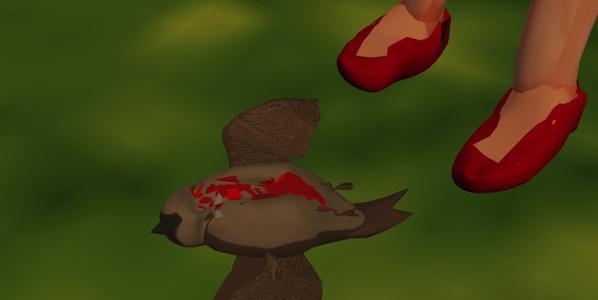
ST: The characters in both films are ‘roughly drawn’ as though you were ‘feeling the way’ as you were making it. Is that so?
JL: Drawing and writing form a starting point for my work, and I am more interested in ideas. I didn’t have a camera or any actors, but I did have a computer. I had learnt how to use all these graphic software programmes from the commercial work I had done. It struck me that the software packages end up monopolising aesthetics somewhat, with a focus on simulating cinematic styles, animating figures in a certain way, and so on. To me this seemed rather pointless and I wanted to try and get a different connection with the machine, to see if I could apply drawing through the interface. I found it very tricky, really.
ST: But through this process you make acutely emotive characters. What sort of commercial work did you make?
JL: The commercial work I had done would involve applying motion graphics onto things, or manipulating footage in post-production. I would go through frame by frame watching the actors or models in corporate adverts and film trailers. Their stylised expressions and poses I really liked, you get to think about them differently when watching them over again, and freezing on a frame of your choice.
ST: Maybe this is why these works are both funny as well as saddening. There is also a strong filmic influence like Psycho, and Blood of a Poet…
JL: For me cinema is a greater influence than animation. I like the way film can generate mood as well as story, and often the techniques of production can overwhelm the overall form. This is what is great about the old, Italian horror films of Fulci or Argento, which have relatively low production values and often, dubious narrative coherence. But this is what is so empty and distancing about them, this form makes them incredible. And the fact that I would watch them on VHS copies of variable quality only amped up the level of horror. I think these old horror films straddle that feeling of humour and terror.
ST: Like Antonioni except horror?
JL: I am not familiar with the work of Antonioni. I know Blowup, and I want to see Red Desert. But I wouldn’t make a connection with him and someone like Fulci though, that’s a whole different ball game. Fulci’s lack of filmmaking skills is the wonderful aesthetic I think, rather than the other way around.
ST: It also has qualities of traditional animation, like leaves quivering in the breeze…
JL: Yes, I like that scene as a cut away. I like the fact that in films you can uses images and sounds of nature to set certain romantic moods. I was interested in the affect that the computer generation of this style would achieve. Is it the same? The leaves look like they are kind of flashing.
ST: The narrative is all implied; do you think this puts the emphasis on the psyche of the central character?
JL: Well, I was learning about cinematic techniques as I was making the film, trying things out. Editing a sequence is very interesting to me, the way subjectivity can be manufactured by putting things next to each other. I think we tend to think about films, web and TV in a natural way when looking at media content – that this is the correct way to order a sequence of images together to tell a story – but for me this is a problem and it lends itself to playing on emotions, and this is also how we are marketed to. Is narrative implied in the dialogue between the object of advertising and the subject of consumer? In the capitalist society we are put into a space to engage with the object of choice, we shift through many surfaces of appearances quickly to construct a reality. Maybe we should edit more films like this, reflect back the illusion and test out new durations. I love the way Warhol’s films have impossible durations, making us consider ourselves rather than the work.
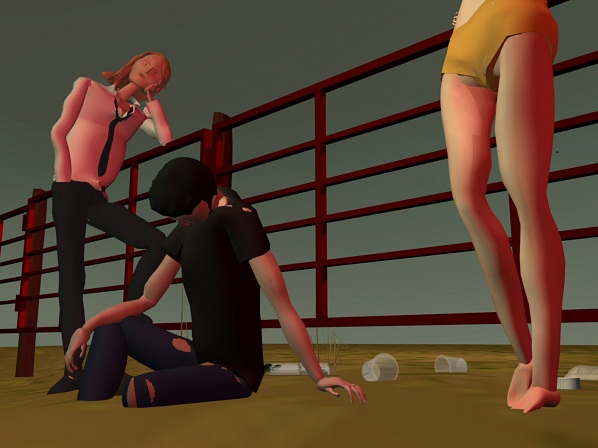
ST: We are very used to, if not inculcated in commercial object relations?
JL: I think Baudrillard uses the term absolute advertising, the form itself of advertising as an operational mode. He also speaks of the demand for advertising. I find it interesting in that we may try to determine our positions in the social sphere within this backdrop, even as we disregard it as meaningless, it has a role in mapping the coordinates in which media moves about.
ST: Do you think we see computer animation in a prejudicial way, and expect certain things from it?
JL: I think people expect certain styles and genres from their cinematic entertainment. I think we look for authenticity in things. We see computer animation everyday and don’t question it, for example on TV commercials, idents for the web, branding and corporate logos. Computer games are having an effect on cinema too. I think only if the context is changed people may question it.
ST: I mean that it’s possible to do things and say things with animation which wouldn’t be so realisable with film, animation is maybe more iconic?
JL: I think film and computing are very much as one now. Anything can be achieved in a post-production suite, and is quite often expected of film today. I think the aesthetics should cross even more rather than CGI trying to emulate film. The opening scene to David Lynchs’ Mulholland Drive for me is a perfect way of using computer graphics and film, and this achieves an amazing effect for the cinema.
ST: In Our Relationships Will Become Radiant there is a similar exploration of the psychic space between individuals to Someone Behind the Door but it is drawn out further and even more oblique. The characters have a special relationship with images in a frame? Like i-Pads almost. They find the ‘photographs’ lying on the ground.
JL: Well, I was trying to use narrative to look at subjects, to look at relationships within a network of some kind. I wanted to let the film generate some of its own relationships. In the narrative there is this kind of defined physical space that these people find themselves in, although they try to make this space limitless. I was interested in the idea that they lose their physicality somewhat, maybe disregarding their bodies, or appropriating themselves as images.
ST: Perhaps the specifics of the narrative ‘don’t matter’, it is as though you are finding the essence of manners of relating which can be more subtle in CG because you can manipulate the models more quickly?
JL: Certain narrative forms we take for granted as real, news reports or some big corporate event, the way these things are mediated to us we accept as a truth, the way that it actually is or actually happened, which is obviously not true. I think narrative forms should be explored to allow us to think about what we take for granted as truth, and even further, how do we act in the space of choice between different truths when the mediation of these subjects is the same?
ST: Is it that a narrative can be suggested, but it doesn’t actually have to be a narrative to have a narrational effect? And then it is sort of how we find meaning symbolically in pictures, and that helps us to make sense of life?
JL: Well, exactly. Questioning things is very important, especially if we are to live in a network of images. In conventional narrative forms emotion and passion can be exploited very easily, and maybe this helps keep those accepted forms of mediation in operation. Cinematic narratives can be reframed in new stylistic approaches to adapt to the present ideology, but are we breaking away from the conventional structures?
The DVD is available from the BFI shop, published by Filmarmalade, and it also includes a second new film, Corporate Glossy Warhol Burger, co directed with Gordon Shrigley
Featured image: The Simplex Algorithm
Algorithms have become a hot topic of political lament in the last few years. The literature is expansive; Christopher Steiner’s upcoming book Automate This: How Algorithms Came to Rule Our World attempts to lift the lid on how human agency is largely helpless in the face of precise algorithmic bots that automate the majority of daily life and business. So too, is this matter being approached historically, with Chris Bishop and John MacCormick’s Nine Algorithms That Changed the Future, outlining the specific construction and broad use of these procedures (such as Google’s powerful PageRank algorithm, and others used in string searching, (i.e regular expressions, cryptography and compression, Quicksort for database management). The Fast Fourier Transform, first developed in 1965 by J.W Cooley & John Tukey, was designed to compute the much older mathematical discovery of the Discrete Fourier Algorithm,* and is perhaps the most widely used algorithm in digital communications, responsible for breaking down irregular signals into their pure sine-wave components. However, the point of this article is to critically analyse what the specific global dependences of algorithmic infrastructure are, and what they’re doing to the world.
A name which may spring forth in most people’s minds is the former employee of Zynga, founder of social games company Area/Code and self described ‘entrepreneur, provocateur, raconteur’ Kevin Slavin. In his famously scary TED talk, Slavin outlined the lengths Wall Street Traders were prepared to go in order to construct faster and more efficient algo-trading transactions: such as Spead Networks building an 825 mile, ‘one signal’ trench between NYC and Chicago or gutting entire NYC apartments, strategically positioned to install heavy duty server farms. All of this effort, labelled as ‘investment’ for the sole purpose of transmitting a deal-closing, revenue building algorithm which can be executed 3 – 5 microseconds faster than all the other competitors.
A subset of this, are purposely designed algorithms which make speedy micro-profits from large volumes of trades, otherwise known as ‘high speed or high frequency traders (HST). Such trading times can be divided into billionths of a second on a mass scale, with the ultimate goal of making trades before any possible awareness from rival systems. Other sets of trading rely on unspeakably complicated mathematical formulas to trade on brief movements in the relationship between security risks. With little to no regulation (as you would expect), the manipulation of stock prices is an already rampant activity.
The Simplex Algorithm, originally developed by George Dantzig in the late 1940s, is widely responsible for solving large scale optimisation problems in big business and (according the optimisation specialist Jacek Gondzio) it runs at “tens, probably hundreds of thousands of calls every minute“. With its origins in multidimensional geometry space, the Simplex’s methodological function arrives at optimal solutions for maximum profit or orienting extensive distribution networks through constraints. It’s a truism in certain circles to suggest that almost all corporate and commerical CPU’s are executing Dantzig’s Simplex algorithm, which determines almost everything from work schedules, food prices, bus timetables and trade shares.
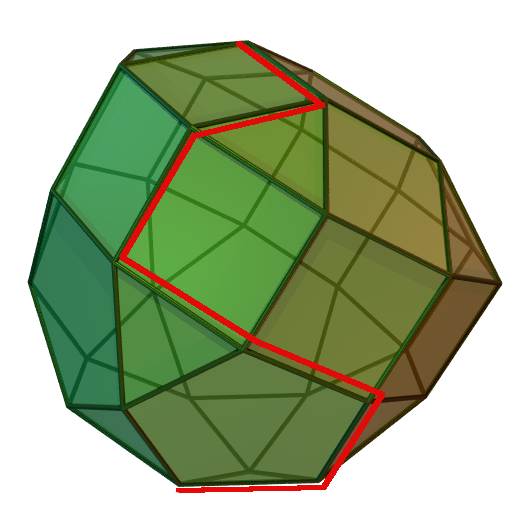
But on a more basic level, within the supposedly casual and passive act of browsing information online, algorithms are constructing more and more of our typical experiences on the Web. Moreover they are constructing and deciding what content we browse for. A couple of weeks ago John Naughton wrote a rather Foucaultian piece for the Guardian online, commenting on the multitude of algorithmic methods which secretly shape our behaviour. It’s the usual rhetoric, with Naughton treating algorithms as if they silently operate in secret, through the screens in global board rooms, and the shadowy corners of back offices dictating the direction of our world – x-files style.
‘They have probably already influenced your Christmas shopping, for example. They have certainly determined how your pension fund is doing, and whether your application for a mortgage has been successful. And one day they may effectively determine how you vote.’
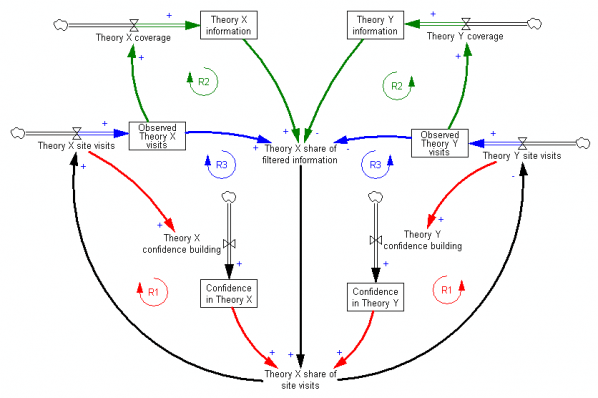
The political abuse here is retained in the productive means of generating information and controlling human consumption. Naugnton cites an article last month by Nick Diakopoulos who warns that not only are online news environments saturated with generative algorithms, but they also reveal themselves to be biased, masquerading as ‘objective’. The main flaw in this being ‘Summerisation‘; that relatively naive decision criteria, inputted into a functional algorithm (no matter how well-designed and well intentioned) can process biased outputs that exclude and prioritise certain political, racial or ethical views. In an another (yet separate) TED talk, Eli Pariser makes similar comments about so-called “filter bubbles”; unintended consequences of personal editing systems which narrow news search results, because high developed algorithms interpret your historical actions and specifically ‘tailor’ the results. Presumably its for liberal self-improvement, unless one mistakes self-improvement with technocratic solipsism.
Earlier this year, Nextag CEO Jeffery Katz wrote a hefty polemic against the corporate power of Google’s biased Pagerank algorithm, expressing doubt about its capability to objectively search for other companies aside from its own partners. This was echoed in James Grimmelmann’s essay, ‘Some Skepticism About Search Neutrality’, for the collection The Next Digital Decade. Grimmelmann gives a heavily detailed exposition on Google’s own ‘net neutrality’ algorithms and how biased they happen to be. In short, Pagerank doesn’t simply decide relevant results, it decides visitor numbers and he concluded on this note.
‘With disturbing frequency, though, websites are not users’ friends. Sometimes they are, but often, the websites want visitors, and will be willing to do what it takes to grab them.’
But lets think about this; its not as if on a formal, computational level, anything has changed. Algorithmic step by step procedures are mathematically speaking as old as Euclid. Very old. Indeed, reading this article wouldn’t even be possible without two algorithms in particular: the Universal Turing Machine, the theoretical template for programming which is sophisticated enough to mimic all other Turing Machines, and the 1957 Fortran Compiler; the first complete algorithm to convert source code in executable machine code. The pioneering algorithm responsible for early languages such as COBOL.
Moreover, its not as if computation itself has become more powerful, rather it has been given a larger, expansive platform to operate in. The logic of computation, the formalisation of algorithms, or, the ‘secret sauce’, (as Naughton whimsically puts it) have simply fulfilled their general purpose, which is to say they have become purposely generalised, in most, if not all corners of Western production. As Cory Doctorow put in 2011’s 28c3 and throughout last year, ‘We don’t have cars anymore, we have computers we ride in; we don’t have airplanes anymore, we have flying Solaris boxes with a big bucketful of SCADA controllers.’ Any impact on one corner of computational use affects another type of similar automation.
Algorithms in-themselves then, haven’t really changed, they have simply expanded their automation. Securing, compressing, trading, sharing, writing, exploiting. Even machine-learning, a name which infers myths of self-awareness and intelligence are only created to make lives easier through automation and function.
The fears surrounding their control are an expansion of this automated formalisation, not something remarkably different in kind. It was inevitable that in a capitalist system, effective procedures which produce revenue would be increasingly automated. So one should make the case that the controlling aspect of algorithmic behaviour be tracked within this expansion (which is not to say that computational procedures are inherently capitalist). To understand algorithmic control is to understand what the formal structure of algorithms are and how they are used to construct controlling environments. Before one can inspect how algorithms are changing daily life, and environmental space, it is helpful to understand what algorithms are, and on a formal level, how they both work and don’t work.
The controlling, effective and structuring ‘power’ of algorithms, are simply a product of two main elements intrinsic to formal structure of the algorithm itself as originally presupposed by mathematics: these two elements are Automation and Decision. If it is to be built for an effective purpose, (capitalist or otherwise) an algorithm must simultaneously do both.
For Automation purposes, the algorithm must be converted from a theoretical procedure into an equivalent automated mechanical ‘effective’ procedure (inadvertently this is an accurate description of the Church-Turing thesis, a conjecture which formulated the initial beginnings of computing in its mathematical definition).
Although it is sometimes passed over as obvious, algorithms are also designed for decisional purposes. Algorithms must also be programmed to ‘decide’ on a particular user input or decide on what is the best optimal result from a set of possible alternatives. The algorithm has to be programmed to decide on the difference between a query which is ‘profitable’ or ‘loss-making’, or a set of shares which are ‘secure’ or ‘insecure’, or deciding the optimal path amongst millions of variables and constraints, or locating various differences between ‘feed for common interest’ and ‘feed for corporate interest’. When any discussion arises on the predictive nature of algorithms, it operates on the suggestion that it can decide an answer or reach the end of its calculation.

Code both elements together consistently and you have an optimal algorithm which functions effectively automating the original decision as directed by the individual or company in question. This is what can be typically denoted as ‘control’ – determined action at a distance. But that doesn’t mean that an algorithm suddenly emerges with both elements from the start, they are not the same thing, although they are usually mistaken to be: negotiations must arise according to which elements are to be automated and which are to be decided.
But code both elements or either element inconsistently and you have a buggy algorithm, no matter what controlling functionality it’s used for. If it is automated, but can’t ultimately decide on what is profit or loss, havoc ensues. If it can decide on optimised answers, but can’t be automated effectively, then its accuracy and speed is only as good as those controlling it, making the algorithm’s automation ineffective, unreliable, or only as good as human supervision.
“Algorithmic control” then, is a dual product of getting these two elements to work, and my suggestion here is any resistance to that control comes from separating the two, or at least understanding and exploiting the pragmatic difficulties of getting the two to work. So looking at both elements separately (and very quickly), there are two conflicting political issues going on and thus two opposing mixtures of control and non-control;
Firstly there is the privileging of automation in algorithmic control. This, as Slavin asserts, examines algorithms as unreadable “co-evolutionary forces” which one must understand alongside nature and man. The danger that faces us consists in blindly following the automated whims of algorithms no matter what they decide or calculate. Decision-making is limited to the speed of automation. This view is one of surrendering calculation and opting for speed and blindness. These algorithms operate as perverse capitalist effective procedures, supposedly generating revenue and exploiting users on their own well enough (and better than any human procedure), the role of their creators and co-informants is a role best suited to improving the algorithm’s conditions for automation or increasing the speed to calculate.
Relative to the autonomous “nature” of algorithms, humans are likely to leave them unchecked and unsupervised, and in turn they lead to damaging technical glitches which inevitably cause certain fallouts, such as the infamous “Flash Crash” loss and regain on May 6th 2010 (its worrying to note that two years on, hardly anyone knows exactly why this happened, precisely insofar no answer was decided). The control established in automation can flip into an unspeakable mode of being out of control, or being subject to the control of an automaton, the consequences of which can’t be fully anticipated until it ruins the algorithm’s ability to decide an answer. The environment is now subject to its efficiency and speed.
But there is also a contradictory political issue concerning the privileging of decidability in algorithmic control. This as Naughton and Katz suggest, is located in the closed elements of algorithmic decision and function. Algorithms built to specifically decide results which only favour and benefit the ruling elite who have built them for specific effective purposes. These algorithms not only shape the way content is structured, they also shape the access of online content itself, determining consumer understanding and its means of production.
This control occurs in the aforementioned Simplex Algorithm, the formal properties which decide nearly all commercial and business optimising; from how best to roster staff in supermarkets, to deciding how much finite machine resources can be used in server farms. Its control is global, yet it too faces a problem of control in that its automation is limited by its decision-making. Thanks to a mathematical conjecture originating with US mathematician Warren Hirsch, there is no developed method for finding a more effective algorithm, causing serious future consequences for maximising profit and minimising cost. In other words, the primary of decidability reaches a point where it’s automation is struggling to support the real world it has created. The algorithm is now subject to the working environment’s appetite for efficiency and speed.
This is the opposite of privileging automation – the environment isn’t reconstructed to speed up the algorithm automation-capabilities irrespective of answers, rather the algorithm’s limited decision-capabilities are subject to the environment which now desires solutions and increased answers. If the modern world cannot find an algorithm which decides more efficiently, modern life reaches a decisive limit. Automation becomes limited.
——————–
These are two contradictory types of control; once one is privileged, the other recedes from view. Code an algorithm to automate at speed, but risk automating undecidable, meaningless, gibberish output, or, code an algorithm to decide results completely, but risk the failure to be optimally autonomous. In both cases, the human dependency on either automation or decision crumbles leading to unintended disorder. The whole issue does not lead to any easy answers, instead it leads to a tense, antagonistic network of algorithmic actions struggling to fully automate or decide, never entirely obeying the power of control. Contrary to the usual understanding, algorithms aren’t monolithic, characterless beings of generic function, to which humans adapt and adopt, but complex, fractured systems to be negotiated and traversed.
In between these two political issues lies our current, putrid situation as far as the expansion of computation is concerned – a situation in which computational artists have more to say about it than perhaps they think they do. Their role is more than mere commentary, but a mode of traversal. Such an aesthetics has the ability to roam the effects of automation and decision, examining their actions even while they are, in turn, determined by them.
* With special thanks to the artist and writer Paul Brown, whom pointed out the longer history of the FFT to me.
MaKey MaKey is a kit that lets you turn anything into a controller. Let your imagination go wild!
Codasign in partnership with Furtherfield will be running two MaKey MaKey workshops for children and their parents at Furtherfield Gallery on Saturday 16 February: a morning session with 6-9 year olds (10-12pm) and an afternoon one with 9-12 year olds (1-4pm).
All supporting material for the workshop will be available at learning.codasign.com.
What will you do and learn?
During this workshop, the children will practice using computational thinking and interactive design through a variety of activities.
What do you need to already know?
You only need to have big ideas – no other experience required.
What do you need to bring?
You need to bring a laptop and an adult. The same adult can accompany multiple children. If you aren’t able to bring a laptop, just let us know by adding a note to your registration or e-mailing info@codasign.com.
What will be available during the workshop?
There will be drinks available, but you are welcome to bring along some snacks to feed your creativity.
Cancellation Policy
Full refund if registration is cancelled over a week before the course start, 50% if within a week of the course start, and no refund if within 24 hours of the course start.
VISITING INFO
Furtherfield Gallery
McKenzie Pavilion
Finsbury Park, London, N4 2NQ
Scratch is a programming environment that is easy to use and created with children in mind. Create and share your own interactive stories, games, music and art!
Codasign in partnership with Furtherfield will be running two Scratch workshops for children and their parents at Furtherfield Gallery on Saturday 09 February: a morning session with 6-9 year olds (10-12pm) and an afternoon one with 9-12 year olds (1-4pm).
Please book your place.
All supporting material for the workshop will be available at learning.codasign.com.
What will you do and learn?
You will design and make a game or animation using the Scratch environment.
What do you need to already know?
You only need to have big ideas – no other experience required.
What do you need to bring?
You need to bring a laptop and an adult. The same adult can accompany multiple children. If you aren’t able to bring a laptop, just let us know by adding a note to your registration or e-mailing info@codasign.com.
What will be available during the workshop?
There will be drinks available, but you are welcome to bring along some snacks to feed your creativity.
Cancellation Policy
Full refund if registration is cancelled over a week before the course start, 50% if within a week of the course start, and no refund if within 24 hours of the course start.
VISITING INFO
Furtherfield Gallery
McKenzie Pavilion
Finsbury Park, London, N4 2NQ
We live in a world riddled with contradictions and confusing signals. Our histories are assessed, judged and introduced as fact yet there are so many bits missing. We accept what is given through soundbite forms of mediation and end up using the easy bits as our defaults, and build up these assumptions as our ‘imagined’ guidelines. This article examines how these accepted defaults are being challenged by contemporary artists. Each have expressed their own particular (unofficial and official) form of interventions at the Tate Gallery. Featuring art works produced by artists’ and art groups, such as Graham Harwood, Platform, IOCOSE and Tamiko Thiel, we explore their connected enactments and critiques of the existing conditions. Whether it is based on economic, ecological, historical, political or hierarchical situations, they are making others aware of their creative arguments in different ways.
You will not see them accepting an award at the Turner Prize. But, their work has become as equally significant (perhaps even more) than, the mainstream art establishment’s franchised celebrities. There is now wider art audience out there, connected to the Internet and they are aware of the issues of the day. Yet, this context is not reflected back by traditional art venues and art press. Instead, we receive more of the same. The mainstream version of contemporary art has found its allies within a global and corporate culture, where business dictate’s art value. Critical and imaginative contexts contrary to neoliberal demands, are left aside. We cannot trust the ‘official’ art world to produce a realistic vision of what contemporary art really is. It is up those who are not reliant on or diverted by these powerful frameworks and elusive economies, to bring about a different set of examples of an existing parallel world which is thriving, and so much more interesting and relevant.
“Art is subject to a double protection. In the market, it is shielded from unwarranted treatment through controlled ownership. In the museum world, experts decide what should be seen, alongside what, with what interpretation and in what circumstances. A wide public is courted but allowed no power over what it sees. The very ethos of this culture—of exclusivity, elitism and control—is now at odds with the culture people make themselves.” [1] (Stallabrass 2011)
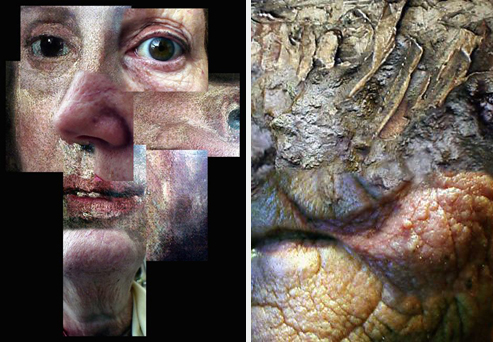
“From adolescence I had visited the Tate, read the Art books and generally pulled a forelock in the direction of the cult of genius, on cue relegating my own creativity to the Victorian image of the rabid dog. We know well enough that this was how it was supposed to be. The historical literature on ‘rational recreations’ states that, in reforming opinion, museums were envisaged as a means of exposing the working classes to the improving mental influence of middle class culture. I was being inoculated for the cultural health of the nation.”[2] (Harwood)
In 2000, Graham Harwood[3] received the first Net Art online commission from the Tate Gallery London for the creation of his art work ‘Uncomfortable Proximity'[4]. Viewing the visual images/collages created by Harwood; reminds one of the moment when Dorian Gray in Oscar Wilde’s ‘The Picture of Dorian Gray'[5] views his disfigured self portrait. Considered a work of classic gothic fiction with a strong Faustian theme. The facade of his own idealised beauty is revealed as something less attractive and deeply disturbing. Harwood’s approach in offering the viewer to click on the image to see what lies behind shows the people he represents, to be seen as lurking secrets, as ghosts, mutants, lepers and outsiders.
![Dorian in front of his portrait in the 1945 film The Picture of Dorian Gray.[6]](http://www.furtherfield.org/wp-content/uploads/2012/12/dorian-gray.jpg)
“Tate Britain stands on the site of Millbank penitentiary incorporating part of the prison within its own structure. The bodies of many of the inmates remain concreted into the foundations of the building. The drains that run from the building to the Thames, a stones through away, bleed this decay into the silt of the Thames.”[7] (Harwood 2006).
Harwood brings to the fore the forgotten people. The lives of others, whose stories are now just distant markers of a past, dominated by a colonial history. These are the losers, the then ridiculed and exploited chavs of their day.
“‘Chav’ is an insulting word exclusively directed at people who are working class.”[8] (Jones 2012).
The first section of ‘Uncomfortable Proximity’ maps high society rituals of tastefulness and its inherent hypocrisy. The second, representations and histories of different people such as friends, family and others, who are unseen in terms of the institution’s remit of tastefulness. To do this he used the historically respected paintings (on-line images) on the Tate web site by artists such as Turner, Hogarth, Hamilton, Gainsborough, Constable and others.
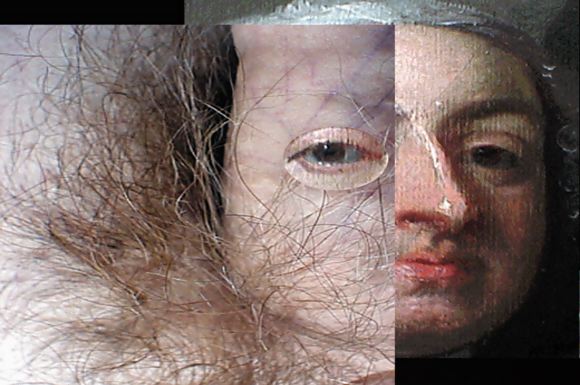
“This work forced me into an uncomfortable proximity with the economic and social elite’s use of aesthetics in their ascendancy to power and what this means in my own work on the internet.”[9] (Harwood 2006)
London’s Tate Britain area, before it was reconstructed into an art gallery, in the early 19th century was a national prison. The Millbank Penetentiary, was hailed as the greatest prison in Europe, at a cost of £500,000 it was finally built in 1821. It was Jeremy Bentham, the British philosopher and philanthropist who designed it using his pionering ideas creating the prison as a ‘panopticon’.
“At its centre was the Governor’s House, which allowed prison guards to keep watch over 1,500 transportation prisoners housed in separate cells in the surrounding pentagonal blocks. There were three miles of cold, gloomy passages: the turnkeys invented a code of chalked directions to stop getting lost in the maze!”[10]
Sentenced prisoners were processed in the prison each year and up to 4,000 would then be sent off to distant lands, such as Australia. Within the panopticon, prisoners would not know whether they were being watched or not.
“The panopticon Panoptic power built into the architecture of Benthams’ prison Prefigured what some refer to as the “electronic panopticon” or “surveillance society” which includes: the mass surveillance & collection of data by government on populations; the surveillance & collection of data on consumers for marketing purposes; the management surveillance & control of the workforce by industry.”[11] (Ballantyne)

Somehow Harwood manages to bite at the hand that feeds him, “the artist very deliberately used the work to question the role of digital media in promotion and collection. His Web site copied the Tate publicity site, with his own content inserted, causing substantial institutional disruption around the marketing department because the Tate’s Web site, in common with those of many art museums, was seen primarily as a marketing tool, then perhaps as interpretation, but never before then as a venue for digital art.[12] (Cook, 2001).
At his point it’s worth considering how some artists have experimented with the behaviour of parasites in order to explore their artistic autonomy at the edge of things. The rise of hacking and ‘art and hacktivism’ has brought about artists reimagining their creative intentions not in terms of existing within the frameworks of galleries and museums (although many do show their work in these types of venues as well). Many have chosen not to comply to the ‘official’ script of marketing demands and values imposed by mainstream art world hegemony, or concede to centralised web 2.0 structures dominating Internet culture and our mobile networks.
“The word ‘parasite’ comes from ‘para sitos’, meaning ‘beside the grain’, and refers to those animals that take advantage of grain stores to feed. […] they are not part of the restricted economy of exchange, profit, and return that is at the heart of capitalism, and to which everything else ends up being subordinated and subsumed. Thus they find an enclave away from total subsumption not outside of the market, but at its technical core.”[13] (Gere 2012)
![Haw under arrest before the State Opening of Parliament in 2010. Photo: Jeff Moore. Telegraph.[14]](http://www.furtherfield.org/wp-content/uploads/2012/12/haw-police_1924712b.jpg)
In June 2001, activist Brian Haw began his protest against the economic sanction on Iraq, opposite the Palace of Westminster in central London, until his death of lung cancer in June 2011. He earned himself a place in the history books for what he devoted ten years of his life doing, camping in a tent outside the Palace with numerous placards. First it started with only a few banners and then through the years the number of banners accumulated, with its content pointing out to the public and politicians, the huge suffering and killing of people in Iraq supported by the UK government. “Even as fresh attempts were begun to oust him, he won an award for being that year’s ‘most inspiring political figure’.”[15] (Stevenson 2011)
In 2006-7 British artist Mark Wallinger created an installation called State Britain, replicating all of the tents and banners at Parliament Square. Featuring it as his main entry for the Turner Prize at Tate Britain. “Faithful in every detail, each section of Brian Haw’s peace camp from the makeshift tarpaulin shelter and tea-making area to the profusion of hand-painted placards and teddy bears wearing peace-slogan t-shirts has been painstakingly sourced and replicated for the display.”[16] It also included copies of other people’s contributions, consisting of messages and banners amassed by Haw over the years, as a constant and dedicated daily protester, winning Wallinger the Turner Prize.
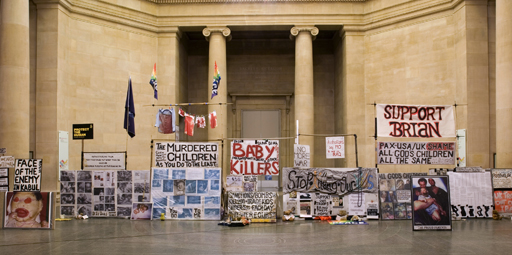
“…the larger hand-painted signs are defanged by their new context. “Beep for Brian,” once an irreverent call-to-arms taken up by many motorists plowing through the Westminster traffic, has become an absurdity, un-honkably sealed within the echoing marble box of the Tate. Never has the notion of the “lost original,” that timeworn legacy of Duchamp’s ready-mades, carried such a melancholic charge.” [17] (Street)
In contrast to his peers who also came out of the YBA (BritArt) movement in the late 80s and early 90s, which includes individuals such as Damien Hirst, Rachel Whiteread and Tracey Emin, Wallinger is a committed socialist. Damien Hirst was “the leading light in the YBA movement, is a famously good businessman and is now one of the richest men in England.”[18] (Shaw 2011)
“I did feel removed from the YBA thing. But it almost immediately raised people’s game. There was money and there was an audience. Or, to be strictly accurate, there was money – it really was a very targeted strategy to begin with – and the audience came along a bit later.”[19] (Wallinger 2011)
Wallinger’s comments about the audience coming along later rings true. The power of money and marketing created an audience that before,was not there, specifically for the YBA’s. Emerging artists at the time, who were not part of this elite where left out of the picture, not because of their art but because of their lack of connections with YBA circles. Many artists casted their creative intentions and values aside and re-invented their art in accordance to YBA themes, with a hope they would be accepted by this (then) new, mainstream art establishment. From the early 80s, and well into the 90s, UK art culture was dominated by the marketing strategies of Saatchi and Saatchi, a formidable force in the advertising world. The same company had been responsible for the successful promotion of the Conservative party (and conservative culture) that had led to the election of the Thatcher government in 1979. Saatchi and Saatchi Applied their marketing techniques and corporate power, with an accomplished parallel coup within the British art scene, creating an elite of artists who embraced the commodification of their personalities alongside depoliticized artworks.
Stewart Home proposes that the YBA movement’s evolving presence in art culture fits within the discourse of totalitarian art “the critics who theorise the yBa understand that by transforming art into a secular religion, rather than a mere adjunct of the state, liberalism imposes its domination over the ‘masses’ far more effectively than National Socialism. The focus, especially in the mass media, must be on the artists rather than the artwork.”[20] (Home 1996)
“To be an artist is to contend with the present, and there are not many other careers that afford the freedom to radically examine life and society. To put it bluntly, if artists are studying and writing more about politics, culture, and education, it’s probably a reflection of the unprecedented dysfunctionality of the societies in which they live.”[21] (Deck 2005)
Every now and then something slips through the highly taught institutional web of marketed ideologies and it causes a state of ‘healthy’ unease. One such intervention is the recent collaborative project Tate à Tate.[22] It is a public intervention consisting of an audio guide that people can download onto their MP3 players or mobile phones. The material is accessible from http://tateatate.org – you download a selection of audio files and then take a physical tour to Tate Britain. It is best experienced if you take the Tate Boat to Tate Modern, or you can listen at home. The artists selected to make the sound works are Ansuman Biswas, Phil England, Jim Welton, Isa Suarez, Mark McGowan and Mae Martin.
Mark McGowan, through his daily and weekly online video broadcasts on Youtube and Vimeo, has gained a large Internet-based audience. His videos have appeared on the BBC and the Russia Today news channel. He is a performance artist and constant ‘angry’ critic of the UK government. He has never voted and, is equally critical towards whatever party happens to be in power at the time. Mcgowan’s antics have received interest because of the directness of his arguments. He speaks for and to those who do not have a voice. He reflects upon unjust situations happening in real life. He has become an alterantive force to a ‘politically’ corporate media, who offer no way in for those are not already connected with the elites of institutionalized power.
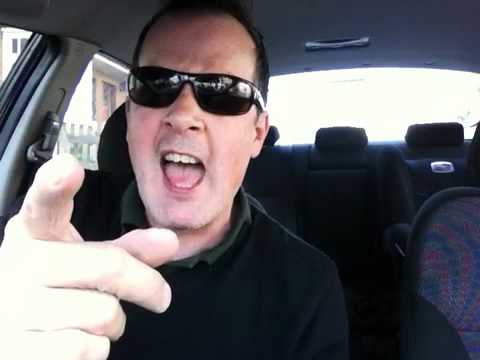
McGowan, has caused various controversies. In 2007, during Celebrity Big Brother when Jade Goody made what seemed to be racists remarks to her house-mate Shilpa Shetty; he publicised an event in support of Goody, which was a protest to burn an effigy of shetty. In the end did not take place.
His position, was that working class people were being used by the media as product to feed a machine, exploiting everyday people’s vulnerabilities. It is also an attack on the media invention of ‘Chavs’, a deliberate attempt to demonise the working classes of Britain. In retrospect, many viewed incident on Celebrity Big Brother as a clash of classes, and not necessarily a rascist issue. But, it was all too late, the media took control of what it saw as a chance to create a larger spectacle out of an already bleak situation.
“The media despised her. […] ‘Vote the pig out!’ demanded the Sun, which also referred to her as an ‘oinker’. Others taunted her as a vile ‘fishwife’ and ‘The Elephant woman’. As the campaign became a hysterical witch-hunt (indeed, one fo the headlines was: ‘Ditch the Witch!’), members of the public stood outside of the studios with placards reading: ‘Burn the Pig!’.” [23] (Jones 2012)
Dominant ideologies are cultivated hegemonically as part of the mainstream consciousness. And even though, the messages communicated through these channels do not accurately reflect real life, they do reflect stereotypes and easy packages of soundbite items on a cruder (lack of) understanding of what human values are, indivudally and collectively. These ‘mediated’ structures, socially re-construct according to ‘commercialised’ trends rather than looking at deeper resonances. Which should also include a necessary critique of their own roles and responsibilities, aksing what does it do to the psyche of a culture when you creating a spectacle out of the everyday; from fantasy into a permanant state of hyper-reality for profit?
“The poverty of the accepted culture and its monopoly on the means of cultural production lead to a corresponding impoverishment of the theory and manifestations of the avant-garde. But it is only within this avant-garde that a new revolutionary conception of culture is imperceptibly taking shape. Now that the dominant culture and the beginnings of oppositional culture are arriving at the extreme point of their separation and impotence, this new conception should assert itself.” [24] (Debord 1957)
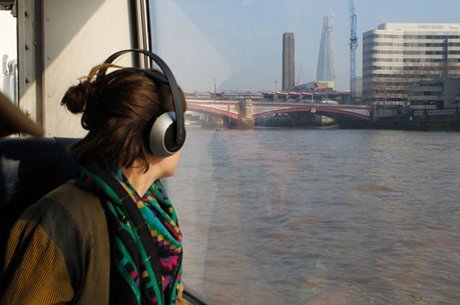
In art, in politics, and in all avenues of power in our culture, the working classes have no voice. It seems that the only way to claim personal power is by submitting to the embarrassing scenario of applying as a contestant on what is ironically termed as reality TV. and, this involves singing someone else’s already ‘bland’, tedious songs, usually written by corporate music media. The divide of class is ever present as colonial systems prevail in exploiting not only foreign resources and the destruction of indigenous peoples’ histories and their ways of living; but also in the very states and countries where these corporate ‘friendly’ neoliberalist cults reside. In respect of oil and funding of the arts, Tate à Tate pulls these issues out from being hidden into a mainstream dialogue through their own interventions.
As the markets have gained an increasingly tighter hold on global economics and everyday people’s lives, a rise of international protests has also gained impetus. We have the Occupy protests which have spread from Wall Street to London to Bogota, in over 950 cities in 82 countries. We also have the UK Uncut protest movement challenging the government’s austerity cuts. The Internet has been a valuable medium, allowing people to connect and organise together. This has enhanced crossovers where artists have become activists and activists artists. New forms of ‘networked’ and ‘activist’ expression, exploiting the imaginative skills of artists (and others) has brought brought about a mix of ideas once used by the Situationists. If you are a typical gallery attendee or a purchaser of mainstream art magazines, awareness of current political and ecological issues through these cultural interfaces are rare. Interventionist art challenges this standard. Causing a social anomaly, fracturing the facade of what we are usually informed of as ‘national’ value.
Tate a Tate is a collaboration between the groups Platform, Liberate Tate and Art Not Oil. The work was a response to when BP was promoting its sponsorship activities in the run-up to the 2012 Olympics. Against the British Museum, the National Portrait Gallery, the Royal Opera House and Tate Britain, aligning themselves with BP (British Petroleum). By receiving sponsorship from BP they say these institutions are “legitimising the devastation of indigenous communities in Canada through tar sands extraction, the expansion of dangerous oil drilling in the Arctic, and the reckless business practices that lead to the deaths of eleven oil workers on the Deepwater Horizon. BP’s involvement with these institutions represents a serious stain on the UK’s cultural patrimony.”[25]
Mel Evans, Platform: “Tate à Tate began from a creative impulse to install something somehow immovable in Tate. Platform and Liberate Tate were collaborating on the publication ‘Not if but when: Culture Beyond Oil’, which features international artists work in response to the BP Gulf of Mexico catastrohpe, and sets out the key debates on oil sponsorship of the arts. We had noticed our critics were often alluding to a kind of inevitability of BP sponsorship.”
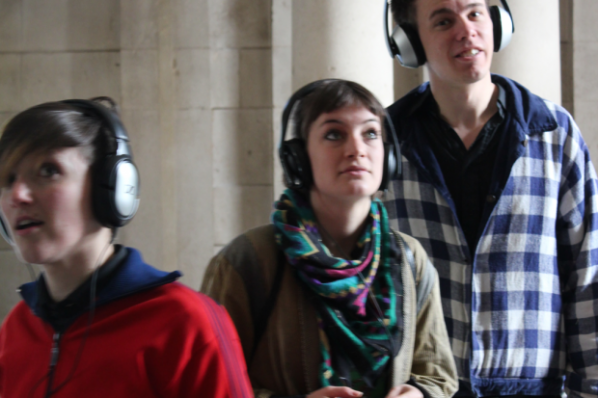
“Liberate Tate’s spectacular performances, although headline grabbing, had all been swiftly cleaned up by Tate staff. Although we knew tough questions were being asked by the Board of Trustees, and 8,000 members and gallery-goers had petitioned Director Nicholas Serota to drop the sponsorship, we also wondered to what extent Tate could absorb our efforts into its own politically savvy artistic persona. So the idea of an audio tour seemed the perfect way for us to create a permanent installation in Tate, challenging BP’s continued presence in the gallery, and recreated by every participant that takes the free download and goes ‘undercover’ in Tate.”
“The process began with a call out for proposals which received a terrific response. From this we came down to three proposals that we thought were equally fantastic and sufficiently different to all warrant exploration – which is where the three chapter journey was born, from Tate Britain to Modern via Tate Boat. From the launch in March 2012 onwards we quickly learned that participants were keen to pick a favourite of the three, their choices were hard to predict.”
“For some, the water related narratives in ‘This is Not An Oil Tanker’, created by Isa Suarez featuring Mae Martin, Mark McGowan and Jasmine Thomas, make the piece the most emotive experience. Others prefer the structure and highly informative content of ‘Drilling the Dirt (A Temporary Difficulty)’ by Phil England and Jim Welton, and likewise other tastes feel most comfortable in the more meandering and evocative ‘Panaudicon’ created by Ansuman Biswas. Panaudicon by Ansuman Biswas at the Tate Britain is by far the most successful… its interaction with and interpretation of its environment is a lot more complex. As initiators of a project with which we want to reach diverse audiences, we’re glad there’s something in there for everyone.”
![Winner of the recent Greenpeace Rebrand BP Competition. Designed by Laurent Hunziker [26]](http://www.furtherfield.org/wp-content/uploads/2012/12/rebranded.jpg)
You can understand why questions around the Tate’s association with BP is of utmost importance. Especially, when considering the oil company has had as many as 8,000 oil spills in the USA alone. There is a long list of disasters and much information linking BP’s troubling courtships with oppressive regimes. Shell, BP, Exxon, Gazprom, Rosneft and other companies, as I write this, are engaged in a frenzied rush in the Arctic risking yet another oil spill and threatening us with even more climate change. And all this effort is for only three years worth of oil.
‘”For over 800,000 years, ice has been a permanent feature of the Arctic ocean. It’s melting because of our use of dirty fossil fuel energy, and in the near future it could be ice free for the first time since humans walked the Earth. This would be not only devastating for the people, polar bears, narwhals, walruses and other species that live there – but for the rest of us too.” [27] (Greenpeace 2012)
Recently in 2012, BP agreed to pay the largest criminal fine in US history for its corporate negligence, in causing the catastrophic Deepwater Horizon oil spill in the Gulf of Mexico. “This was a disaster for the record books: The offshore exploratory well was the deepest drilling ever, plunging more than 30,000 feet through ocean and seabed strata, and the spill was the largest in U.S. history, spewing 206 million gallons of oil — nearly 20 times what the Exxon Valdez had dumped into Prince William Sound in Alaska a decade earlier.” [28] (Schiffman 2012).
In 2011, the New Orleans, LA. Attendees of the ‘Gulf Coast Leadership Summit’ witnessed a positive statement from a representative of the US Department of Health and Human Services (HHS) as he announced to everyone’s surprise a ban on toxic dispersants, and a new free health care plan for spill and cleanup victims. Not just that, there was also another progressive announcement by the BP co-presenter that day who publicly expressed regret for his company’s past actions, he said the oil giant would also pay the bill for the new health care plan.
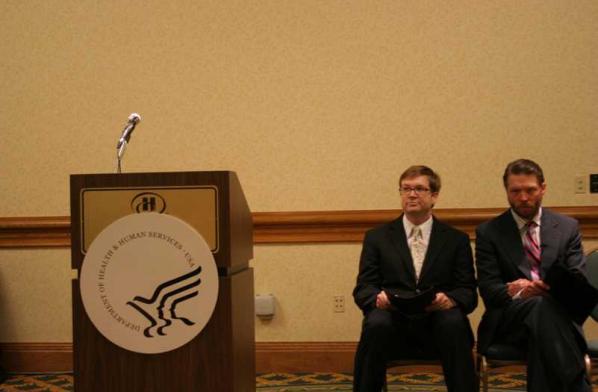
Of course, it was all to good to be true. it was a hoax by the Yes Men [29].
“…except for the audience, everyone was a fake. The impostors Dr. Dean Winkeldom and Steve Wistwil, both Gulf Coast residents, collaborated with the Louisiana Bucket Brigade[30], an organization whose goal is to create sustainable communities free from industrial pollution. The organization decided to create a hoax to publicize what should be happening in response to the emerging health crisis.” [31] (Flaherty 2011)
“The Louisiana Bucket Brigade action was supported by the Yes Lab, a project of The Yes Men that helps activist groups carry out media-getting creative actions on their own. Four years ago in New Orleans, The Yes Men impersonated an official from the Department of Housing and Urban Development to announce, among other things, that HUD would re-open public housing and make oil companies pay up for wetlands destruction.”[32] (ibid)
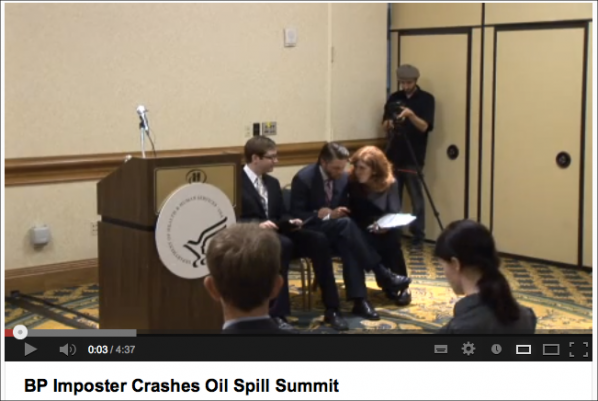
Morgan Quaintance reviewed it for Art Monthly and found that “the Tate Britain and Tate Boat works suffer from a confused sense of purpose… on the other hand, England and Welton’s Tate Modern piece is a note-perfect subversion of the standard form.
Meanwhile Kate Kelsall reviewing for Don’t Panic online reported “There is something irresistibly subversive about slinking around an establishment with your headphones in, taking orders from a voice that resembles a TomTom or sleep aid recording…
Jonathan Jones, after the Tate had renewed its deal with BP wrote in an article in the Guardian “Oh, give me a break. The campaign to stop Tate, the National Portrait Gallery and other museums from accepting money from Britain’s controversial petroleum outfit is the stupidest and most misplaced of supposedly radical campaigns. Why not do something useful like join Occupy? While protests around the world this year, from Wall Street to Tahrir Square, have picked the right causes and enemies, the BP art campaign is mistargeted, misconceived and massively self-indulgent.”
First off, some claims, some general, some particular. I’m going to use these to speak about the work under consideration and in turn call upon that work to support the claims. A kind of virtuous critical circle.
General: works of art are not messages but objects. They don’t say things nor ask questions, nor assert, nor investigate. Neither do they as objects have messages somehow encoded or embedded within them. To assert otherwise is a massive category error.
As objects they may of course be brought in evidence, copied, become conversation pieces, be described well, be described badly, be described perversely, be seen, be half seen, be missed, be lost, be found, be written about, point to things, be compared and many other things, some of which have not yet been imagined.
Further, artworks are fuzzily-bordered and not necessarily of a physical or temporal piece – the object is not simply the object (and ‘the object’ might not be physical but words, a concept, a sound recording, a protocol) but everything that accretes as a result of it – commentary, jokes, other artworks made in response. If mathematical terminology wasn’t so regularly and toe-curlingly abused in the arts, we might refer to them as manifolds, not necessarily connected.
Even the historical is not immune. There’s a reaching back in time where an established work is transformed retrospectively by homage – ‘Las Meninas’ an obvious case in point.
Also: the work of art is finite – it was born and it will, one day, cease to exist (and it will be forgotten, or there will be no-one to remember it). Everything changes, everything dies.
This implies, too, that although the individual author matters, as product of a unique formation and a unique set of locations in time and space, every artwork is socially authored.
Particular: Abraham’s work represents a new conjunction of technology, collaboration and performance as a generator of moving image. It has precursors (freely acknowledged, indeed celebrated) but it is qualitatively new. The moving image work comes in two flavours, fresh and preserved, both with their own particular and delicious savour. Abrahams conducts live performances on the internet. These performances occur singly, as pieces in themselves, or form part of the programme of events accompanying exhibitions. The moving image pieces in this show are all derivations of this kind of performative event. Except derivation has an air of the hierarchical and the types of piece form no hierarchy any more than fresh or smoked salmon do.
A final general claim: writing about art is not a science but itself an art. Sometimes the brush will be delicate and sometimes broad. There is no recipe or rules or template. One can be too delicate – sometimes confusion is good, particularly in the matter of the affective. Crude thinking sometimes gets us further, paralleling, not dissecting, the richnesses of work. There are some mysteries one should leave as such.
OK. Onwards and upwards…
Performative is currently a much used, some might say overused, word. One quite common usage is to suggest that a work contains visible or at least trackable traces of its own making, a kind of archaeological or sedimentary record, and that perhaps this might have been to varying degrees intentional.
Of course it’s arguable any work of art is performative in this way and that it’s quite hard to erase the trail behind you whether what you make is time based or photographic, sculpted or made with hand applied pigment of one sort or another. Continuous looking and thinking about art for any length of time, especially allied to making stuff oneself, whether dabbling or something more serious, hones an increasing sensitivity to these questions. And this matters; particularly when it comes to over-nice distinctions between close relatives such as the still and moving photographic image and esoteric arguments about how time is differently present or presented in each of these and in other further flung practices too. The new scholasticism feeds on ever finer such distinctions.
So it’s a relief to come across work, which is genuinely performative, enough so that even someone undrenched in theory can see it, can get it and can be delighted and exalted by it. Furthermore work that smells unmistakably of the human, that abuts the high and the low, the crude and subtle, that blurs boundaries, that borrows and echoes the work of others not with the pinched expression of someone with a theoretical framework but in a spirit of ‘why?’ and ‘let’s play’ – the two childish precursors of grown up science and art.
Annie Abrahams’ show at the Centre Régional d’Art Contemporain Languedoc-Roussillon in Sète is a graceful and elegant dog’s dinner of a show. Physically it’s odd, exiled to the upper floor (still a generous space) whilst Catherine Gfeller, someone altogether more easily glossed and hence exhausted (though not without merit) gets the more conventional downstairs galleries (and attracted the lion’s share of the press on the opening night.)
Said upper floor comes in two instalments – a lovely hangar type space, where a game of golf seems distinctly possible, with a kind of tail leading off it, a long thin corridor which fattens a little towards its farther end maybe 100 metres away.
The layout of the show utilises this peculiarity nicely. In the big room a very large two projection installation, Angry Women, spans one corner and takes up a considerable portion of the two adjacent walls.
In the far corner, diagonally opposite, a monitor, with two chairs and two sets of headphones, of which more later.
Leaving the larger space, two more monitor based pieces at junctions where it’s possible for an individual to sit and others to pass. Five chairs arranged in a circle with copies of two books of interviews on each (one with Abrahams, and one with a selection of other cultural figures) and highlighter pens. In the middle of the circle, a pile of blankets. A larger wall piece of rough and ready cardboard placards with texts (“mutuellement vulnérable”, “euphorie communicative”, many others) in various hands.
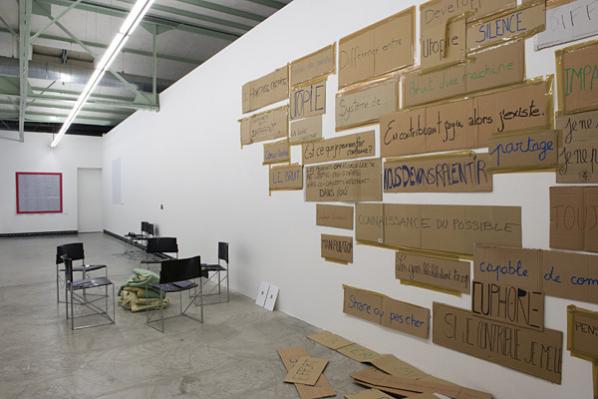
At the far end, a number of framed photo and images based pieces plus a work consisting of a single photograph and headphone delivered audio (it’s a snapshot – snapshot size, snapshot aesthetic – of husband and wife volunteer fire fighters. The audio is manipulated audio of texts on the subject of fear read by them. Let’s not try and place all this into any sort of context yet. Let’s set out our stall, enumerate, account, describe.)
A final deft touch is the symbolic linking of the two areas by a ribbon of text occupying the 15 or so centimetres above the floor, skirting board height, the topic of which appears to be mental illness (and all elegantly lettered except for one point where a letter had been omitted and is inserted with a caret symbol.)
Most of the pieces employ texts or performances – both gestural and textual – by others – often created according to some seed question or protocol. The texts often come from questions posed on the internet but sometimes from workshop or outreach type (type –this is to tentatively and provisionally locate the thing – it’s outreach Jim, but not as we know it) activity.
The performers in the moving image pieces are geographically dispersed but brought together at a single time by webcams and some custom software that Abrahams has used on a number of occasions where the web-cammed-in participants occupy a space in a rectangular grid (aficionados of seventies UK quiz shows such as Blankety Blank will get it immediately).
There’s a fragility, a delicacy, a tentative hold on existence, a testing of our belief, about these works that so many works of fine art – as opposed to design – have. The sense that what we have incorporates the idiosyncrasies, indeed the weaknesses of the support materials and media, into a final object (the same sense as when an artist wilfully uses something manifestly not intended for art, or allows mistakes to stand, or omits, or makes all too evident repairs; this is not new. Think pentimenti, or the hasty addition of an extra panel of canvas or paper to take account of expanding ambition or vision, or the aestheticized unevenness of Japanese tea-ware.) This sense of object-hood rather than message or statement is key. An objecthood which in retrospect could not have been other, but equally could not have been proposed, foreseen, except in its protocols of playfulness.
The pixellation, dropout, glitching, concomitant upon the pushing of the current state of the network to its limits in the multi participant pieces (and this reminds one of how flicker and roll and a general fuzziness become now part of the Acconci piece Abrahams draws upon in her Theme Song After Acconci – which reasons of space preclude too much detail about here – suffice it to say Abrahams honours, compresses, feminizes, satirises and intensifies the original. If Acconci could have had access to a “better” technology, one where the speed was constant, where no flicker or roll appeared, would he have then felt it served his purpose better? Did what he saw even look fuzzy or worn to him? Probably yes, compared with the film standards of the day, as does Abraham’s work compared with high end digital video [and even the current, rather good, quality of You Tube].)
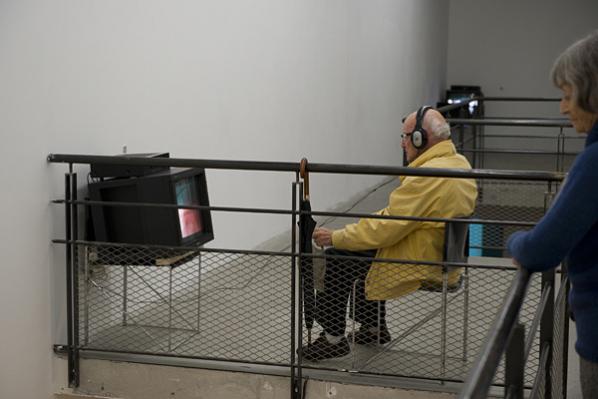
To offer participants a protocol is paradoxically both to assert and to cede control, to know and to not know how things will turn out (an analogy is the use of chance in the works of Polish composer Witold Lutosławski, where the mechanisms make the generality of the sound, its broad texture, predictable but any particular instance impossible to predict or even fully imagine [but all, please note, a matter of degree because the finer the grain, the greater the level of magnification, the more we can find such uncertainty in anything unfolding over time – it’s a question of our norms – what is the difference between the Stockhausen piano pieces where the performer can choose the order of segments and a Mozart sonata where the tempo may be quite widely varied? – in principle, none])
The piece Pourquoi avons-nous des difficultés à ouvrir un ordinateur et en changer le disque dur? plays on a single monitor with the screen divided into two areas. In each we see, sometimes with difficulty and ambiguously, parts of a computer, screws, connections and hands.
We hear two voices, one that of Abrahams and the other her co-performer, discussant, what have you, Eliza Fantozzi, speaking in French. In the version at Sète there are English subtitles which even for non English speakers provide a kind of functionality, meaning, in that the words tend to be positioned on a line from left to right according to who is speaking. When both speak suggestive gaps appear, though these cannot be read definitively).
The subtitles are in a strange (for a native English speaker) near-English (the title, for example, is translated as “Why do we have difficulties to open a computer and change its hard disk?”).
This is, it must be said, cute, amusing and engaging and it underscores the altogether naughty childlike quality of the entire interchange. The characters (for I think one should mistrust the assumption, however tempting, that we have here unmediated access to the actual participants) are playful – amused and amusing. At the same time they ruthlessly anatomise the roots of their difficulties with technology (but the performativity avoids being on–message in any sense and makes for something strange, complex and even uncomfortable. At one point Fantozzi complains of the lack of colour variety inside the machine and starts painting the components with nail varnish to “create a much merrier circuit” – Je crée un circuit beaucoup plus gai).
Later Abrahams lays into a ribbon connector with a pair of scissors and then starts apparently fringing it with regular cuts half way across … There is an association of the decorative, the playful and a rejection of the serious which is somewhat too close to many gender stereotypes to be entirely comfortable. (The piece was originally performed on international women’s day 2011) And yet, and yet – the end result is complex, for there is a steeliness to the play and a self respect and assertiveness. Perhaps (I don’t know. I don’t think there is a definitive answer. I don’t think close reading or theory can bring us it either) it is the very truthfulness, the richness of the incorporation of the world as it is and not as we might like it to be from which this springs.
Before we get to the physically largest and most imposing presence in the show we’ll look at its neighbour, comprising two chairs, a monitor and two sets of headphones.
Double Blind (Love) is a record of a 264 minute telematic performance by Annie Abrahams and the US artist Curt Cloninger which took place on November the 29th 2009. Annie Abrahams was in the Living Room (Espace de création contemporaine) Montpellier, France and Cloninger in the Black Mountain College Museum and Arts Center, Asheville, North Carolina, US.
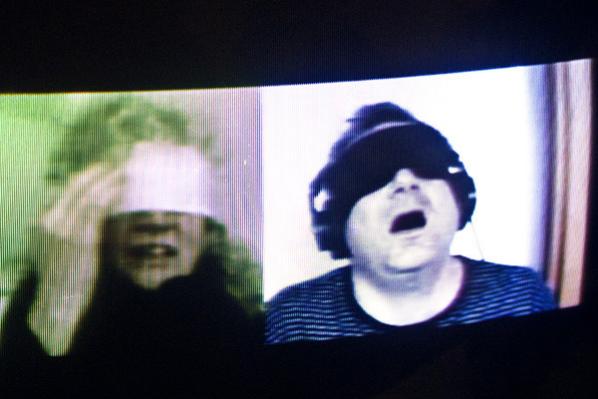
Both wore blindfolds for the entire duration of the performance, which was a joint telematic musical (and I use the word advisedly; though Abrahams describes Cloninger as a musician she appears to reject the description for herself. I think she is mistaken) performance taking the form of an improvisation, largely vocal but with some keyboard input from Cloninger, around a short musical cell from the track Until the End of the World by U2. The section in question has a repetition of the word “love” for its sole lyrical content and occurs just over midway through the song. It would perhaps ordinarily be described as a chorus but in fact appears only once in the song (although it continues as a backing vocal throughout the next verse), one of the first of many tiny idiosyncrasies on our pathway, peculiarities which add cumulative spice and interest to the project. I’d always found U2 banal and full of bombast but going to the song, under the circumstances of researching this piece, with necessarily open eyes and ears was a small epiphany, one of a number occasioned by a systematic engagement with Abraham’s work.
It’s worth noting that much of the structure of this piece came originally from Cloninger. In the previous year he had performed a number of pieces under the title “pop mantra” where in a live situation he repeated a similar pop music cell for a period of hours (“usually blindfolded”).
Cloninger had also video documented these performances though at this point this is documentation and lives no independent life of its own.
Let’s take a look at these proto ‘Double Blinds’. There is as yet no suggestion of interchange, of development. Although this is clearly a more obvious option with two performers, conscious development is not impossible in a solo performance. It does however appear to be consciously excluded. In an echo of the process or systems driven works of the seventies, Cloninger sets something in motion and allows it to unfold. He attempts to repeat the phrase many times. Presumably his arms start to ache and his voice to tire. This trial of endurance becomes a principal motor of the pieces. What does this evoke? For me, and you might share this, there are the dance marathons of the twenties, the notion of sport, especially individual sport, of pitting oneself against oneself; there is ritual repetition – Sufi whirling, or that carrying out of repetitive, gruelling and apparently pointless tasks sanctified in some Buddhist traditions; the pilgrimage; there is a kind of practical prayer through ritual, suffering or self-abnegation.
The motoric unwinding and associated characteristics obtain in Double Blind, too. What is new, what comes from Abrahams, is the telematic – the fact of separation by an ocean and the fact of collaboration. Indeed there is an inbuilt sharper contradiction as the collaboration separated by so much physical distance is of the peculiar intimacy that attends musical partnership, improvisatory or not. (A couple of years before Abrahams had performed a telematic kiss for three hours with the US artist Mark River.)
Despite Abraham’s denial the finished performance falls entirely within the established parameters of the musical. Precedents such as the work of Meredith Monk could be cited for Abraham’s compelling vocalisations – song, whisper, shout, scream, cry of pleasure, cry of pain – whose musico-dramatic logic and sensitivity to her performing partner, this listener at least, finds totally satisfying. It’s a touching partnership, with both performers bringing a fierce commitment to the task in hand but also each bearing different gifts – Cloninger, a formed musical sensibility supported by conventional skills and Abrahams a kind of discovery/invention of improvisation (indeed of music) ab ovo.
Thousands of years in 4 and half hours.
There is a formal challenge and satisfaction too, common to both Abraham’s and Cloninger’s concerns – how much transcendence can be mined, discovered, invented, from the small, the insignificant? Can it be exhausted before we are exhausted and what does the transfiguration brought about by the attempt suggest about us as human beings?
Two performers. Two chairs for two spectators only. Likewise, two sets of headphones.
Grace.
Opposite, stretching luxuriantly out, is the exhibition’s jewel in the crown – Angry Women, created by Abrahams and twenty two other women of many nationalities, speaking about anger; acting out, demonstrating, reflecting, on anger, on webcams from their different individual locations and in their native tongues, with the images being sent to the 3X4 grid, in a format that Abrahams has made her own. Because of the limits of even current streaming technology it was necessary to conduct two separate performances (separated by an interval of a couple of months). The length of each performance was determined by a protocol where a minute’s silence by all participants signalled the end. This resulted in pieces of differing lengths which lack of synchronisation adds another layer of fragile grace to the final projections, projected large on adjacent walls around the corner joining them with sound from the left images fed to the right speaker and vice versa.
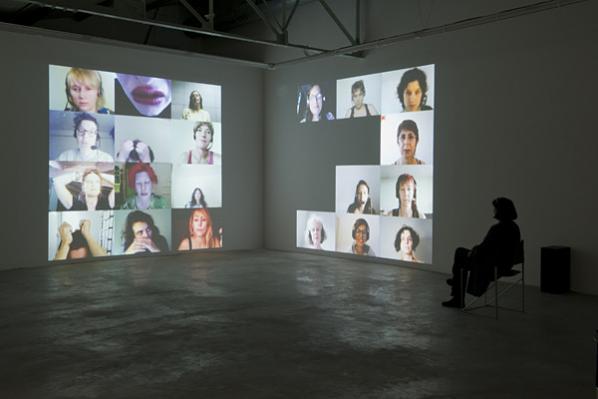
The effect is visceral – we face what feels like a wave of humanity, not so much in numbers, although 23 is impressive, but in the infinite malleability of the face, hands and of gesture and expression and of how these things can occupy the frame. Sometimes that frame will resemble a Giacometti portrait, with the subject appearing to recede into what seems to be endlessly deep space. At others red lips or an open mouth, sensual and terrifying by turns, occupy the whole of the space – and furthermore each cell is constantly in flux (because these are living, breathing unpredictable human beings). There is something both of portraiture and of the dance at work, and a species of found poetry too, which the moving image work has in common with the collaborative texts at the other end of the exhibition. The combination of iron control, planning, foresight (the grid, the protocols) with a letting go and a trust elsewhere – the phased lengths, the blank space for the person who didn’t turn up, the performative possibilities – makes for something of great richness.
Additionally it’s clear that those of the performers who have previous experience are consciously playing with and against their fellows – gestures are mirrored, sounds echoed, the fiction of looking elsewhere (to the side, or above) in the grid is impressively deployed.
The angry women turn out to be at one and the same time very particular –unique – women and women in general too; the women in general turn out to be human beings in general (and general en masse because each so particular) and the human beings in general turn out to live in this, one, our, very particular, world – that mysterious, frightening and wonderful place.
In keeping with the cheering on of lack of clarity, of mess, of crudity I’ve espoused so far in this piece (and will continue so to do, here and elsewhere) I want to say we need to take the exhibition (and the world) as a whole. Offering us the video and the still image pieces and audio means we cannot but think of them together (we can choose to artificially isolate pieces but we cannot undo our knowledge of that whole). So to the extent that I have selected topics here I have done violence to Abraham’s art, which has no message, is not confined to any one medium, collaborates in multiple ways, borrows, steals (and gives) and presents us with a set of marvellous and mysterious objects which afford us a spectrum of entirely new pathways to the world, to seeing it, talking and thinking about it, ourselves, after we have gone to the bar or got on the train north to Paris and thence homewards, happy and somehow a little changed.
—-
Training for a Better World – Annie Abrahams
Centre Régional d’Art Contemporain Languedoc-Roussillon, Sète, France
28/10/2011 to 01/01/2012
‘About 50% of global trade is channelled through tax havens and 83 of the 100 largest multinationals are based in the Netherlands for fiscal reasons. The flow of money seeks the path of least resistance – but where exactly do those paths lie today?’
This is how graphic designer Femke Herregraven began a presentation about her new online game Taxodus. Herregraven designed the prototype of Taxodus, a game about offshore tax avoidance, during a master class at Sandberg-Mediafonds. The offshore system offers companies advantages in countries where legislation relating to non-nationals guarantees certain privileges, for example, when it comes to corporate structures, in certain areas of business confidentiality, or low taxation. Taxodus is an accessible way to discover how you can avoid paying taxes, and if you can’t get away with it completely, how you can make sure you pay the lowest possible amount.
Annet Dekker: Taxodus is a game about offshore business practices. How does it work?
Femke Herregraven: As a player you choose an existing multinational company or bank with a specific profile and then you look for the most favourable countries to set up a subsidiary and accumulate income by paying as little tax as possible. Each country has a specific transaction profile. For example, companies involved with Intellectual Property Rights find the Netherlands most appealing, while oil companies are drawn to other countries. The game offers a random number of options and calculates what these yield for you. You can compare the results with other countries to achieve the game’s goal of reaching the end with as little expenditure as possible. The game is based on actual information on withholding tax in global tax treaties.
AD: This isn’t a topic you usually encounter in art. Where does your interest in this subject originate?
FH: In 2010 I was asked by the Virtueel Museum in Amsterdam to research the identity of the Zuidas during a residency. The Zuidas, which literally translates as ‘South Axis’, also known as the ‘Financial Mile’, is a large, rapidly developing business district in Amsterdam. Much like Richard Florida, they wanted to ‘cheer up’ the neighbourhood. My questions about the companies located there received only vague responses; there weren’t any lists, or names, or post boxes, and with the exception of known names like Google and Facebook, the other companies that are based there was a mystery. To trace what type of businesses might be located there I spent weeks indexing the entire Zuidas from the Chamber of Commerce’s trade register. I indexed the occupants by street and house number and then compiled three telephone books from the data. All sorts of unusual data and patterns became evident – some addresses only have one occupant, while others have more than a thousand of the so-called mailbox companies that only exist on paper. This is also apparent from the names: some only consist of Roman numerals.
All this information piqued my curiosity and I wondered why these companies were situated there and what they were up to. The next step was delving into Dutch tax law and it became clear that there are enormous financial benefits to setting up a company in the Netherlands. This is a major selling point when Holland is promoted abroad. The entire offshore system has operated below the radar for a long time – sometimes we catch a glimpse of it – but quite how it works in its entirety almost no one knows. The first step to understanding this is visualising it to gain insights, and then you can ask specific questions. Taxodus classifies this information by visualising it: from mining in the Congo to oil companies in Italy and Libya.
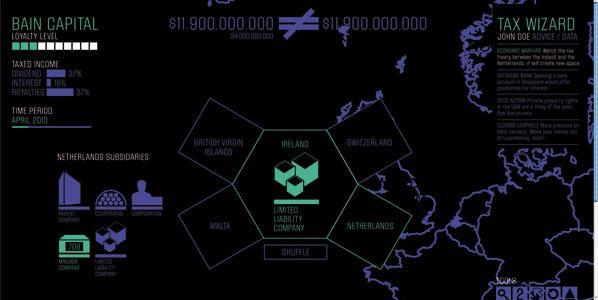
AD: It all sounds very murky!
FH: It’s all completely legal, but shady at the same time. If a foreign company doesn’t want to open a physical office in the Netherlands, it hires a trust office that takes care of the bookkeeping, drafts the annual reports and appoints a CEO. There are countless small trust offices that manage huge numbers of foreign companies on paper. Everything is done according to Dutch law and the tax benefits in Holland are hugely beneficial for foreign companies. For example, small businesses in the Netherlands pay more than thirty per cent tax, while foreign companies avoid a large part of that taxation due to tax planning. The presumption that foreign companies basing themselves in Holland is beneficial for national employment is also misleading because most of these companies only exist on paper and don’t employ anyone. The trust offices advise against opening a physical office and taking on any staff because Holland attaches great value to its employment policy, which makes dismissing personnel difficult. A ‘mailbox’ company avoids all these complications.
AD: But the way in which you visualise this is also subjective because you manipulate the data.
FH: Yes, I selected companies that people will know or which appeal to the imagination. Unfamiliar names won’t really be noticed, but once you realise that almost everyone participates in this system, from Mitt Romney’s Bain Capital, Walmart, Google and Facebook to Chanel, then it takes on a different immediacy or value for many people. If you look at this on a wider scale – globally – you will see, for example, that 60 per cent of large companies in Portugal, Italy, Greece and Spain use the Netherlands to take advantage of these types of constructions. This is legal and it’s also beneficial to the Netherlands, but when Dutch politicians insist on more transparency from Greece and lecture the country from up on high it smacks of hypocrisy. You see the same thing with a lot of development aid to countries in Africa: most of that money is diverted to the bank accounts of African leaders in offshore tax havens. Someone has done the maths: the debt of the entire African continent is less than the monies African leaders hold in offshore tax havens. A ‘mailbox’ company by itself is not that suspicious, but with everything else it creates the holes through which (public) money can disappear. My primary intention is to make these flows of money visible and question them, because once it’s out in the open people can decide for themselves if this is our idea of a sustainable economy.
AD: Of course, your game can also be interesting for existing companies who can use it to see where and how they can best invest? Is Taxodus the new Monopoly?
FH: Yes, in a way it is, but in reality companies have been doing this for ages. General Electric supposedly has a department employing about a thousand people who are busy with this on a full-time basis. I don’t think my game will suddenly improve things. Yet, the point is that the knowledge about international tax planning is now only in the hands of experts like fiscal lawyers and accountancy firms, and isn’t accessible to the rest of us. That’s also what Taxodus is about, making a tool so that we can track what they’re up to.
Monopoly is an interesting comparison because it originated as a critique of capitalism and private monopolies. The games are comparable, but Taxodus goes further. If you make a move in the game that correlates to reality then you are informed about this and receive a reality-bonus. It’s at this point in the game that investigative journalism comes into play.
AD: How do you relate to investigative journalism?
FH: My projects frequently begin from a journalistic position and for this one I meet with journalists, fiscal lawyers and researchers quite often. Yet, I’m a designer and I don’t want to write articles but use other methods to provide insights into topics. For me design is not an end in itself but a way to research, express and contribute to debates in society. This means also collaborating with other disciplines and experts: a group of fiscal experts is currently helping to remove errors and provide feedback. Obviously, it’s impossible to create a 1:1 translation, there will always be things that aren’t entirely accurate or that have to be left out, but it is important that the broad outlines are clear and correspond with reality.
AD: Why a game?
FH: Avoiding and evading tax is complex but you can learn the psychology of this system by playing the game. Taxodus is actually a kind of chess game. The rules aren’t simple and your eventual benefits depend on all sorts of interrelated factors. You have to continually take strategic decisions to advance in the game. All this information is incorporated into the game and the various tax treaties between different countries gradually become clearer. You are aided in this by advisors. At the start of the game you chose a particular advisor. Different advisors offer different advice, some will try to find legal alternatives while others try to convince you to bend the rules. Players can ask for a second opinion at any point in the game and manipulate regulations and treaties. This enables players to steer the game in the direction they choose. As in reality, a player has to have the possibility to have complete control. Ideally the game should be a do-it-yourself kit that you can add things to, an open game of strategy.
AD: What do you mean exactly? Can you name an example?
FH: The simplest way is to play it alone; the more complicated version is played with others in real time. At a certain point you can earn loyalty points by, for instance, evading high taxation for your parent company. Once you’ve arrived at the loyalty level, you can change roles, perhaps becoming a government employee who modifies regulations ever so slightly to make it more beneficial for yourself. You can also block other players in this way. This is an obvious reference to the increasing merging and blurring of the interests of large corporations and political leaders.
AD: How do you keep up with actual changes in the real world?
FH: It isn’t as if new information is constantly being made available – a lot of countries are reluctant or refuse to release ‘sensitive’ information. Tax treaties and regulation doesn’t change too often, but when they do, these changes will also be incorporated in the game. The English researcher Nicolas Shaxson, who is very active in charting the offshore system, says that people have to first become aware of what’s happening before they can think about how to deal with it. I hope my game and visualisations can contribute to this awareness raising.
AD: When or how does the game end?
FH: You have a certain amount of time before you have to submit an annual report for your company, then your trajectory is incorporated into the database and you can see what your score is. You can also compare it to other players and download their fiscal structure, which adds an element of competition and makes it a crowd-sourced investigation. By playing you contribute to the research and help expose the layers.
AD: Will Taxodus be a commercial success?
FH: My main concern is to make a tool that makes this small yet incredibly significant part of our opaque financial world more transparent, and especially more public. I think artists have a responsibility to broach topics like this. People find it all quite shocking when I tell them about Taxodus, but for those who are directly involved in the actual system it’s mere child’s play. This type of project can stimulate discussion and determine what is and what isn’t desirable.
This approach was shown to be successful with another project, the Art Reserve Bank. We set up a bank with a small group of artists and designers and introduced a new currency in the heart of the Zuidas as a way to encourage discussions about the financial sector. Our bank – a vault, an exchange counter and a glass house with a minting press: a bank brought back to basics – is located across from the ABN AMRO headquarters, and each day some of the employees and other people come by to see what we’re doing and have a chat. People also buy our coins, which are designed by a different artist each month. It doesn’t always go smoothly, but there is certainly enough curiosity. One problem is that people are personally interested but refuse to make any statements in a professional capacity. De Nederlandsche Bank (the Dutch central bank) recently sent us a letter stating that we cannot use the word ‘Bank’, threatened us with a fine of up to 2 million euros and invited us for a talk. These types of discussions are what we aim to achieve. Our goal isn’t necessarily to introduce a new currency; instead we want to underscore that fact that the bankers and financial experts of this world do not have exclusive rights to debate and decide what happens on financial markets.
———
A Dutch version of this interview appeared in Tubelight, September 2012.
Femke Herregraven: http://www.bitcaves.net
Sat 19 – Sun 20 January 2013: One Minute Volume 1-2
Sat 26 – Sun 27 January 2013: One Minute Volume 3-4
Sat 02 – Sun 03 February 2013: One Minute Volume 5-6
Contact: info@furtherfield.org
In partnership with 20-21 Visual Arts Centre, Furtherfield Gallery is pleased to host One Minute Volumes 1-6 curated by the film-maker Kerry Baldry over three consecutive weekends in January and February 2013. The programme will also be shown at 20-21 later in 2013.
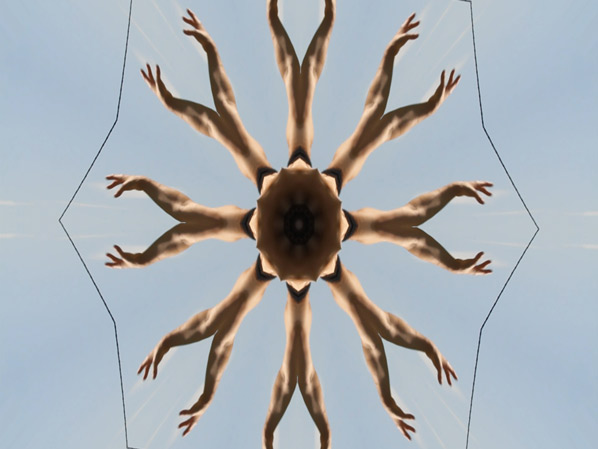
One Minute Volumes 1-6 are an eclectic mix of artists moving image constrained to the time limit of one minute and include over 80 artists at varying stages of their careers.
The artists involved range from established figures, such as Guy Sherwin and Catherine Elwes, to comparative newcomers through a multinational roster of those in between; and the methods deployed and content treated of are hugely diverse, a master class in the very short form film.
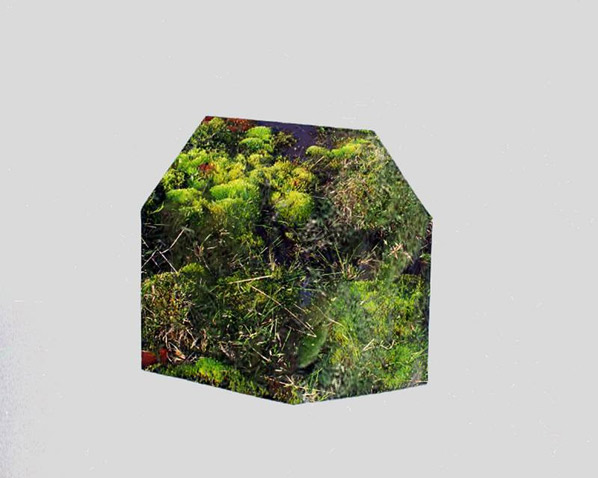
Gabrielle Schwartz writes in a recent review in Varsity, a Cambridge University publication:
‘There was no way of knowing what is going to come next; only that (while it might be beautiful, it might be funny, it might be incredibly weird) either way, it would be finished in a minute’s time – and so you might as well wait and see. This element of expectation as well as the consistently thought-provoking and entertaining quality propelled me through the volume, never once resulting in boredom’.
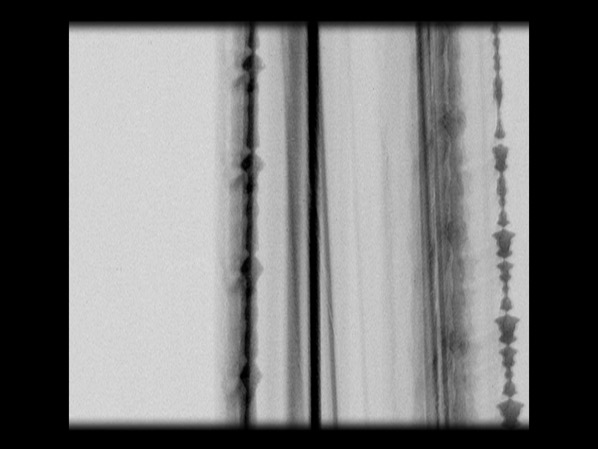
FACT in Liverpool, Artprojx Space – London, Directors Lounge – Berlin, London Underground Film Sessions – Horse Hospital, London. National Museum of Contemporary Art, in Bucharest, Plymouth Arts Centre, S1 Artspace – Sheffield, The Hull Short International Film Festival, Castlefield Gallery – Manchester, Peloton Gallery – Australia
Chris Meigh-Andrews, Kerry Baldry, Steven Ball, Kelvin Brown, Rose Butler, Daniela Butsch, Samantha Clark, Callum Cooper, Michael Cousin, Chris Paul Daniels, Gordon Dawson, Claudia Di Gangi, Fil Ieropoulos and Lilly Zinan Ding, Ron Diorio, Annabel Dover, Catherine Elwes, Clint Enns, Andy Fear, Unconscious Films, The Gluts, Dave Griffiths, Leister/Harris, Steve Hawley, Nick Herbert, Tony Hill, Virginia Hilyard, Elizabeth Hobbs, Riccardo Iacono, Hilary Jack, Tina Keane, David Kefford, Deklan Kilfeather, Kate Jessop, Nick Jordan & Jacob Cartwright, Esther Johnson, Helen Judge, Hollington & Kyprianou, Bob Levene, Barry Lewis, Lynn Loo, Paulo Menezes, Katherine Meynell, Louisa Minkin, Claire Morales, Kayla Parker and Stuart Moore, Jonathan Moss, Simon Payne, Alex Pearl, Gary Peploe, Martin Pickles, Stuart Pound, Laure Prouvost, Anahita Razmi, Emily Richardson, Nicki Rolls, Barbara Rosenthal, Jennifer Ross, Edwin Rostron, Matthew Rowe, Eva Rudlinger, Sam Renseiw and Philip Sanderson, Alex Schady, Janine Schneider, Margie Schnibbe, My Name Is Scot, Erica Scourti, Guy Sherwin, James Snazell, Tansy Spinks, Marty St.James, Priya Sundram, Michael Szpakowski, Richard Tuohy, Zhel (Zeljko Vukicevic), Phillip Warnell, Liam Wells, Mark Wigan, Michael Woody, Eleni Xintaras, Juan Zamora.
http://oneminuteartistfilms.blogspot.co.uk/
Produced by Furtherfield and 20-21 Visual Arts Centre.
Kerry BaldryKerry Baldry is an artist/filmmaker who works in a range of media including film and video. She is a Fine Art Graduate from Middlesex University who went on to study film and video at Central St. Martins. Her first commissioned film was to make a film for BBC2’s One Minute Television which was broadcast on The Late Show – a joint collaboration between BBC2 and Arts Council England.
Over the last 6 years, aside from producing her own work, she has been curating, promoting and distributing a self initiated, unfunded project titled One Minute, One Minute Volume 6 being the latest in the edition. One Minute Volumes 1-6 are an eclectic mix of artists moving image constrained to the time limit of one minute and includes over 80 artists at varying stages of their careers.
Furtherfield Gallery
McKenzie Pavilion, Finsbury Park
London N4 2NQ
T: +44 (0)20 8802 2827
E: info@furtherfield.org
Furtherfield Gallery is supported by Haringey Council and Arts Council England.
Millie Niss was known, first and foremost as a net artist. Her works tend to have interactive characteristics in them, with thought-provoking writing and the Dancing Rhinoceri of Bangladesh is exactly that, an interactive poem with a strong message.
A poem written for an interactive platform can be labelled many things, including ergodic literature[1], electronic literature[2], interactive fiction[3] and hypertext[4] to name but a few terms. ‘Writing, exterior to the mind requires equipment culturally constructed[5]’ to communicate it, and so in this case, the interactive platform is the equipment relevant to the cyberculture of the early twenty-first century. Interactivity is to cyberculture as typography is to traditional writing[6]. Initially, it may seem to be a simple task to read this poem that is laid out completely in one-screen that appears to have a fixed amount of words (seventy), but as we begin the journey of reading this interactive poem, we realise the potential it holds and the complexity of the work. It ‘requires that we understand electronic literature not only as an artistic practice (though it is that, of course), but also as a site for negotiations between diverse constituencies and different kinds of expertise[7]’.
This case study will be an exploration of how the Dancing Rhinoceri of Bangladesh can be understood and read in its various potentials, from the surface, looking at the interface and reader experience, to the text, as a reading exercise and finally to the core, exploring the source of its creation through technology.
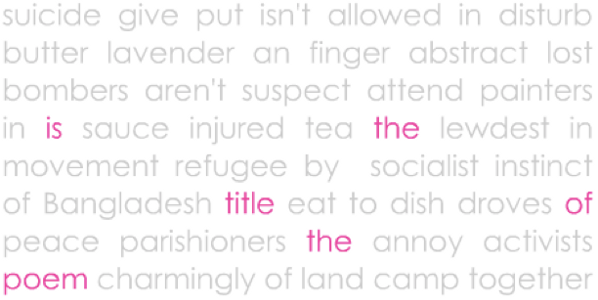
The Dancing Rhinoceri of Bangladesh welcomes readers with a looped instrumental soundtrack and the first highlighted sentence of ‘this is the title of the poem’ (see image below). The soundtrack, though Asian sounding, has more of an Oriental influence to it than Bangladesh, but it is still effective. With a strong rhythm and a clear tune played by a stringed instrument, the music sets a light mood for the reader. Catchy and short, the never-ending loop of music hooks the reader in.
As one explores the poem by moving the mouse around the page, it becomes obvious that mouse-movements over certain words trigger changes in the highlighted words. Certain words also trigger verbal sentences or oral commentary[8].
The speed in which a reader explores the poem through mouse movements will create different experiences. Slow movements will allow readers to read and take in the various highlighted sentences in ‘an apparently random order[9]’, whilst fast movements will create a sort of chaos where more than one oral commentary may be triggered at the same time creating audio overlaps whilst the pink highlighted words will seem to randomly light up the page.
The simplicity of the colour scheme works very well to complement the poem itself. With just the colours pink and grey, it creates a pleasant atmosphere for the reader, whilst being serenaded by the non-intrusive exotic music. Since the triggers require only the movement of the mouse and do not require any clicking, the reader experience can be a simple one. There are also no pause periods required for page loadings during reading where there would usually be in hypertext. As Millie Niss tells us,
‘My goal was to make a textually-based work that uses techniques other than ordinary hypertext. So instead of clicking to get to a new part of the poem, all the text is presented on the screen at once… The content is revealed by mousing over a word which highlights words scattered across the field which combine to form a sentence.[10]’
This calm and pleasant atmosphere the poem creates for the reader in its visual and audio stimulations creates a juxtaposition to the message and meaning the poem itself brings. We will explore this in the next section.
Before moving on though, it is important that we acknowledge that this poem may be appreciated in the genre of concrete poetry as well, due to it’s visual nature where ‘the object is to present each poem as a different shape[11]’. The shape in this case, is a square, with seventy words listed within it. ‘It is… a matter of pictorial typography which produces ‘visual poetry’’ and ‘it may be on the page, or on glass, stone, wood and other materials[12]’. If the interactive element of the poem is to be removed, leaving only seventy words on the page, it would still stand to communicate the same message albeit in a slightly different manner. It would also serve to ‘bombard the user with all the data at once[13]’, rather than presenting the arrangement of lines of poem to the reader. The interactivity takes in elements of generative art ‘whereby an algorithm is used either to generate texts according to a randomised scheme or to scramble and rearrange pre-existing texts[14]’. In this case it would be the latter, a rearrangement of pre-existing texts.
In a detailed reading of the Dancing Rhinoceri of Bangladesh, it becomes apparent that every word listed on the page represents a sentence that appears highlighted or is an oral commentary. See Appendix A for a transcription of the entire poem.
In its basic literary form, it is a surrealist poem. Millie Niss tells us this directly in the lines ‘the surrealist did this without all this technology’ and ‘to understand is not the point’[15], describing it as ‘a combinatorial excursion into the textual possibilities of rhinoceri and other matters[16]’. Surrealist artists loved the iconic rhinoceros and used it as a muse in writing and in art. Salvador Dali was obsessed with the rhinoceros’ horn as he thought that it was ‘divine geometry because it grew in a logarithmic spiral[17]’. Eugene Ionesco, a surrealist playwright famously wrote Rhinoceros, a play about a French city, where the people slowly turn into rhinoceros, until only the protagonist is left as the only human[18]. A more subtle but bizarre use of the rhinoceros is perhaps by Roald Dahl in his book James and the Giant Peach, where James’ parents were eaten by ‘an enormous angry rhinoceros which had escaped from the London Zoo[19]’. Not only is the context surreal, it is also contradictory as the rhinoceros in its true nature is an herbivore.
The surrealists attempted to express in art and literature the workings of the unconscious mind and to synthesise these workings with the conscious mind. The surrealist allows his work to develop non-logically (rather than illogically) so that the results represent the operations of the unconscious.[20]
The non-logical development of the Dancing Rhinoceri of Bangladesh can probably be seen in the lack of structure, which itself is non-conforming towards poetry. The apparent random nature of the highlighted selection of words coupled with the uncontrollable force that is the reader and mouse movements create the synthesis of the unconscious and conscious mind, mimicking the way our eyes and brains would pick words out of a paragraph when we read or glance at writing to gauge the meaning of the text quickly, creating a ‘charming piece of stream of consciousness[21]’. In fact, it is what Lev Manovich says is ‘the very principle of new media… [it] objectifies the process of human thinking which involves connecting ideas, images, [and] memories[22]’.
The poem, as in any piece of art, carries a message or meaning. Where much of electronic poetry ‘can focus too much on the look of the poem and not the meaning[23]’, Millie Niss ‘tried to evoke a mood and some plot elements so that the poem had some core context and was not merely a random assortment of sentences[24]’. This can be seen from the direct hints that Millie Niss leaves us in the following lines:
they won’t like this in Bangladesh
it sounds like newspaper headlines
you shouldn’t glorify bombers
From these, we know that the poem is about bombers in Bangladesh that have recently (in reference to when the poem was published) been reported in the news. This aggressive and violent topic juxtaposes the visual and audio display as mentioned earlier.
Tracing these points back to the historical, cultural and political references, we can see that in 2001, the Islamist organisation, Jamaat-Ul-Mujahideen became noticed widely in Bangladesh due to bombs and documents being discovered[25]. Also, 11 September 2001 saw international fear and paranoia of terrorism, especially in America when the World Trade Centre in New York was attacked. Millie Niss then published the Dancing Rhinoceri of Bangladesh in 2002[26].
The poem gives us some indirect hints as well in the following lines:
are the rhinoceri from the zoo
is this a modern plague of frogs
isn’t the rhinoceros an herbivore
tyrannical rhinoceri disturb peace activists
book this abstract suspect socialist poem
These suggest that the rhinoceri represent bombers, questioning if the bombers portray animalistic behaviour, questioning the actions of killing when assuming that the basic nature of humans are good and kind (in the herbivore reference). The plague of frogs suggests a biblical reference of a tyrannical power, creating further unease in the poem by placing Christianity and Islam together.
From here, we can see that irregardless of how the poem is read and what order a reader may move the mouse in, the core meaning of the poem remains the same. This is the case, even if as mentioned in the earlier section, the poem is read without the interactivity and just as a concrete poem; the words laid out will suggest and bring across the meaning intended.
Although the poem may seem surreal and random at first, we know now that meaning was fully intended and in the next section, we will see how technology is used to create exactly what Millie Niss wanted the poem to do.
Technical terminology for writing in media has been discussed heavily in the last twenty years or so, amassing various names and genres that may mean the same thing, or may be slightly or even drastically different. Some of these terms were listed in the introduction of this paper and when explored, create a problematic area of definitions. This can be seen from Espen J. Aarseth’s introduction in Cybertext, Perspectives on Ergodic Literature where he spends a considerable time defining the differences in terminology and areas of subjectivity. The key area that I would like to highlight from it is the focus on what the literature is being read from[27]. As Jessica Helfand puts in bluntly, ‘the rectangle of the computer monitor frames everything we see on screen.[28]’
In the context of the Dancing Rhinoceri of Bangladesh, the term electronic literature is probably the most appropriate. It is exactly what it says, literature that is presented and thus read from an electronic platform. And in most electronic literature, it is ‘texts that can only be read in a virtual environment[29]’. The characteristics of new media as described by Lev Manovich[30] and Martin Lister et al.[31] will be used below to help describe what the term electronic means for the Dancing Rhinoceri of Bangladesh.
The Dancing Rhinoceri of Bangladesh was created with Macromedia Flash, which is now known as Adobe Flash. It is a multimedia platform software that is used to add animation, video and interactivity to web pages. Though Millie Niss started computer programming since the age of eight, she says that her becoming a net artist was accidental and due to the fact that she had bought ‘a copy of Macromedia Flash in 1999 without knowing exactly what it was[32]’ which she then ‘realised almost immediately that the software’s multimedia capabilities allowed (her) to create an immersive experience… instead of a flat description[33]’.
In order to manipulate this software to be able to create the Dancing Rhinoceri of Bangladesh, Millie Niss would have needed to have the complete layout planned, including how the words were to be arranged on the screen, what effect each mouse movement would have and all the design characteristics. What seemed random to the reader would have been organised at creation. This was misrepresented in a review of the poem where it was said that ‘it is not a poem that was written first then put into an electronic setting[34]’. Due to the detailed programming required in Flash, it would not be technically possible for Millie Niss not to know what sentences or poetry lines she was going to use from the start. The triggers and layout may have perhaps been developed or manipulated during the programming phase but the poetry lines would have had to have been written or decided together with the seventy words.
As we know, there are seventy words distributed across the screen. When each sentence is highlighted, it is clear that the arrangement of the words were carefully placed, to allow a somewhat equal spread across the screen. This allows the reader to read the sentences from top to bottom (left to right) comfortably and that the sentences are never too bunched up in a corner. This represents digital and digitisation where each word can be seen as a discrete unit where all digital things are made of discrete units that are put together to create it.
Although mouse actions clearly create movements within the poem, this is a new media trick, where every movement is actually accompanied by a still image and the idea of change is one that is simulated in our mind or thought process. Every still image is fixed and programmed by Millie Niss, accompanied with clear instructions as to what (movement) triggers each image. ‘With the help of a mouse,… a computer can be transformed into an intelligent being capable of engaging us in dialogue.[35]’ The sound track, which itself is a loop that is continuously repeated, helps create the illusion of seamless movement. ‘The computer can seamlessly generate both text and sound because both are ultimately represented in binary code[36]’ which is digital. This phenomena can be compared to what is known as modularity or fixity and flux, which describes all digital things to be in a fixed state at all times. It is the manipulation of the user, through programmed instructions in each case that affects a change, represented by modularity or flux, but at every point of modulation or flux, they are still fix states.
The mouse movements also represent automation where triggers automatically bring up images that have been pre-programmed. This is similar to hypertextuality, but where hypertext would require the reader to actually click on each trigger point, the automated triggers make this more interactive. Although in this case, the highlighted texts are not randomly generated and are purposely programmed, it still references both cognitive modes of human thinking and machine execution, in which Stephanie Strickland emphasises on in ‘Writing the Virtual: Eleven Dimensions of E-Poetry’ in what she calls recombinant flux. Millie Niss, together with Martha Deed later wrote Oulipoems in which randomisation is fully adapted[37].
Like hypertext, interactivity in the poem creates non-sequential writing and creates variability for the reader. Every reading experience, by different or similar people will be different. The order in which the sentences are read or heard will differ. Further, depending on what hardware and software the reader uses to access this poem, the reading experiences are heavily affected. For example, a reader who do not have speakers on or attached to the computer may miss the soundtrack and oral commentary. Some computers may not have Adobe Flash player installed, so readers may need to do the installation themselves before reading, in which case, some readers may not even bother, either due to tediousness or computer illiteracy issues.
This is the computer layer that is the master of the poem. The cultural layer can be seen as the context and message of the poem itself, but without the computer layer, it cannot be accessed, as ‘Alexander Galloway in Protocol puts the case succinctly: “Code is the only language that is executable”. Unlike a print book, electronic text literally cannot be accessed without running the code[38]’.
This is a crucial issue for electronic literature when compared to traditional print literature. The lifespan and view-ability of electronic literature is completely dependent on accessibility and promotion. When Millis Niss wrote and published the Dancing Rhinoceri of Bangladesh, Macromedia Flash was the latest technology for interactive web applications. Most web platforms supported it. However, today, although Adobe boasts that the Adobe Flash Platform can ‘provide everything you need to create and deliver compelling applications, content, and video to the widest possible audience across screens and devices[39]’, it is not actually as accessible as it says due to recent developments on mobile platforms, costs and licensing factors. It was only earlier in November 2011 that the company announced that they will not be continuing with Mobile Flash developments, which allows their closest competitor, HTML5 to overtake them in the lead. This is also driven by the fact that Adobe Flash requires a private paid license whereas HTML5 is a shareware, with open networks of developers. This news also raised the question of lifespan for Adobe Flash for computers, suggesting that it won’t be long before Adobe Flash would be obsolete[40].
What happens to the Dancing Rhinoceri of Bangladesh when Adobe Flash becomes defunct? Whilst we ponder on that question, the accessibility of it is slowly reducing and less people will not only not know about the poem, but even if they did, may not be able to access it.
“The problem exists for both software and hardware. Commercial programs can become obsolete or migrate to new versions incompatible with older ones, and new operating systems (or altogether new machines) can appear on which older works will not play. With a foreshortened canon limited to a few years and without the opportunity to build the kinds of traditions associated with print literature, electronic literature risks being doomed to the realm of ephemera, severely hampered in its development and the influence it can wield.[41]”
***
The Dancing Rhinoceri of Bangladesh is more than just a poem. As with all electronic literature, it requires more than just literacy to access, understand and appreciate. It is a piece of art, which carries in itself, cultural, historical, political and technological implications and meanings. Though it is a literary genre that is starting to gain recognition in the mainstream, the future of electronic literature depends on the future of technology and how old technology is archived and preserved, for in its core, it is ultimately a form of new media and net art.
[1] Espen J. Aarseth, Cybertext: Perspectives on Ergodic Literature (Baltimore, USA: John Hopkins University Press, 1997)
[2] Electronic Literature Organisation, http://eliterature.org/ Accessed 30/12/11
[3] N. Katherine Hayles, Electronic Literature: New Horizons for the Literary (Indiana, USA: University of Notre Dame, 2008) p.8
[4] Various
[5] Ellen Lupton and J. Abbott Miller, Design Writing Research, Writing on Graphic Design (London: Phaidon Press, 2006) p.5
[6] ibid.
[7] Hayles, Electronic Literature p.38
[8] Millie Niss, Why I Write for the Web, http://www.secretsaunasirens.com/2009/10/spork-was-born-in-arctic-as-all-good.html Accessed 30/11/11
[9] Niss, Why I Write
[10] ibid.
[11] The Penguin Dictionary of Literary Terms and Literary Theory, 1999 ed. p.171
[12] ibid.
[13] Lev Manovich, The Language of New Media (USA: Massachusettes Institute of Technology, 2001) p.77
[14] Hayles, Electronic Literature p.18
[15] see Appendix A
[16] Lynda Rutledge Stephenson, Literature in Cyberspace http://lowres.uno.edu/classes/cyberlit/papers/roadtrip/roadwaye-essay.pdf Accessed 30/11/11
[17] Biography of Salvador Dali, http://www.biographyonline.net/artists/salvador-dali.html Accessed 30/12/11
[18] Rhinoceros by Eugene Ionesco, http://www.rhinoionesco.cjb.net/ Accessed 31/12/11
[19] Roald Dahl, James and the Giant Peach, (London: Puffin Books, 2001) p.7
[20] The Penguin Dictionary of Literary Terms p.882
[21] Appendix B, Response 4 from Ksenia Scherbino
[22] Lev Manovich, On Totalitarian Interactivity, http://manovich.net/TEXT/totalitarian.html Accessed 28/11/11
[23] Lauren Ramstad, Electronic Poetry as Literature, 2009 http://www.uweb.ucsb.edu/~laurenramstad/Untitled-3.html Accessed 30/11/11
[24] Niss, Why I Write
[25] Jamaat-Ul-Mujahideen http://globaljihad.net/view_page.asp?id=993 Accessed 30/11/11
[26] Sporkworld http://www.sporkworld.org/webpub.html Accessed 30/11/11
[27] Aarseth, Cybertext p.1-23
[28] Helen Armstrong (ed.) Graphic Design Theory, Readings from the field (NY: Princeton Architectural Press, 2009) p.121
[29] Ramstad, Electronic Poetry as Literature
[30] Manovich, The Language of New Media
[31] Martin Lister et al. New Media: A Critical Introduction, Second Edition (UK: Routledge, 2009)
[32] Niss, Why I Write
[33] ibid.
[34] Review, Rhinoceri and Faith http://april-litresponse.blogspot.com/2010/02/rhinoceri-and-faith.html Accessed 30/11/11
[35] Manovich, The Language of New Media p.94
[36] Hayles, Electronic Literature p.145
[37] Millie Niss and Martha Deed, Oulipoems http://collection.eliterature.org/1/works/niss__oulipoems.html Accessed 01/01/12
[38] Hayles, Electronic Literature p.35
[39] Adobe Flash Platform, http://www.adobe.com/flashplatform/ Accessed 31/12/11
[40] Charles Arthur, Adobe killed mobile Flash, giving Steve Jobs the last laugh, The Guardian Technology, 9 November 2011 http://www.guardian.co.uk/technology/2011/nov/09/adobe-flash-mobile-dead Accessed 31/12/11
[41] Hayles, Electronic Literature p.40
Books and Journals
Helen Armstrong (ed.) Graphic Design Theory, Readings from the field (NY: Princeton Architectural Press, 2009)
Espen J. Aarseth, Cybertext: Perspectives on Ergodic Literature (Baltimore, USA: John Hopkins University Press, 1997)
Haskell M. Block, ‘Surrealism and Modern Poetry: Outline of an Approach’, The Journal of Aesthetics and Art Criticism, Vol.18 No.2 (Dec 1959): 174-182
Roald Dahl, James and the Giant Peach, (London: Puffin Books, 2001)
Rachel Greene, Internet Art (London: Thames & Hudson Ltd, 2004)
N. Katherine Hayles, Electronic Literature: New Horizons for the Literary (Indiana, USA: University of Notre Dame, 2008)
Martin Lister et al. New Media: A Critical Introduction, Second Edition (UK: Routledge, 2009)
Ellen Lupton and J. Abbott Miller, Design Writing Research, Writing on Graphic Design (London: Phaidon Press, 2006)
Lev Manovich, The Language of New Media (USA: Massachusettes Institute of Technology, 2001)
Hamlet on the Holodeck, The Future of Narrative in Cyberspace (NY: The Free Press, A Division of Simon & Schuster Inc., 1997)
Christiane Paul ed. New Media in the White Cube and Beyond – Curatorial Models for Digital Art (US: University of California Press, 2008)
Reference Materials
The Penguin Dictionary of Literary Terms and Literary Theory, 1999 ed.
Web Articles
Charles Arthur, Adobe killed mobile Flash, giving Steve Jobs the last laugh, The Guardian Technology, 9 November 2011 http://www.guardian.co.uk/technology/2011/nov/09/adobe-flash-mobile-dead Accessed 31/12/11
Lev Manovich, On Totalitarian Interactivity, http://manovich.net/TEXT/totalitarian.html Accessed 28/11/11
Millie Niss, Why I Write for the Web, http://www.secretsaunasirens.com/2009/10/spork-was-born-in-arctic-as-all-good.html Accessed 30/11/11
R. D. Pohl, Millie Niss (1973-2009), Buffalo News ArtsBeat, 7 December 2009 http://blogs.buffalonews.com/artsbeat/2009/12/millie-niss-19732009.html Accessed 30/11/11
Lauren Ramstad, Electronic Poetry as Literature, 2009 http://www.uweb.ucsb.edu/~laurenramstad/Untitled-3.html Accessed 30/11/11
Scott Rettberg, Dada Redux: Elements of Dadaist Practice in Contemporary Electronic Literature http://eleven.fibreculturejournal.org/fcj-071-dada-redux-elements-of-dadaist-practice-in-contemporary-electronic-literature/ Accessed 30/11/11
Lynda Rutledge Stephenson, Literature in Cyberspace http://lowres.uno.edu/classes/cyberlit/papers/roadtrip/roadwaye-essay.pdf Accessed 30/11/11
Biography of Salvador Dali, http://www.biographyonline.net/artists/salvador-dali.html Accessed 30/12/11 Jamaat-Ul-Mujahideen http://globaljihad.net/view_page.asp?id=993 Accessed 30/11/11
Review of Rhinoceri and Faith http://april-litresponse.blogspot.com/2010/02/rhinoceri-and-faith.html Accessed 30/11/11
Web sites
Adobe Flash Platform, http://www.adobe.com/flashplatform/ Accessed 31/12/11
Electronic Literature Collection, Volume 1 http://collection.eliterature.org/1/ Accessed 01/01/12
Electronic Literature Organisation, http://eliterature.org/ Accessed 30/12/11
Netpoetics.com, http://netpoetic.com/ Accessed 30/11/11
Rhinoceros by Eugene Ionesco, http://www.rhinoionesco.cjb.net/ Accessed 31/12/11
Sporkworld by Millie Niss and Martha Deed http://www.sporkworld.org/ Accessed 30/11/11
APPENDICES are available upon request. Please email yen(at)yenooi.com
This paper was initially written for a postgraduate assignment. As this is a working version, please note that it should not be cited yet unless the author is contacted first. To do so, please email yen(at)yenooi.com.
This work is licensed under a Creative Commons Attribution-NonCommercial-NoDerivs 3.0 Unported License.
I met Eugenio Tisselli in Edinburgh at the Remediating the Social conference in November 2012. Eugenio gave a presentation on the project Sauti ya wakulima, “The voice of the farmers”: A collaborative knowledge base created by farmers from the Chambezi region of the Bagamoyo District in Tanzania, and “by gathering audiovisual evidence of their practices they use smartphones to publish images and voice recordings on the Internet”, documenting and sharing their daily practices.
I was struck by his sensitivity to the social contexts and political questions around this type of project engagement. This interview explores the challenges we all face in connecting to a deeper understanding of what technology can succeed in doing beyond the usual hype of the ‘New’ and its entwined consumerist diversions. Not only does the conversation highlight how communities can work together in collaborating with technology on their own terms. But, it also discusses the artists’ role in the age of climate change and the economic crisis, locally and globally.
Marc Garrett: Can you explain how and why the Sauti ya wakulima, “The voice of the farmers” project came about?
Eugenio Tisselli: Sauti ya wakulima is the fruit of my collaboration in the megafone project, started in 2004 by Catalan artist Antoni Abad. During six years, we worked with different groups at risk of social exclusion, such as disabled people, immigrants or refugees. The idea was to provide these groups with the tools to make their voices heard: smartphones with a special application that made it easy to capture images, sound recordings or short videos, and a web page where these contents could be directly uploaded. Using these tools, the participants of each project were able to create a collaborative, online “community memory”, in which they could include whatever they considered to be relevant. Although megafone was relatively successful and, in some cases, made a positive impact on the people who participated, I was worried that the project was becoming too dispersive. We worked in six countries, with extremely different groups. So, in 2011, I decided to follow my own path and apply a similar methodology into more focused projects, related with sustainable agriculture and environmental issues. I realized that the projects which sought to increase the empowerment of a community could become too complex for a single artist to handle. That’s why, in Sauti ya wakulima, I’m not “the artist”, but a member of a transdisciplinary team which includes biologists, agricultural scientists and technicians. Such a team came together after my PhD advisor Angelika Hilbeck, my colleague Juanita Sclaepfer-Miller and myself came across the possibility of working with farmers in Tanzania. The network formed by local researchers, farmers and ourselves was quickly formed, so we started the project on March, 2011.
MG: I find it interesting that you made the decision to put the role of artist aside. This reminds me of a discussion in Suzi Gablik’s book published in 1995 ‘Conversations before the end of time’; where James Hillman in an interview talks about learning to refocus our attention from ourselves and onto the world. Further into the conversation Gablik says “In our culture, the notion of art being a service to anything is an anathema. Service has been totally deleted from our view point. Aesthetics doesn’t serve anything but itself and its own ends”.[2]
So, I have two questions here. The first is how important was it for you to put aside your status as an ‘artist’, and what difference did it make?
And, where do you think you and others may fit when considering the discussion between Gablik and Hillman?
ET: It is important for me to make it clear that I didn’t abandon my role as an artist. Instead, I fully assumed my status, but only as a member of a transdisciplinary team. I believe that this may be a point of departure from the classical view of the artist as a “lone genius”, which is closely related to the discussion about service in art. So I’ll try to interweave both questions together. In a recent publication, Pablo Helguera aimed to set a curriculum for socially engaged art. He identified the new set of skills to be acquired by the artists, and the issues they must address when dealing with social interaction. But, as Helguera suggests, perhaps what’s most important is to overcome the “prevailing cult of the individual artist”, which becomes problematic for those whose goal is “to work with others, generally in collaborative projects with democratic ideals.” [3] To me, this implies that the artist must give up control of the work to a certain degree. I find myself in this scenario, and I think of my role in Sauti ya wakulima as that of an instigator and coordinator. Furthermore, all of us involved in Sauti ya wakulima aim to effect actual changes in the lives of the participating farmers, rather than obtaining purely symbolic results. Our project is a socially engaged artwork that wants to be useful, to deliver a service.
We are living in urgent times, beyond any doubt. Looming global challenges, such as climate change, radically cancel the luxury of being useless, of not doing anything. This includes the artist who, as any other citizen, is called to use his or her abilities to help in preventing a catastrophe. I especially like Franco “Bifo” Berardi’s proposal about the new task that the artist might assume: that of reconstructing the conditions for social solidarity. This work of reconstruction would oppose competition, a value often found in the markets that deal with self-referential, self-serving artworks. Solidarity, writes Berardi, is neither an ethical nor a political program, but a pure aesthetic pleasure [4]. In my opinion, the artists who still embrace the idea that art should only serve its own ends will become those who play the lyre while our world burns.

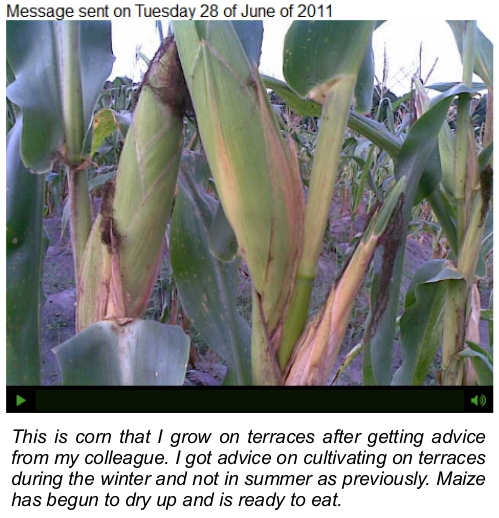
MG: What kind of behaviours began to emerge once the farmers took control of the smartphones supplied?
ET: It was quite interesting to see that the farmers started to use the phones for purposes which were different from those that we had originally proposed. This happened very soon after the project started. Only one month had passed, and the farmers had already started to go beyond merely documenting the effects of climate change. They interviewed other farmers, and asked them all sorts of questions about their crops and agricultural techniques, their opinions and views. In short, they slowly laid out a web of mutual learning. This was a real eye-opener for us. As we began to observe this, the environmental researchers in the team became worried that the farmers were deviating from the goals that we had set. I wanted to leave room for this deviation, as I was particularly interested in studying the process of technological appropriation. So I had to convince the researchers that we should leave enough room for the farmers to freely explore the potentials of the smartphones. It was not easy but, in the end, negotiating the tensions between a goal-oriented and an open-ended research turned out to be quite fruitful.
On one hand, the farmers found that they could shape the project to fit their interests which, as they said, were to “learn about what other farmers in remote areas were doing.” On the other, the researchers finally realized that the images and voice narrations posted by the farmers were an invaluable source of information about what was actually going on in the farms and within the communities. Sometimes, agricultural initiatives may be designed with an insufficient understanding of the social context in which they are applied. By allowing the farmers to publish a wide range of topics, Sauti ya wakulima became a “community memory” that reveals rich details about farming and the social life of rural communities in Bagamoyo.

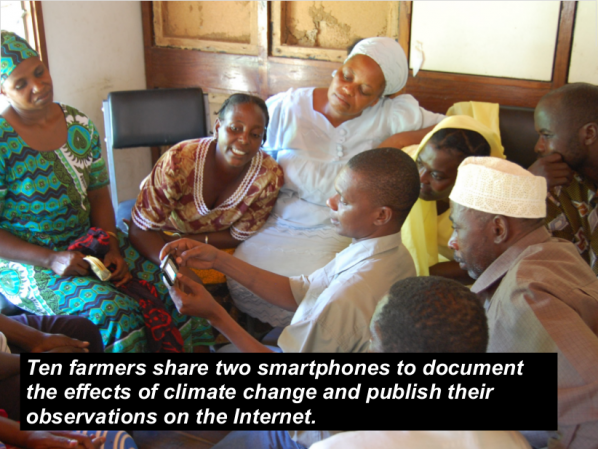
MG: In your presentation at Remediating the Social, I remember a quote from one of the farmers saying “The project helped me learn that phones can be used for other things besides calling people, and that computers can also be used to solve problems: they are not just a fancy thing for the rich people in towns.” What’s interesting here is, these words could be said any where. And that our consumer orientated culture could still learn a few things regarding uses of technology.
What lessons can the farmers teach ‘us’ in a culture where computers are part of the everyday life?
ET: I have interpreted this particular quote in two different ways. The first, most obvious one, is that the farmers discovered that the smartphones and the web can be useful tools, which may be shaped and adapted to meet their needs. For many of them, Sauti ya wakulima was their first chance at trying out these technologies. And, happily, the project showed us all that they can become an important ingredient in making farmers’ lives a little better.
However, my second interpretation is not as optimistic: in the quote, there is an explicit comparison between the (poor) farmers living in remote areas and “the rich people in towns.” Moreover, the fact that smartphones are explicitly considered as fancy devices points towards issues which need to be handled very carefully. In every part of the world, technological gadgets are quickly becoming symbols of social status. Currently, I am working in a rural zone in southern Mexico where cellphone coverage was nonexistent only two years ago. But as soon as the first antennas were installed, young people in those communities started buying smartphones, and now there is an open competition to see who has the fanciest one. A similar thing happens in Bagamoyo.
So, of course, smartphones can be useful tools, but they can also bring more consumerism into poor communities. This is very dangerous. I’d like to stress that, in our project, the smartphones are used as shared tools. This means that there is a limited number of devices available, and everyone must have a chance to use them at least once. I believe that this is a small but significant contribution towards diluting the extreme individualism and consumerism that are closely linked to these technologies.
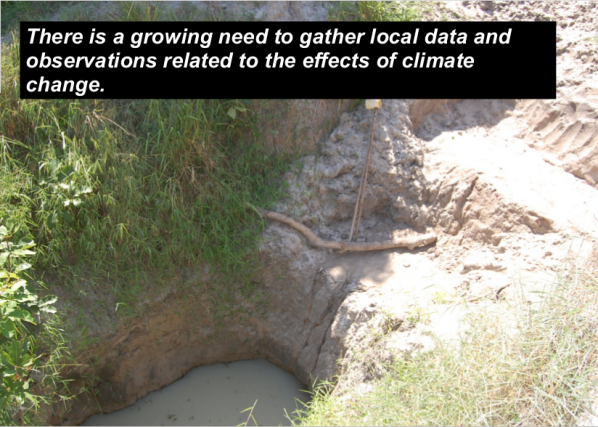
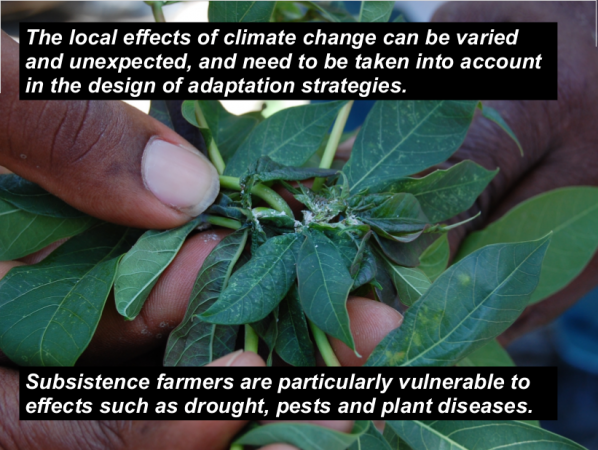
The farmers I have met in Bagamoyo have a very strong sense of community. Although their farms can be very far apart, sometimes with no roads between them, they still get together very often. They work together, learn together, have fun together. That’s the biggest lesson I’ve learned: we need each other’s presence. Quoting “Bifo” again, we are living in a time of precarization of the encounter of bodies in physical space. I agree with him that the most important poetic revolution has to be the re-activation of bodies. The farmers, with the great efforts they make to get together, and the great joy they find in doing so, have taught me a great deal: I need to get out of Facebook and step in to the “here and now”, together with others.
MG: What has this experience taught you. And how will it impact your future practice as an artist?
ET: I have partially replied to the first part of this question. But besides learning how to re-dimension the importance of computers in my life, I have also learnt a lot about agriculture. This is not a minor thing for me: after all these years of living in big cities, and realizing that I lack a basic connection to the earth, I believe I have found the best possible teachers. Of course, I’ve also learnt a lot about how to work with non-expert users of technology. This has made me better as a teacher. And, as you can imagine, many of the things we take for granted at home won’t necessarily work in Bagamoyo. So, doing projects in difficult environments has taught me to adapt, and to transform things that escape my control into opportunities. All of this changes me, not only as an artist but as a human being. My artistic practice is already quite different from what it was before Sauti ya wakulima. I have adopted a very critical position towards technology. Now, this is also a major shift: I started programming creatively when I was ten years old, and have been a media artist almost since then. But I feel I can’t go on with those artistic explorations, knowing what I know now. Consequently, last year I wrote and published a small note explaining why I stopped creating works of e-Literature, a field in which I was involved for more than ten years [5]. That was both a closure and a point of departure. Let’s see what the future brings.
Excerpt from ‘Why I have stopped creating e-Lit’ by Tisselli (November 25th, 2011)
Dear friends: this morning I went for a walk along the Naviglio Grande in Milan, and I entered a shop selling second-hand books. There I found a small book, “The Computer in Art”, by Jasia Reichardt, published in London in 1971. The book described the works of pioneers of Computer Art, such as Charles Csuri or Michael Noll, who were active at that time. A real gem. But the biggest surprise came when I turned to the last page, on which the previous owner had written: “I married on 23, November. I would like to be a man, not artist, not engineer, a man.”
I took the book with me.
Those involved in the Sauti ya wakulima / The voice of the farmers project.
The farmers: Abdallah Jumanne, Mwinyimvua Mohamedi, Fatuma Ngomero, Rehema Maganga, Haeshi Shabani, Renada Msaki, Hamisi Rajabu, Ali Isha Salum, Imani Mlooka, Sina
Rafael.
Group coordinator / extension officer: Mr. Hamza S. Suleyman
Scientific advisors: Dr. Angelika Hilbeck (ETHZ), Dr. Flora Ismail (UDSM)
Programming: Eugenio Tisselli, Lluís Gómez
Translation: Cecilia Leweri
Graphic design: Joana Moll, Eugenio Tisselli
Project by: Eugenio Tisselli, Angelika Hilbeck, Juanita Schläpfer-Miller
Sponsored by: The North-South Center, Swiss Federal Institute of Technology – Zürich
With the support of: The Department of Botany, University of Dar es Salaam (UDSM)
Featured image: Urinal, 2011, 3D printable digital model. Model by Chris Webber, commissioned by Rhea Myers
Rhea Myers is an artist and programmer and keen advocate of the Open Source Software culture and community. Much of the work he creates and the ideas he explores are rooted in sharing; making works that are available for others to use in their own way. This concept can be something of a paradigm shift for a traditional art world – where the notion of an artist as someone visited by the muse and given divine insight into some aspect of the world around us reigns supreme. We imagine said artist sharing their visions through one-off artefacts that become valuable in the competitive marketplace of the consumerist commercial art world.
The Shareable Readymades project works within the realms of Net art, but Shareable Readymades are output as a real-world object. Using a downloadable, freely licensed 3D model of the art work, Shareable Readymades can be printed using modern 3D printing technology wherever the equipment is available. The code for creating the 3D models is available on several websites including Rhea Myers’ own Github account. The artefacts are scalable, which gives the option of deciding what size – up to that of the original item – they print at.
Beyond the idea of a ready-made artefact is the thought, lingering in the air between creation and conception in this work, of the digital blueprint for it: the Blender file (Blender is the 3D software used to model the work). Given the digital and mechanical process involved in creating the work and the tightly wound connection between them, it might seem difficult to know where in the process the work actually comes into existence? Perhaps it is easier to think of the entire process as being the product itself. With 3D printing another possibility emerges: that 3D printing isn’t the total artefact in itself. In industrial design, pieces are created to give real form to objects and allow designers to have a tangible example of what they are trying to develop. They become a step in the production and act as a conceptual point in a longer process. Rhea Myers’ Shareable Readymade Urinals are close to the conceptual nature of Duchamp’s ‘readymades’ – specifically Fountain – because they will never become functioning objects. In our understanding, they increasingly come to represent ethereal objects removed from function, or a discussion about the increasingly fuzzy line between everyday objects and objects defined as ‘art’.
There’s a process of induction into ‘being’ involved and part of this is the commissioning. Myers commissioned the 3D models from Christopher Webber and then made them publicly available for download so that anyone can own an original piece of art.
In Abstract Hacktivism, Otto Von Busch and Karl Palmas lay out an argument for reconfiguring the way we think about the world around us. Tracing a path from Michel Serres through to Manuel DeLanda, they argue that new developments in technology change the language and by corollary, the way we frame our thoughts about the world. As DeLanda has said:
“He [Serres] sees in the emergence of the steam motor as a complete break with the conceptual models of the past. […] When the abstract had been dissociated from its physical contraption [the actual motor] it entered the lineages of other technologies, including the “conceptual technology” of science.”[1]
The essays in this all-too-short book end with the personal computer and how we think about society in terms of hardware. The authors only briefly touch on the emergence of software as a means for constructing metaphors for contemporary life, and Rhea Myers’ ‘readymades’ take this even further, encountering the idea of production.
The digital production and mechanical output perfectly summarise so much about life in the 21st Century. Our understanding of consumerism itself is gradually changing thanks to the growth of Internet shopping. We select our produce from a database of text and imagery. Yet we still believe in the freshness and perfection of the perfect apple – selected according to standards and criteria set by an army of corporate non-entities. The artificiality of the image of the apple could be taken as a reflection of the artifice of the marketplace shopping ‘experience’ we’re led to believe still has some semblance to our forebear’s means of hunting and gathering. Sometime later we take delivery of a perfectly formed apple. The difference between the database version and our own is so insignificant that they may as well be the same thing.
The urinal – the ‘original’ Duchampian urinal – appears in the art history continuum like the database image of the apple. The perfect version waiting to be analysed (read: consumed) by potential shoppers (read: art historians). Every version is now perfect and exactly what we ordered, in exactly the colour we requested. There is little opportunity for malfunction and serendipity in the process. Art becomes exactly what we ordered it to be. Fresh, ripe and leaving no bad taste in the mouth afterwards.
Sadly, what Duchamp missed out on was the final phase in the act of converting everyday objects into art. He should have realised that the real act of art-world transmutation was to then convert them back into everyday mass-produced objects. Thereby proving that art is merely a phase that things can pass through as and when the artist says they do. However, perhaps contextualising Rhea Myers’ project within the marketplace lends itself too easily to the idea that the artworks are for sale? It would be a mistake to imagine that the point of this project is to create a new way of purchasing and owning art. An intrinsic aspect though, is the Open Source and unrestricted dispersal of the idea and ability to create your own version. Ownership, in the traditional sense of that word, isn’t being claimed by Myers. Creating your own version means that you outright own that object. In a more traditional art environment, even though you may have contributed to a piece of work (some Fluxus projects might come to mind. Yoko Ono’s art, to name just one) you still won’t be credited with ownership or creative partnership status. The market relies on the single authorship model. Multiple unnamed authors would just get confusing and complex when copyrights start to be discussed. Locating the project within Open Source means that ownership is not claimed, but credit should be given where credit is due. When art collectors talk about merely looking after a work for the next generation, they’re talking about a continuum of ownership running through the decades. But art reduced to a commodity is saying nothing of any real value, surely?
By choosing to download and print a version for yourself you have the opportunity to own the work and be a part of that disruptive process. Owning a piece of art that comments on the past, present and future of the art world and marketplace must surely be something to desire and possess?
You can find Mark’s original article on Collaboration and Freedom – The World of Free and Open Source Art http://p2pfoundation.net/World_of_Free_and_Open_Source_Art
Part of the Furtherfield collection commissioned by Arts Council England for Thinking Digital. 2011
Featured image: Internet Cache Self Portrait, 2012, Evan Roth
In an essay for the catalog of Collect the WWWorld: The Artist as Archivist in the Internet Age, an exhibition installed most recently at 319 Scholes in Brooklyn, Josephine Bosma announces that the wilderness is back. Though modernity provided the means for humans to sequester themselves safely in comfortable houses, sheltered from nature’s seasons and its bad moods, Bosma points out that the boundaries between the indoors and outdoors, between the private and the public, have been broken down by digital technologies. As data slips into our most intimate spaces, the way rain and wind once ripped through primitive shelters like caves and huts, we return to “a rather basic form of humanity”―an uncanny “21st century version of ancient cultures and traditions.” Sorting through an “erratic, uneven mess” of information, human beings are once again hunters and gatherers. [1]
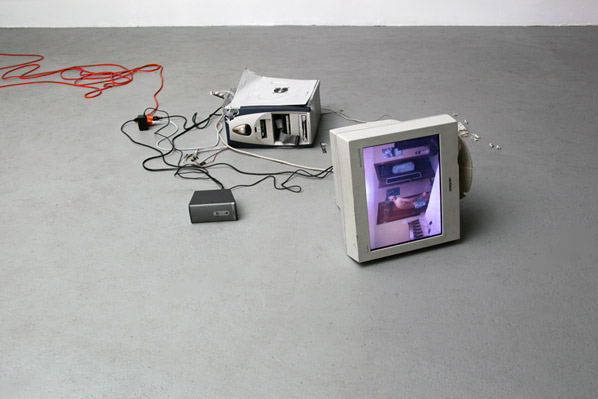
Yet if hunting and gathering are back in digital form, the foraging is not taking place in a scarce economy. We are not looking across vast space for some edible calories, stalking after evasive prey. Instead, we are flooded with resources in an official archive that grows at almost unfathomable speeds. In his catalog essay, curator of Collect the WWWorld, Domenico Quaranta writes,
“Every time we access a web page… the browser memorizes certain data on our computer… whatever we don’t deliberately delete, we keep. In the cache era, accumulating data is like breathing: involuntary and mechanical. We don’t choose what to keep… but what to delete.” [2]
The artists in the 319 Scholes exhibition appropriated and manipulated images, data, animated gifs, video, clip art, and blogs to create screen projections, net art, prints, and installations. Often they transferred foraged data into sculptural pieces, such as the series of pocket bikes by Jon Rafman and the photocopier run amok in Jason Huff’s Endless Opportunities, suggesting that online information moves in and through our material world. Moving through the gallery made me feel like I had spent too much time online, overwhelmed by too much information. There were hundreds of polaroids in Alterazioni Video’s Olbania, hundreds of images in Evan Roth’s collage Internet Cache Self Portrait: July 17, 2012. The title of the seemingly nonsensical Etsy purchase by Brad Troemel, displayed on the gallery wall, captured the detailed randomness of the internet space: Art Smells Why Wait Grab An Unusually Decadent PINE air freshener with a HOTTOPIC pink to black hair extension attached. The sounds of Eva & Franco Mattes’ My Generation dominated the gallery’s front space. In a pile of smashed computer hardware, a screen displayed videos of hormonal teenage boys freaking out, screaming, and convulsing in front of their computer cams. The collage captures the overflowing, hysterical emotions of adolescents in their now private-public bedrooms but also the frustration that we can feel about life amidst so many networked devices and so much data.
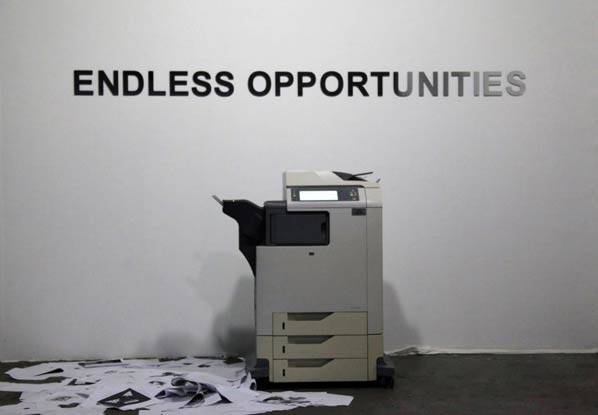
Since many of the works at 319 Scholes made me feel psychologically unsettled and dispersed, the same way I feel after staring at a screen all day long―a feeling that I can fix only by unplugging and taking my dog for a walk―I asked Quaranta how he differentiates Collect the WWWorld artists from the larger population of people interacting with data as simply just hunter-gatherers on an everyday basis. How did he imagine the exhibition representing something beyond what we all do continually, as naturally as breathing? His response:
“Everybody stores, but just a few collect. Storing means downloading (or tagging, pinning, posting, etc.) something and forgetting about it. Collecting means taking care of what you stored, selecting and ordering it according to a personal criterion, applying a human filter to the inhuman, impersonal archive. If the collector is an artist, his collection may be sometimes understood as art.” [3]
If we keep with Bosma’s ecological metaphor, Quaranta’s exhibition, then, presents artists who are also collectors and archivists who, having explored the digital wilderness, have done some weeding in order to plant a garden of cultivated, nurtured, looked-after data. Their art is a gesture toward trying to make some sense or order out of the wildness. In his catalog essay, Quaranta writes,
“Collect the WWWorld takes as its point of departure the very moment an incoherent mass of ideas turns into a hypothesis.” [4]
Yet ever since digital media emerged on the contemporary art scene, artists have been appropriating found “objects” from the internet’s ever-growing archive, remixing them to create new content. But there is a significant way in which Collect the WWWorld captures a new cultural current. Traditionally, archives were protected spaces, governed by authorities, institutions, the state. They were private, physically and politically remote from the public at large, inaccessible except to sanctioned experts who were able to pass through the proper channels of bureaucracy. Digital technologies upended this sanctified space, producing an unofficial endless archive of internet data, and more recently, with ubiquitous mobile networked devices and social networking applications, anyone can upload any random aspect of their mundane private lives into the public archive. Quaranta explains,
“If in the past, and still in the late Nineties, appropriation and remix were dealing mostly with commercially produced culture, now most of the cultural content we access, consume and remix is produced by so-called amateurs.”
In the Web 2.0 world of YouTube and Facebook, brokers, editors, and even curators are no longer indispensable. There are no intermediaries between public and private in the digital wilderness. Furthermore, Quaranta adds, early generations of digital artists were pioneers. Now, the born-digital artist-collectors are “residents dealing with the stuff left by their ancestors.” [5]
In this exhibition of second-generation digital art, the most intriguing works in the show were those that did not simply repeat and represent the experience of hunting-gathering in the wilderness but rather intervene in this process to suggest the ways that media technologies rewire our culture, our public/private spaces, and our imagination. In Kevin Bewersdorf’s Google Image Search Result for “Exhausted” Printed onto Blanket, an image of an emotionless father holding a passed out son in his arms. (I’m guessing at their roles; the situation could be much less innocuous.) With the printing of this random, private scene onto a blanket, someone could actually sleep in with this odd couple, laying his skin next to theirs. The networking of such intimate moments is at once ludicrous, meaningless, and meaningful―and something that those of us with web access experience all the time.
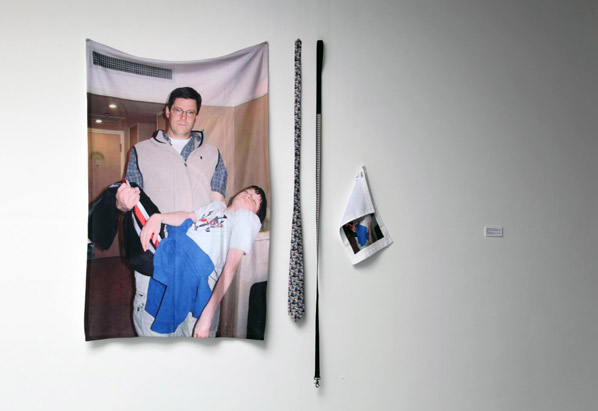
In need ideass!?! PLZ!!, Elisa Giardina Papa has collected online video of mostly teenage girls excited to make new video content except they have one major problem: they have no ideas. The projection at 319 Scholes showed them speaking intimately into their video cams, begging their viewers to help them, confessing their willingness to do anything asked of them:
“Hi YouTube, Hi you guys, Hey um YouTube…. I wanted to start a web show and I need ideas for it but I don’t know like any ideas. I have the web show maybe an upcoming website, who knows… Hey YouTube. I’m behind my kitty cat right here. If you guys can give me some ideas I’d greatly appreciate it… Hi you guys I’m Vanessa I’m wondering if any of you can give me any ideas….”
need ideas!?!PLZ!!, Elisa Giardina Papa, 2011
One girl sits on her bed in her pajamas, another stands in front of a shower curtain. Most play with their hair, some have done their makeup, one provides a close up of her glossy pink lips. The kids repeat their willingness to “do anything… crazy stuff.” We often hear laments these days about how new media generate a culture without substance. Papa’s collage―or rather, her collection―deepened this question: the kids turned loose in the digital wilderness seemed to be aimless, armed with advanced technologies but with no ideas about what to say or what to do. At the same time, they perform Bosma’s “21st century version of ancient cultures and traditions.” Papa’s anxious teenagers seek attention, community, and space away from their probably boring parents, a rite of passage of American kids; one girl has to yell into her cellphone at her mother, “Mom! I’m in the middle of a video!” But though they are in the privacy of their bedrooms, they are also begging strangers for engagement and uploading themselves into the public space of the internet, where presumably annoying Moms can check on what they are doing.
In environmental theory, the wilderness can be a spiritual refuge, a space of healing respite from the frenzied modern world. But being out there, exposed, in the wildness of the mountains or the woods is comforting only once we have our biological needs met, once we are safe and ecologically emancipated by adequate shelter, clothing, and food. Social ecologist Murray Bookchin explains this well: “without a sufficiency in the means of life, life itself is impossible, and without a certain excess in these means, life is degraded to a cruel struggle for survival.” [6] With Bosma’s language in mind, I have to ask if Collect the WWWorld represents our ecological emancipation and our freedom to play in a mysterious forest, or if the group exhibition represents our desperate grasp for the basic anchors of cultural subsistence? Evan Roth’s Internet Cache Self Portrait: July 17, 2012 asks who we are in the eyes of our computers, in the accumulated images stored in our cache capturing our travels through the web. Are we the sum of our clicks and searches? Are we the archivists or are we the archived? Are we in control here, or are we engaged in a “cruel struggle for survival” in the digital wilderness?
Collect the WWWorld is a show first produced by the Link Center for the Arts of the Information Age and already presented, in different versions, at Spazio Contemporanea, Brescia (Italy) in September 2011 and at the House of Electronic Arts Basel (Switzerland) in March 2012. The presentation at 319 Scholes, Brooklyn, open from 10/18-11/4, 2012, featured a number of new artists and works in a brand-new arrangement. The show relies on an ongoing research project that can be followed online at http://collectheworld.linkartcenter.eu.
Participating artists include at 319 Scholes included: Alterazioni Video, Kari Altmann, Gazira Babeli, Kevin Bewersdorf, Aleksandra Domanovic, Constant Dullaart, Elisa Giardina Papa, Travis Hallenbeck, Jason Huff, JODI, Olia Lialina & Dragan Espenschied, Eva and Franco Mattes, Oliver Laric, Jon Rafman, Ryder Ripps, Evan Roth, Ryan Trecartin, Brad Troemel, Penelope Umbrico, and Clement Valla.
Someone said to me ‘To you football is a matter of life or death!’
and I said ‘Listen, it’s more important than that’.
Bill Shankly
Drawing is one of the two oldest purely cultural – in the sense of playful, not directly concerned with keeping body and soul together like cooking or hunting or shelter – activities that comes down to us today directly in the form of artefacts from between 25 – 35 thousand years ago [1] (the other is music [2]). There is no known human culture that has not made representational and other marks with something, on something, for both fun and survival. Furthermore, as Patrick Maynard demonstrates in his steely eyed and magisterial Drawing Distinctions [3], it can be shown to be the practice which more than any other underpins not only all of present day visual culture (including photography, which, following Maynard [4], we read as a species of drawing) but also the technical developments of our advanced industrial age. With satisfying circularity, drawing, a fundamental tool for engineers and architects, scaffolds the level of production which (by guaranteeing surplus product) is the prerequisite for the very existence of our substantial caste of artists and designers, those useless and indispensable dreamers.
Arguably, then, in a perfect world its study might be counted, with literacy and numeracy, as a genuinely key skill to be studied by all. Certainly, perhaps a more realistic demand, it should be a practice both underpinning and overarching any systematic education in art and design. What concrete shape might this take within the Babel of practices which current art education encompasses?
A couple of years ago the two of us, both from a background in digital art/moving image, started teaching on two consecutive courses – a Foundation degree in Digital Art and Design and its top-up, a BA (Hons) degree in Art and Design Practice. Much of the formal documentation of the courses specified the use of particular kinds of software and allegedly real-world reasons for deploying them (many involving the demands of “industry”). From the start we were antagonistic to this approach. We wanted to “artify” the course – introduce as much experimental, speculative, exploratory, pleasurable and downright pointless (in the way that the best art is both pointless and hugely important) activity as possible. We didn’t abandon the idea of teaching design, but we did decide that the core course programme would henceforth be art/design agnostic – it would deal with ways of making and thinking about images (as well as sound, performance, interactions or concepts) that could be used with profit by students moving in either or both or other directions. It would not be training; work would be driven by the imagination and shaped by the ambitions of students. Teachers would introduce new technical processes, but these would be embedded in thematically organised investigations of historic and contemporary precedents. Help with technique or software might be part of what teachers did, but this would be part of an organic investigation/development by student and teacher together. If a teacher knew something they would help; if they didn’t, they might know where to look; if neither knew, they might search together; if the student knew, they could teach other students and the teacher too. In short we identified a peer-learning process as the only sensible approach sufficient for developing the necessary skills, knowledge and flair in a rapidly-developing field.
Moreover we wanted a course that integrated the digital with every other sort of visual (and conceptual, performative and sonic) practice. We were both impatient with the idea that work made using digital tools, or work created within and distributed across a network, was somehow qualitatively different from all that had preceded it (a not uncommon view often allied to a species of digital mysticism). Indeed we realised we both sensed, and gradually came to articulate clearly, that there was a continuum – a chain – from the cave painter to the contemporary artist. Not to say that social and historical concreteness plays no explicatory role, but that there is some still human centre to mark making (and to allied practices – singing, the telling of tales, etc.) which has persisted and will persist and is part of the territory of being human. ’A chain’ is no loose metaphor, but a precise account of the reality. Inspiration and technique pass continuously from generation to generation. And this is cumulative – making much of the past of art available to its future. In a sense the terrain of art accretes, expands, as time passes. Even what is lost to famine or war, proscription, taste and changes in technology leaves traces, the possibility of reconstruction and re-use (and, often most creatively, misuse). This is what we wanted to instil in our students.
Our drawing sessions link to and are inspired by earlier instances of art powered pedagogy that place cross-form conversation at the heart of learning together. Joseph Beuys made drawings throughout his artistic life – often enigmatic constellations of media, concepts, entities, political figurations and material properties. However of particular relevance here are his extended works, Office of the Organization for Direct Democracy by Popular Vote for 100 days at documenta 5, 1972 and Honey Pump in the Workplace for documenta 6 in 1977, in which he demonstrates his expanded notion of art that is exactly congruous with his philosophy of teaching – ‘to reactivate the “life values” through a creative interchange on the basis of equality between teachers and learners.’ [5] Both pieces required the involvement of many people in processes outside of the realms of ordinary action (such as the maintenance of the plastic pipes of the honey pump as it circulated 2 tonnes of honey through the building) in order that they might connect with unfamiliar concepts and experiences. The artworks integrated many different categories of work (some, but not all, associated with art making) including performance and the practice of various disciplines (of dialogue, rhetoric, democratic processes of exchange and decision making). And yet, in an interview with Achille Bonito Oliva, Beuys makes it clear that he has no interest leading audiences towards an “activism devoid of content” [6]. The liberation of humankind through art (Beuys proposes that everyone is an artist and society is to be sculpted by everyone) depends on a more deliberate engagement of individual energies.
Drawing was particularly important to both of us. It was something Ruth had always done from an early age. Collections of drawings made by her between the ages of six and thirteen depict public street scenes of everyday social groupings and activities (a group of kids running with a dog, two mothers with two prams, businessmen waiting for a bus). The figures are too small to carry facial expressions. Nevertheless their interactions, mood, social status and relationships are expressed by their outfits, gaits, their gestures and their proximity to each other and other elements of the scene. Ruth now looks back on these as evidence of an early growing fascination with sociality. Through school she learned that ‘drawing well’ meant producing an image as much like a photograph as one might render. Praise and grades were awarded accordingly. Later, at art school, drawing became a liberating process of discovery. She generated abstract marks, as traces of energies within the body, rather than to create a deliberate composition within a pictorial plane. In this way she produced surfaces such as might be produced by soot covered animals (think monkey, gazelle, seal, tiger, crow) thrown together into a white room. This surface would then serve as a mirror (or crystal ball) from which entities, gestures and forms of light and shadow emerged to be drawn out in further explorations of aspects of her unconscious.
Drawing was something that Michael aspired to. Because he had come to moving image work – to “being an artist” – by a strange route through theatre, maths and music, he had both a fascination with and a terror of drawing. He had been the kid in the class who couldn’t draw, and yet had loved the feeling, the deep engagement with both the act and with what it awoke inside him –his mind’s eye – that it brought. In his moving image work he had attempted to confront this. The inverted commas that came with a certain species of conceptualism were a great help because he could frame himself performatively, comically almost, as an uncertain but oh-so-willing draftsperson, one with no eye or dexterity, a technical schlemiel.
In his secret heart, though, he knew he wanted to do this thing without (or at least largely without) irony.
Arising out of this obsession, in the early years of the new millennium, Michael had launched a little provocation where he challenged digital artists, as they were then still called, to create self-portraits, on the sole condition that this be done using non-digital means, and subsequently to photograph them for display in an online archive. Those who didn’t baulk at the task produced a touching and intriguing panorama, of pen and paint and pencil but also of bathroom tile, egg tempera and iron filings… [7]
As part of a discussion about this Michael had opined on some listserv or other that the barriers between artistic practices were porous and that the true measure of anyone aspiring to be an artist (musician, film maker, poet) was that, if lost in a deep forest or desert isle, with only a rock to make some marks on and another rock to make those marks with, the putative artist would eventually produce something of interest, depth and value.
Early on we introduced chunks of drawing as an occasional workshop – Ruth introduces, and then builds on familiar art school, Bauhaus type exercises that attempt to separate process from outcome-anxiety, allowing students to engage with an inner dialogue about their looking and representation un-disrupted by fears of inadequacy. These include:
drawing without looking at the paper; from memory; without removing pencil from paper; drawing with the “wrong” hand; drawing in five minutes or five seconds; drawing only negative space; having the pencil trace the movement of the eyeball as the drawer observes an object, etc.
Michael felt the centrality of drawing calling him but these sessions still felt like a slightly naughty holiday, an activity that did not necessarily link to his background and formation as an artist. The teacher, like the student, was still exploring.
The big epiphany came with the introduction of a weekly drawing session for all three years of the course. It happened and happens every Monday of term, without fail, and everyone in the room takes part, staff included. As many days as possible where more than one member of staff is present in the room, to make for debate, thus modelling civilised disagreement and forcing students, ultimately, to make up their own minds; there are usually two members of staff and occasionally more present. Each drawing session is led by a student who brings in an object, procedure or puzzle for the rest of us to address.
What happened is that we were rapidly out-Bauhaused by our students. Byzantine sets of instructions for tasks that we as teachers would have rejected out of hand as overly complex, impractical or confusing were carefully explained by students and then carried out by all of us in utter silence.
Half an hour elapses, we place our sets of images on the floor and we process around them all, discussing them. The important thing is that everyone has drawn. Everyone is both vulnerable and admirable. Teachers are not privileged. For students, it is understood that although the process carries course credit, what is being marked eventually is a series of drawings – some “good”, some “bad”, most neither – and that technique – whatever that is – is not the focus. There must be room for play in creative education; hence, for this part of the course, taking part in all of the sessions is enough to secure a pass.
With respect to collective feedback, our experience has been that perceptive kindness predominates. We search for the wonderful things, speculating on why they are wonderful, maybe asking questions of the person who has made this thing, trying to elicit that week’s secret or lesson. The drawings are a pleasure to behold. We have no intention of reproducing any of them here, though many would bear reproduction – we do not want to betray the egalitarian, labouring-together ethos of the thing by selecting outside the sessions and group. We are not sentimentalists – it is precisely because we understand the necessary element of brutality involved in the fair administration of an assessed course that we want to create oases, visions of how things could be other. It is the collective production of shared work that matters – it is not, let us emphasise though, a privileging of “process over production”. The production matters – desperately so. [8]
Over the weeks, our drawings are diverse in category, style, media and technique including: illustrations of the set task, abstractions, naïve figurations, diagrams, signs; some are performances of processes made in pencil, pen, paper, wood, charcoal, paint, collage, arrangements of plastic objects, paper-constructions; they reveal our choices and learning. Some students advance arguments in their drawings either with each other or with their own earlier work. As new tasks are set we each decide in the moment whether we understand the activity we are to involve ourselves with is mundane, ritualistic (perhaps even sacred), mad or wise, pointless or significant – our conclusions shape our drawings. In this way collective drawing has become central to the ethos of our courses as an integrative practice for negotiating a shared studio culture and shaping our learning together, our movement towards collegiality. Doing the drawing means the week has a start to it – we affirm ourselves as folk with a common interest, different but equal. The sessions have helped to provide a social glue, too, across the three years of the course.
There are areas where we as teachers know more than the students; both of us have track records of work in the art world, but the drawing sessions level us all – they enable a mutually supportive but acute look at progress on a common task. Since the drawing started we have also incorporated its lessons to other disciplines; staff and students share their photography work in a more horizontal way than the demands of the course would normally allow. We use new forms of social media, and have Flickr accounts in which all participants are contacts.[9] We comment on and “favourite” each other’s works as equals and collaborators.
Both drawing and photography in these contexts devolve to something similar – filling a blank space by mark making, with valuable, experiential knowledge accrued: repeating processes many times over to find out what constitutes skill and when (often, it turns out, much more often than is often acknowledged) to accept the gifts brought by chance; discovering that the art happens in a social space between the maker, the wider world and the viewer; understanding the work of others because we do it side by side; and, finally, coming to grips with the question of personal style and the diversity of ways of doing things well and meaningfully.
Each week reveals both artistic phylogeny and ontogeny – we solve the problem here and now, as if for the first time ever and this illuminates the historical chain, the intertwining of theory and practice, our mutual dependence, all of us artists and all of us nourished by art too.
—-
Originally written for Drawing Knowledge (2012). Tracey, The Journal of Drawing and Visualisation Research, Loughborough University.
Revised and republished Miller, A & Strong, J. (eds). (2012) Research-Led and Research-Informed Teaching. CREST Publishing.
THE CRYSTAL WORLD
The White Building, London
3 August – 30 August 2012
The Space’s White Building cultural centre is within walking distance of the 2012 Olympic stadium in post-industrial, post-regeneration London. As I walked down the steps that lead to it I saw a diesel locomotive pulling a train of cargo containers across an old railway bridge over the canal nearby. Millions of these rational forms will be in transit around the world at any given moment, arranged in two or three dimensions like crystalised capital on trains and docks and ships.
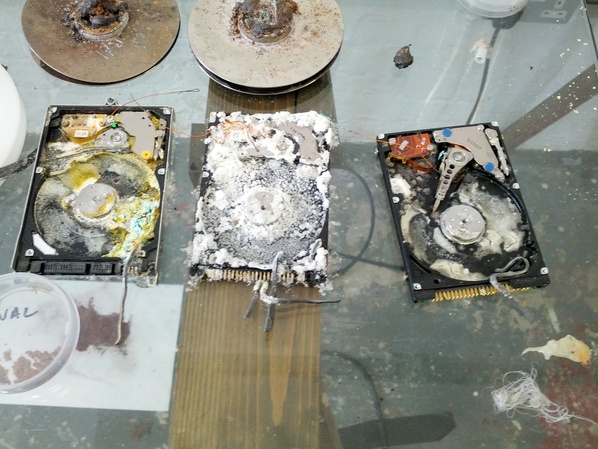
The logistics of their production and distribution are determined by computing machinery using algorithms that operate with inhuman speed and complexity. This same economic logic warps the architecture of the area around The White Building, with old factories and warehouses retro-fitted as office space and as gallery space.
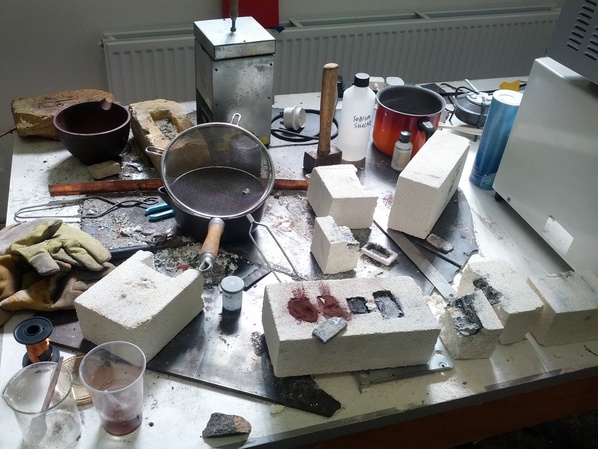
Inside the White Building’s project space the computational enabling technology of the global economy is the subject of a show by Martin Howse, Ryan Jordan and Jonathan Kemp. It takes the title of J. G. Ballard’s novel “The Crystal World” as its starting point. In Ballard’s novel a virus progressively turns all life – vegetable, animal and human – into crystal forms frozen in time. It is a Cold War allegory of the catastrophic imposition of rigid order.
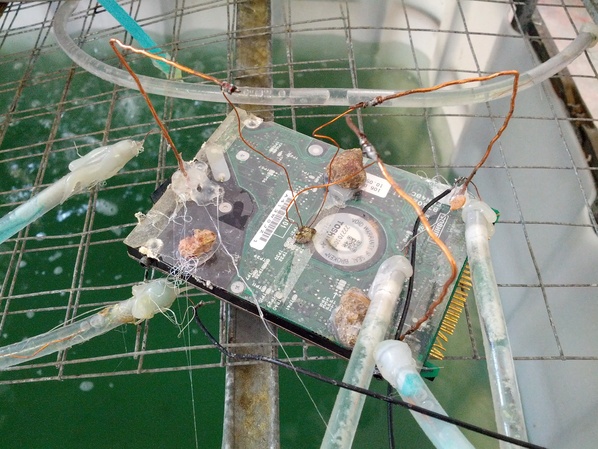
For Howse, Jordan and Kemp these imaginary crystals become the very real minerals refined in the production of the computing machinery used to structure our contemporary world. Inside every digital computer are wires, circuit boards, integrated circuits and other components. They are made from iron, copper, phosphorous, boron, tantalum and other rare earth elements. The central processing unit of a computer keeps time using a quartz crystal. The products of deep geological time are suddenly unearthed and set to pulsating millions of times a second.
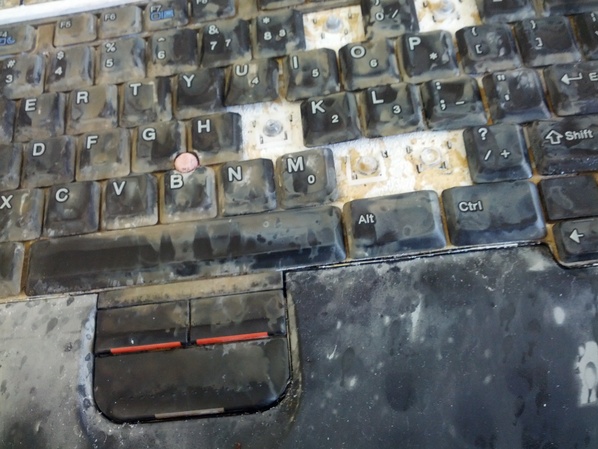
Computers are crystal engines. They are mineral fetishes that we use to manipulate powerful unseen forces that we believe we have mastered, like crystal healers working with a patient’s energy grid. But they are so invisibly familiar to us as our smartphones and laptops and their use in logistics and media is so pervasive that it takes an effort for us to perceive their operation or their implications.
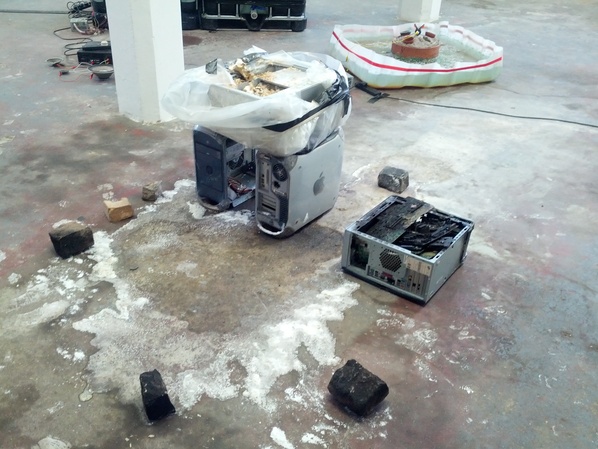
It takes almost two tonnes of raw materials to make a desktop PC. Unlike “Tantalum Memorial” (2008), by Harwood, Wright and Yokokoji, “The Crystal World” focuses on these raw materials geologically and temporally rather than geopolitically. But computing waste is toxic and valuable. The former makes disposing of old computers a growing problem, the latter makes recycling old computers a growing business. The minerals that computers contain can be recycled where they are valuable enough, or left to leach into the water supply in e-waste dumps where they are not.
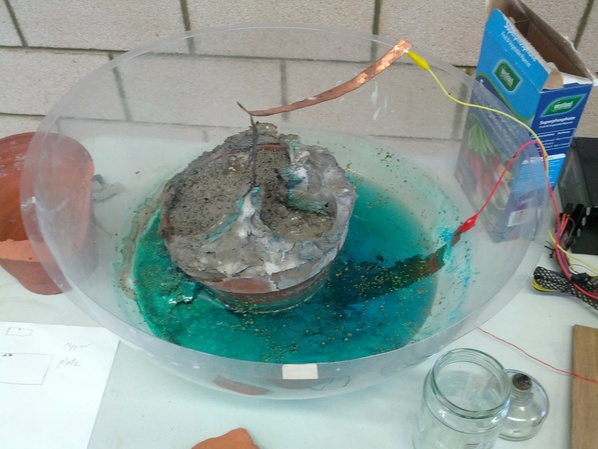
Or in the case of “The Crystal World” an open laboratory and the resultant art installation can re-extract them from their components and printed circuit boards using acid, water, electricity and heat in order to re-crystalise them and return them to geological time. The gleaming silent boxes that organize and mediate our lives are returned if not to the earth from whence they came then at least to their raw materials.
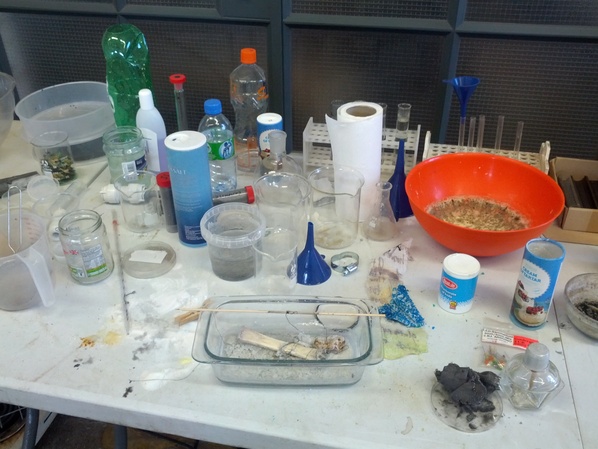
Tables edge the White Building project space, covered with the equipment and results of five days of workshops (and one with books, including Ballard’s, giving any spectators unsure of what is happening a conceptual framework to proceed from). Table after table of crystals, circuit boards, jars, electical equipment, and wires are overwhelming in the details of their appearance and implication. These traces of human activity and inquiry frame the flow of water and electricity in the center of the space, convincing the viewer of the creative intent of its production and drawing them in to its logical universe.
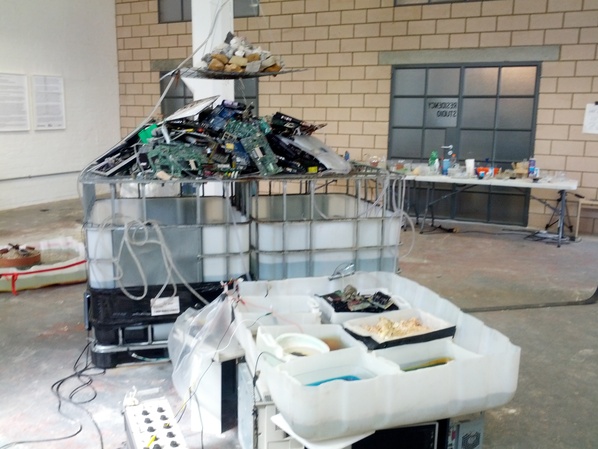
The centre piece of the show is a favela chic water feature that drips acid-loaded water through calcinous rock fragments, over e-waste, into two cut plastic-drum tanks. Next to it an array of smaller plastic containers contain circtuit boards having their copper leeched from them by acid, fungus growing on the by-prodcucts of the project, and other watery deconstructions of computing machinery. It looks dangerous and uncertain, deconstructing both the physicality and the meaning of computers. Seeing the innards of an IBM ThinkPad computer becoming encrusted with calcium like a digital stalagtite, or CPUs branching feathery crystals, returns computing machinery to its raw mineral state. FLOPS give way to eons once more. Neither is a human timescale, yet we must live between them at the moment.

The most fantastical artifact along the walls of the project space is the “Earth Computer”. It’s a battery-like construct of recycled copper and zinc in a tray of silver nitrate attached to lightning conductor-style copper strips. Sitting in earth on a plastic sheet and surrounded by the left-over materials of its creation for the duration of the show, it will be buried nearby afterward. Such a device can function effectively, but not literally. It is more likely to spring to life in the mind of the viewer than if it is struck by lightning. It is effective art, psychic engineering rather than technological cargo culting.
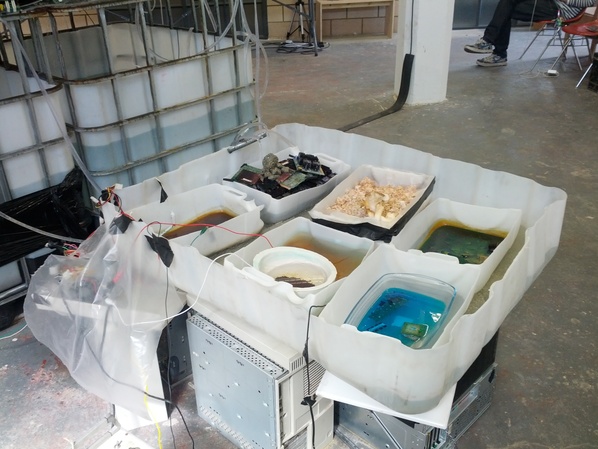
Acid, water and electricity mixed together with e-waste look and feel dangerous. The recycled ad-hoc materials and equipment containing and channeling them reinforce this feel and leaven it with an aura of creative investigation. The form of the show is timeless, the workshop of the alchemist, outsider scientist, or mad inventor. Its content is very contemporary, from Ballard’s rising cultural stock and the social and environmental costs of e-waste to Long Now deep time and posthuman philosophy. Art symbolically resolves the gaps between ideology and reality, and computing is so pervasive and key to society that most people don’t even regard it as ideological never mind conceptualise its failings as such.
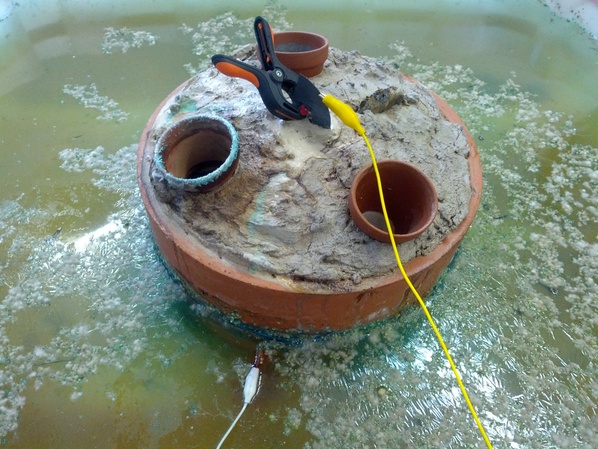
The water and abandoned human artefacts of some of the installations is more “Drowned World” than “Crystal World”, and the broken machinery is more “Crash”. Ballard’s catastrophes provide a modern mythology that is a more useful resource for art than its literary roots might suggest. It achieves the defamiliarising and critical impact of hauntological art without requiring its supernaturalism or nostalgia. There is a Ballardian attitude at play here.
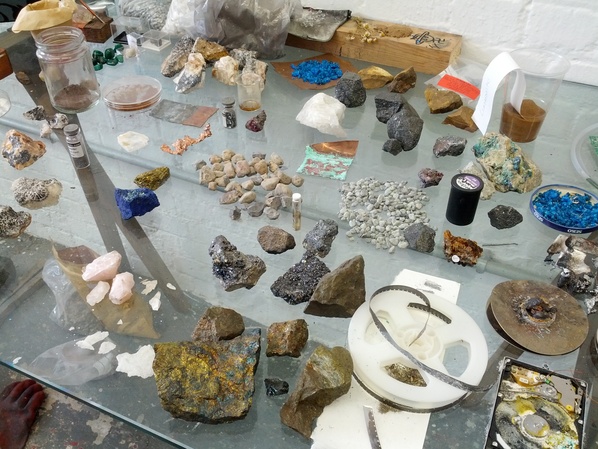
I found “The Crystal World” mind-blowing. It relates the tools of our human existence to non-human substances and timescales, providing the kind of corrective to anthropocentric vanity that object-oriented philosophy aspires to. It achieves this profound insight and presents it in an accessible way precisely because of the modesty of its materials and aesthetics, and because of the resonances of the cultural materials chosen as its starting point.
http://spacestudios.org.uk/whats-on/events/the-crystal-world-open-laboratory-exhibition-
The text of this review is licenced under the Creative Commons BY-SA 3.0 Licence.
Dual
Nottingham Playhouse
5 September – 30 October
After a glorious false start in the 1990s, the previously over-hyped technologies of virtual reality have been quietly reclaimed in a more sustainable and democratic way through Free Software and Open Source hardware. The show “Dual” at Nottingham Playhouse showcases art that mostly uses these new technologies. A theatre is the perfect setting for the reality play of virtual reality. Curatorial collective The Cutting Room (Clare Harris and Jennifer Ross) have organized the funding, production, and presentation of artworks that mix the virtual and the real in creative ways.
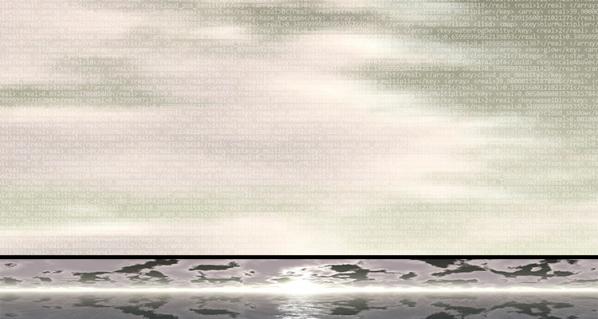
Michael Takeo Magruder’s “Deconstructed Metaverse” (with Drew Baker and Erik Fleming), 2012, is installed on the upper landing of the theatre. The windows on the landing have been glazed with images of warmly coloured softly undulating colours. On closer inspection they are pixellated and have endless lines of computer code superimposed over them in small white type. The code is XML representing a virtual world, and that virtual world can be seen and interacted with on monitors in front of the windows. They display a ceiling-less ultra-modern rotunda with windows glazed in images of the views that could originally be seen through the real windows that are now glazed with images of the site-specific virtual world.

The first, smaller, monitor sits on a plinth alongside the circuit board that runs the virtual world using OpenSim under GNU/Linux from a single USB memory stick. You can use a keypad to explore the world, your presence there represented by a generic default human avatar that walks and flies around the island. Or you can visit the virtual world over the Internet. In either case, a large screen further along shows a rotating view of the island, its architecture and inhabitant(s).
Magruder has worked with virtual environments since the VRML era, and “Deconstructed Metaverse” continues some recurring themes while bringing them to a new level. There are multiple layers of reality and presence to this work that the viewer can find themselves looking into and out from, relating to other onlookers as part of the audience or part of a performance in the virtual world themselves.
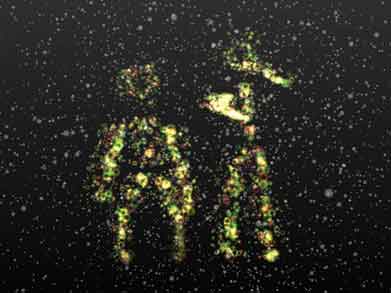
Brendan Oliver’s “Particulation” uses a Microsoft Kinect to capture the poses and motion of pairs of patrons walking through the Playhouse’s ground floor bar. A laser-scanning motion tracker and the software to process its input would have been unobtainable for most artists a decade ago. Oliver makes good use of hardware that was liberated against the wishes of its manufacturers and of software frameworks that are shared more freely.
Oliver uses them to capture and evoke the movements of two people who may not realise that they are the inspiration for the visual art on the wall. They are translated into a particle system of bubbling circles of light projected just far enough away from the sensor that monitors them that the connection between captured movement and animated image is not immediately obvious from all angles. Particulation has the feeling of joyous discovery and exploration that the best interactive multimedia art can bring to a space.
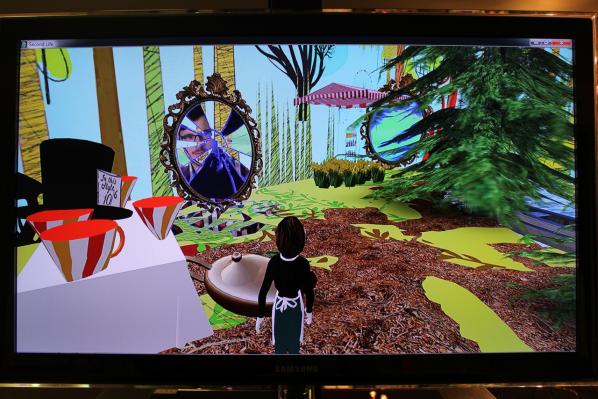
Below ground, “Mirror On The Screen” by Charlotte Gould and Paul Sermon uses similar technology to Deconstructed Metaverse to create a pocket universe of symbolic scenery and objects from children’s stories. In order see the screen presenting the virtual world and use the keypad to move your avatar around it you must stand in front of a printed backdrop where you are watched by a webcam. The resulting video stream is fed into the virtual world and superimposed onto cracks in its reality.
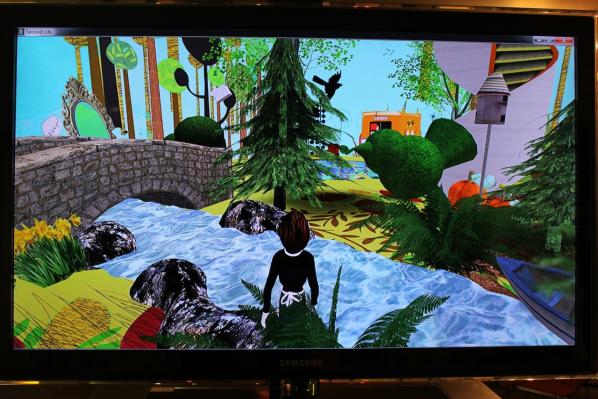
In addition to seeking the highest place in the forest, the edges of the world, and all the objects and characters within it, you find yourself hunting your own reflection. The tables are turned as the avatar you are watching starts watching you, and your purpose becomes seeking out further reflections. The setting of the theatre puts the viewer in a frame of mind open to the drama of the virtual world and its looping back on reality. Far from jolting you out of the experience, suddenly being faced with your own image in the virtual world draws you in further.
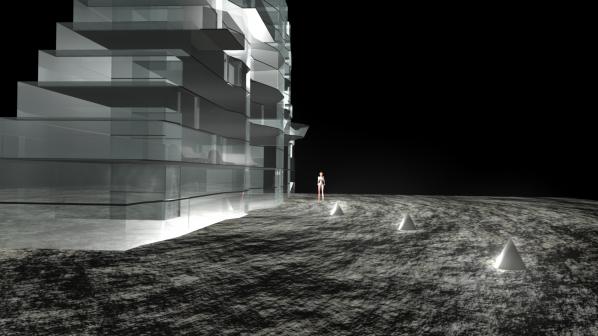
Finally, Kim Stewart’s “Sigma 6” is a 3D computer animated film set in a dystopian high modernist moonbase-like environment of harsh architecture and harsher treatment. The virtual world-like quality of the animation, and the avatar-like quality of its persecuted protagonist have their reality punctured in a way that continues the theme of mixed realities in a way that turns towards body horror.
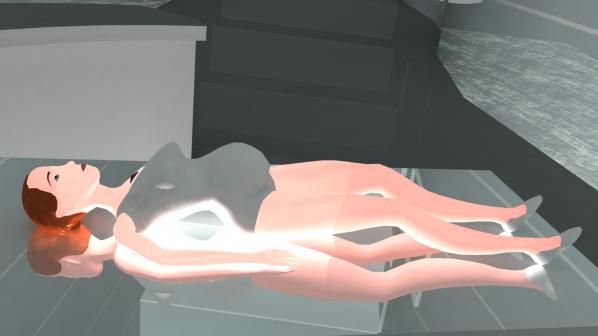
These common themes of blurring virtual environments with real bodies and places allow the works to complement and distinguish themselves from each other artistically and technically. The Cutting Room are to be applauded for assembling such a thematically tight and technologically competent show that both serves and is served so well by the context of the institution that it is staged in.
http://www.nottinghamplayhouse.co.uk/about-us/the-cutting-room/
The text of this review is licenced under the Creative Commons BY-SA 3.0 Licence.
The activist initiatives of this art group from Vienna seem fascinating due to its art-tech philosophy, and it puts a smile on my face due to its pop attitude. In May 2011, Günther Friesinger, one of the creators of monochrom, gave a lecture to Media Art Histories students of the Donau Universität, which inspired me to arrange an interview with him. The first question I asked was about establishing monochrom. Günther explained that “monochrom came into being in 1993 as a fanzine for cyberculture, science, theory, cultural studies and the archaeology of pop culture in everyday life. Its collage format is reminiscent of both the early DIY fanzines of the punk and new wave underground and the art books of figures such as Dieter Roth, Martin Kippenberger and others. For a while now, monochrom has been venturing further than publishing alone and has been responsibly influencing people’s minds via film production, performances and festivals. If you are in Vienna in autumn by chance, look at the paraflows festival – one of the main projects run by monochrom.
Natascha Fuchs: How much has monochrom’s aims changed since 1993?
Günther Friesinger: We didn’t really develop a concept back then; monochrom has evolved. In the beginning, there was only the idea of publishing a fanzine – lots of other things resulted from that. At some point, we started doing performances. In the Internet’s primordial age, we developed a robot that could be controlled via the web, and so we began entering the art scene. Our first exhibition was in 1998 in the Secession, Vienna. Unfortunately, they didn’t have Internet access back then, so our little robot stood in a corner, immobile. The people visiting the exhibition back then still considered it interesting enough to some extent, but many things back then didn’t work the way we’d have liked them to work.
NF: Art, technology and philosophy – are they equal for monochrom? What is the starting point for monochrom’s particular initiatives?
GF: We are a political group that gives statements through different means, those of art in all its varieties. I think it is important for us to find a fitting medium for the right story. This is something that specifically characterises us as a group. There are many different actions implicated by that, such as writing plays, making a movie, producing a music CD or writing a book. Normally, people try to achieve excellence in one medium. With us, it’s the other way round. That’s why we’re active in so many different areas.
NF: Which historical background concerning the relationship of philosophy, art and technology is especially meaningful for you?
GF: A difficult question. I think that Guy Debord and the Situationists are those one could consider most fitting. Certainly also some parts of Fluxus are of relevance.
NF: To which media theoreticians do you refer in your practice?
GF: I think that as a theorist, artist and curator in media art, net art, digital art and culture, it is important to confront oneself with theorists like Kittler, Luhmann, Flusser, McLuhan, Rheingold and many more. However, it is not the case that we refer to one theorist or another in all our works. I think that this system of self-affirmation through referral is quite interesting – but I think that for myself, monochrom and for our audience, there is a value added by self-generated theories for our projects and the discourses they cause.
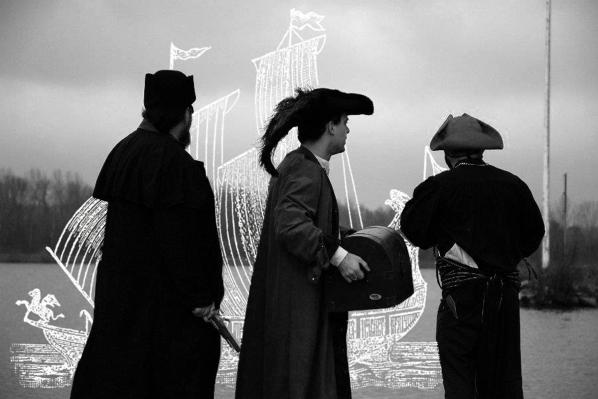
NF: What are international projects of monochrom? And what is the difference between monochrom audiences in Vienna and abroad?
GF: There are too many of those to be listed here. Since our big USA tour of 2005 we produce most of our projects bilingually in German and English, or only in English, in order to be able to have an international impact. Of course, many members of monchrom live and work in Vienna, and we also produce projects in Vienna, but our main focus is on our international presence. One of the big international projects, running since 2007 in San Francisco, is the Arse Elektronika: a conference on pornography, sci-fi, games and the development of technology. I would say that with the San Franciscans we’ve found the ideal community for such a conference.
NF: You call yourself “edu-hacker”. Why that and how is it connected with your studying and teaching experience?
GF: I have always loved reading, learning and continuing to further myself intellectually. I really enjoyed my studies and I enjoy sharing my knowledge and skills with my students. Universities are, in my book, places where it is possible to acquire knowledge, to reflect upon it, places of discussion and freedom. Because of the process of universities becoming more like schools, among other things caused by the Bologna Accords, those in my opinion are important areas that enable students to become self-reliant, critical people are struck from the curriculum. I’m trying to counteract this in my classes, trying to cause rifts in the school-like system, by using other methods of transmitting knowledge, using a great deal of humorous elements, and by always meeting the students eye to eye as equals.
NF: What is philosophical society in contemporary Austria now?
GF: Alive and kicking as always, I’d say 😉 One of the exciting things is that exactly now there are a lot of young, fascinating philosophers out there. The topics that I mostly concern myself with are, however, copyright, intellectual property, culture, art, media and technology.
NF: Is paraflows one of your biggest current projects? What’s the concept of this festival? Is it independent from monochrom activities?
GF: paraflows is surely one of the biggest projects that I am working on at the moment, apart from monochrom. monochrom helped to start and grow the festival in the first two years, as monochrom has done with many other projects worldwide. „paraflows – festival for digital art and culture“ has been established in the last seven years as a new annual festival situated between the Ars Elektronika and the Steirischer Herbst. It serves as both a platform for the young, local scene of digital art and culture and as an interface to international and renowned media art.
NF: How is monochrom activity is financed?
GF: We do get occasional subsidies for some projects, we get money from performances, the sale of our publications and sometimes the sale of a work of art, and recently we have also acquired crowdfunding. I’d say, however, that around 80% of the projects we do are not financed in any way and are purely done because we have fun doing them.
NF: Do your own curatorial projects serve in some way as a research method for you?
GF: I take the liberty that I only curate projects that I am very interested in myself. That is to say, projects where I have a very strong urge to explore the topic, to read, write and of course also to do research. That is probably the reason why I try to achieve a publication for each project that I curate, in order to give those who are interested in it some sort of preliminary report, a possibility to expand upon.
NF: Is activism capable to envision the future or does it just reflect, react on what is and has happened?
GF: It is getting increasingly difficult to be subversive. monochrom is fundamentally critical of the bourgeois world view. We examine it from a distance, dissociating ourselves from it. The question is: How do we get out? Our current late-capitalist aims for transgressions. That is to say that capitalism requires transgressions as a principle. Viennese Actionism, the most relevant cultural statement in Austria for the last hundred years, was doomed to fail at a certain point, because in the 60ies Austria still had a society based on discipline. One of the central strong points of monochrom: Finding the right story for the right medium could be a opportunity to deal with this situaltion.

NF: Which publications about monochrom you would recommend to read?
monochrom’s ISS. In space no one can hear you complain about your job. (2012)
monochrom’s Zeigerpointer. The wonderful world of absence (2011)
Urban Hacking. Cultural Jamming Strategies in the Risky Spaces of Modernity (2011)
monochrom #26-34: Ye Olde Self-Referentiality (2010)
Do Androids Sleep with Electric Sheep? (2009)
Pr0nnovation?: Pornography and Technological Innovation (2008)
monochrom: www.monochrom.at
paraflows festival: www.paraflows.at
(c) Natascha Fuchs is an independent expert in cultural projects management and international public relations, graduate of the University of Manchester (Cultural Management) in 2008. She has been living in Vienna, Austria, studying History of Media Arts at the Donau-Universität and collaborating with sound:frame Festival for audio:visual expressions, since her move from Moscow, Russia in 2011. In Russia she was related to MediaArtLab and Media Forum — the special program of the Moscow International Film festival dedicated to media arts, experimental films and digital context with more than 10 years history. As a researcher and practitioner, she works in a variety of topics and participates in different international projects focused on media arts, cinema and sound. Columnist and writer for several online magazines.
12 Remixes, by Michael Szpakowski
From August 2011 to July 2012, the video artist and musician Michael Szpakowski entered a remix competition every month, and compiled his remixes (some of them with accompanying videos) on his website. “I’m 54 years old,” he explained at the beginning of the project, “and although I’m musically reasonably deft I know little about the culture in which I’m attempting to intervene. I know none of the specialised vocabulary, can’t distinguish genres and although I understand what is being said, just about, I don’t speak the language in which posts or comments on this kind of work are framed.” The project, in other words, was a deliberate step outside his “comfort zone”.
The results are often startling. It’s worth comparing the remixes with the original tracks from which they derive, because it provides some insight into Szpakowski’s working methods, and makes you realise the extent of some of the transformations he has achieved.
One of the most striking examples is the remix of “Sandwiches” by the Detroit Grand Pubahs. The original track is a grotesquely overstated hyper-lecherous rap. A synthesised-drum-and-bass arrangement underpins a chipmunk-style speeded-up vocal, warbling lyrics of such obvious symbolism that they hardly qualify as suggestive: “I know you wanna do it/You know I wanna do it too/Out here on the danceflo’/We can make sandwiches…/You can be the bun/And I’ll be the burger, girl…/Make your thighs like butter: easily spread…” The effect is quirky, irritating and compulsive; tongue-in-cheek, deliberately outrageous, blatantly sexist and borderline pervy all at the same time.
Szpakowski’s remix has an entirely different feel. The vocals have been slowed right down from warbly chipmunk to entombed Darth Vader; correspondingly, the bassline has slowed too, from a prefabricated booty-shaker to something subterranean and slightly menacing; and in the space above there are echoey keyboard-notes floating and pulsing like luminous jellyfish. The effect of the lyrics is no longer leeringly voracious, but mournful, obsessive and introspective. There is an instrumental coda with a vaguely Scottish Highlands flavour to it. The feel of the track has changed completely, and so have its texture and geometry. We find ourselves in a darker, much larger space.
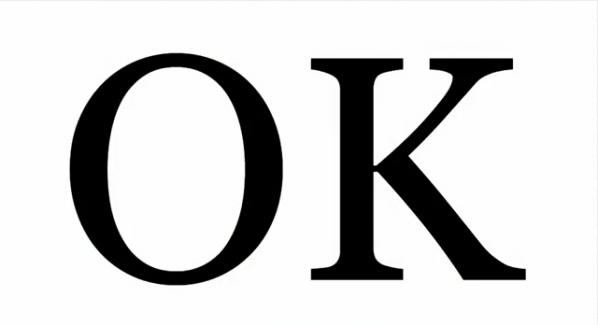
Another good example is “OK good stand clear”, based on “110%” by Laura Vane and the Vipertones. The original song is efficient, well-assembled funk/soul, complete with a punchy horn section and a sassy female lead vocal. It’s slick, sharp and professional, but hard-working rather than inspired. Szpakowski’s remix dispenses with almost everything except the rhythm section, which is slowed down slightly to give it more depth and a thumping creaky quality like an elephant in new walking-boots. To this he adds a sampled American voice saying “OK? Good” and “Stand clear of the closing doors!”, and a hammering piano-figure. Again the effect is to open the track out, to give it a more three-dimensional feel, and also to make it much less derivative, much less obviously the product of a particular genre.
In almost every instance Szpakowski’s remixes have a more resonant and spacious feel than the originals; the sounds are dirtier, fuzzier, more textured; and the rhythms are more complex. These changes may not always be entirely to his advantage. As he admits himself, “I don’t dance (or haven’t for twenty years or so), which actually makes a big difference in how one experiences popular music…” Certainly there is one track – a remix of “Paradisco” by Charlotte Gainsbourg and Beck – where Szpakowski’s version has a spiky, angular, echoey jazz feel, but loses out to the original in terms of finger-clicking compulsiveness. It’s true that his remix puts a stronger focus on Gainsbourg’s voice and lyrics than does the original; but whereas Gainsbourg and Beck’s version stays within the disco format and gives it an iconoclastic indie makeover, Szpakowski’s remix takes us beyond that format altogether, and comments on it from the outside.

In some of the tracks there is a move from the USA to Europe in terms of feel. One example is the remix of “What happens in Vegas” by Chuckie ft. Gregor Salto – a histrionic slab of USA club music. Szpakowki’s version (“Shit happens in Vegas”) has a distinctly Kraftwerk-esque, European-techno slant. Also, because the remixes are often crackly, fizzy and hissy, they tend to feel “older” than the originals. At times we seem to be listening to badly-tuned radios in the pre-digital era, or to vinyl LPs smothered in dirt and played through a fluff-laden needle. But this “distressed finish” effect is in keeping with a broader sense that Szpakowki’s remixing technique involves a kind of deconstruction or breaking-apart of the tracks on which he is working. They become less smooth and shiny, less self-contained. The original tracks are often tightly-focussed in terms of their musical styles, with a narrow range of subject-matter, and often with manipulative designs on the audience – wanting to make them feel like dancing, wanting to make them feel sexed-up, or trying to tug at their heart-strings (“Try to Stay Awake” by Frank Friend, “Trojans” by Atlas Genius and “Jigsaw” by Mimi Page are all relationship-based heartstring-tuggers). The remixes, on the other hand, aren’t looking for such straightforward reactions. Their subject-matter is less easy to pin down, and their ingredients bespeak a mixing-together of disparate materials, different cultures, and even different eras.
Non-musical ingredients are one noteworthy feature. In “OK good stand clear”, the voice saying “Stand clear of the closing doors!” comes, as Szpakowki explains, from “New York subway recorded announcements… grabbed, I think, from YouTube”. He is also fond of introducing a voice intoning random numbers – this occurs in several of the tracks. Usually the voice has a foreign accent, and sometimes the numbers are spoken in a foreign language. These number-sequences, says Szpakowski, come from “the so called ‘numbers stations’ which are believed to have been used by various intelligence agencies… they’re available at the internet archive“.
On “I’m getting a cat” the words come from mashed-up Tweets which have been run through a voice-to-text synthesiser. “I am that I am” borrows its vocal from the painter and sound poet Brion Gysin – a voice-sample which, until it begins to distort, sounds rather like a 1950s announcement on the BBC. “Speaking in Tongues” reverses the vocal on a hectoring soul track by Colonel Red called “Rain a Fall”, so that it ends up sounding as if it’s in some unspecified European or possibly Middle Eastern language. And “Sugar Plum Fairy on the Dancefloor” introduces the chiming melody from Tchaikovsky’s Sugar Plum Fairy into a rap called “Disco Technic” by Stan Smith, to surprisingly good effect. There is a genre-busting transgression of boundaries, a throwing-together of cultures, a jumbling-up of eras, and a deliberate use of incongruous material.
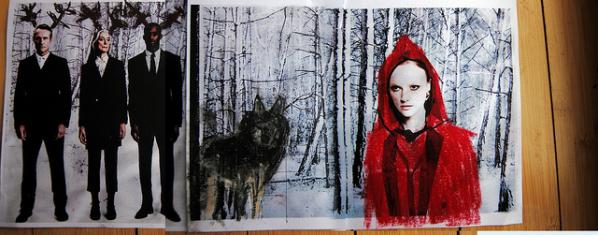
The videos Szpakowski has produced to accompany some of these tracks show similar traits. Again his admission that he doesn’t dance is relevant here, because the starting-point for many music videos – a very tight and emphatic synchronisation of visual effects with the beat of the track – is not a particularly dominant feature in his work. The one which succeeds best in this respect is the video for “OK good stand clear”, which projects text versions of the words onto the screen in big letters precisely as we hear them. There is also a lovely moment in the video for “I’m getting a cat” where, in a bit of old black-and-white footage, some youngsters sitting on chairs on a stage start to sway from side to side, apparently in time to the music.
But synchronisation to the beat isn’t Szpakowski’s priority. “I’m getting a cat” provides a good example of the kind of effect he achieves instead. The synthesised vocal for the track first announces that it’s getting a cat, then starts to ask absurd questions about cats and cat-care – “Does your cat try to style your hair?”; “What is your funniest and yet painful cat story?” – which are gradually infiltrated, first by other subject-matter – “Become a big brand on Facebook!” – then by symbols – “Poundsign poundsign poundsign” – and sequences of numbers. What starts off as funny, ironic and nostalgic develops or breaks down into a kind of digital fragmentation, and eventually into wordlessness. The end of the track is a wistful instrumental coda, embellished with piano and strings. And the video follows much the same path. It starts with old footage from the 1960s White House, in which President Lyndon B Johnson seems to be announcing his intention to get a cat to his slightly-bemused aides. Then there are some outtakes from what seems to be an instructional video in which a troubled youngster is being given helpful advice (presumably cat-care advice) by a reassuring and helpful older man. By the end of the track – the coda – we are watching teenagers playing music, drinking coffee and dancing. Again, humour and irony have been replaced by something more wistful and hard-to-define.
“Found” materials, often quite disparate materials spliced together by digital means, are just as important to the videos as they are to the remixes: they feature archive footage of the Whitehouse; shots of groovy teenagers from the Fifties or Sixties; Japanese Noh theatre; imagery based on Little Red Riding-Hood; square-dancing American kids; old claymation footage of teeth wearing boxing gloves; big black lettering; jumbles of coloured pixels; and images of Las Vegas captured from Google Maps, reconstituted into a long sun-baked backwards drive from the middle of town into the desert. Like the musical tracks they accompany, these videos cull their materials from many disparate places; they are full of little jolts of incongruity, slightly-bizarre juxtapositions; they lead us not only inwards towards the music but outwards towards different cultures and different eras; and they also call our attention to the digital medium itself, the Web on which all these materials are available, and the computer software which slices and splices them.

Perhaps most remix artists are more influenced by the work of their immediate peers than by art theory, art history, or inspiration drawn from other cultures. Not so with Szpakowski. As mentioned before, one of these remixes (“I am that I am”) uses a vocal track from Brion Gysin; and the words “OK good”, from “OK good stand clear”, are sampled from a recorded talk by William Burroughs. Burroughs and Gysin were the first proponents of cut-up and fold-up techniques in literature: Gysin was also an experimental painter and sound artist. This link with the two of them hints at a connection between Szpakowki’s remix style and modernist or post-modernist art. Remix culture itself is closely related to mash-ups, which in turn (whether remix artists are aware of it or not) can trace their ancestry not only to cut-ups and fold-ups but to the collages, bricolage, decalcomania and other mixed-media, mixed-genre experiments of the Modernists: experiments which reflected not only an urge on the part of Modernist artists to break free from received genres and formal conventions, but a feeling that the modern mind did not belong to a single era, a single unified body of belief or a single point of view – instead it contained many disparate perspectives, and ideas or images from many different eras and cultures, all thrown together into a jumble. For the modernists, this jumble was itself both one of the joys and one of the symptoms of modernity.
For modernist and post-modernist artists, formal perfection is often a secondary consideration, compared with the excitement of putting things together in new ways, seeing things from new angles. T S Eliot (in “Tradition and the Individual Talent”) described the mind of the artist as a “medium…in which special, or very varied, feelings are at liberty to enter into new combinations”. He made the same point in “The Metaphysical Poets”: the artist, he argues, “is constantly amalagamating disparate experience”; and modern art is bound to be more complicated than the art of earlier centuries, because modern life itself has become more complicated: “Our civilization comprehends great variety and complexity, and this variety and complexity… must produce various and complex results.” It was also argued, by various theorists, that modern artists found it increasingly difficult to belong wholeheartedly to a particular tradition, or to stick to a particular working method or lexicon of forms, because mass reproduction had made so many different traditions and examples, from so many different eras and cultures, available to them. If these observations were true at the beginning of the twentieth century, they are most certainly true now, at the beginning of the twenty-first, when life is characterised not just by “variety and complexity”, but by information-overload, and when the work of other artists, other eras and other traditions is available not only in museums, libraries, books and prints, but online at the click of a mouse or the blink of a Google query-screen. So one way of understanding Szpakowski’s remixes – his particular take on what a remix ought to be like – is to look at them in the light of modernist, post-modernist and digital-modernist aesthetics.
Another neo-modernist aspect of these remixes is their reluctance to woo the audience. There are moments when the arrangements are slightly unsympathetic to the listener. One example of this is “I’m getting a cat”, where the voice-over stops asking absurd questions about cat-care and starts coming out with fragmentary nonsense about Facebook, number-sequences, and “poundsign poundsign poundsign” instead. The “poundsign poundsign poundsign” sequence, in particular, goes on to a point where a lot of listeners might find themselves wishing it would stop. Similarly, on “I am that I am”, the voice-over, which starts with a sequence of variations on the theme of identity –
I AM THAT I AM
AM I THAT I AM
I THAT AM I AM
THAT I AM I AM
AM THAT I I AM
– soon gets speeded-up and distorted into an incomprehensible babble, and this babble is so loud and frenetic that it’s quite hard to hear the music. Again, some listeners may find themselves wishing that the voice-over would stop.
As already mentioned, the vocal track in “I am that I am” is based on an original piece by Brion Gysin, and Szpakowski has actually cut it down in order to re-use it – so although Szpakowski’s track may seem a little bit tough on the audience, it’s actually quite a bit less demanding than Gysin’s original. But the link with Gysin provides a clue to the aesthetics which are apparent throughout the whole “12 Remixes” project. “I am that I am”, as a text, is based on the idea of reordering a five-word line into all its possible variations, as can be seen from the extract above. As such, it has a mathematical quality. It resembles “ordinary” poetry in the same way that a peal of bells resembles “ordinary” music, and its structure and length are determined, not by any particular ideas about what may sound good to an audience, or what may provoke a certain emotional effect, but by the need to run through all the possible variations of a certain sequence in a certain order.
As a sound-poem the piece progresses in a similar way: Gysin takes his sequence of statements, and gradually adds echo to them and speeds them up until they become a frenzied babbling noise. In other words he performs a set of mechanical distortions on them, and increases or redoubles those distortions until they have reached a logical conclusion. Again, he is not particularly thinking about what will grip, entertain or move his audience: his attention is fixed on the materials, the medium and the process. This is not to say that “I am that I am” does not have any affect. It is delivered in the ringing tones of a self-important orator, and when the first layer of echo is added we imagine that the speaker might be addressing a rally in a great hall, like Citizen Kane, Mussolini or Hitler. But the self-assertion of the words is then turned into nonsense as the layers of distortion pile up. We feel firstly that great leaders and orators and being mocked, and then that identity itself is being called into question. But we also feel, as listeners, that these reactions may belong to us at least as much as to the piece itself: it has not been designed primarily with the purpose of producing them, and if we failed to experience them the piece would still have a purpose and meaning of its own beyond them, as a peal of bells has its own purpose and meaning whether we enjoy the sound of it or not.
This concern with sequence and process, with breaking things down into their constituent elements and then reorganising those elements according to mathematical rules, can again be related to the experiments of modernism – to the modernists’ determination to question and rearrange the materials and media from which works of art are made – but as the example of the peal of bells indicates, it can also be linked to much older forms of art; and at the same time it has a particular relevance for artists who are working with computers and code. Five words being reorganised into every possible sequence will produce a flicker of recognition in anyone who has every attempted code-poetry. It’s the kind of experiment which sits very naturally in the digital environment and the new media art genre.

Szpakowski’s remixes cannot be described as mathematical sequences or coded music, but they certainly do show evidence of a Gysin-like interest in variations and logical progressions. This may make them seem a bit unsympathetic in places, but it also gives them a certain air of toughness and detachment. As already mentioned, if they are compared with the original tracks on which they are based, one difference to emerge is that they don’t seem to have such obvious designs on their audience. But it’s also true that they don’t tend to follow such obvious paths in terms of musical development. If we look at “In Paradiscos”, for example, the original track has a very strong feeling of moving up a gear when it comes to the chorus, whereas Szpakowski’s remix doesn’t follow the same pattern. Another example is “the moon is inside the snow”, a remix of “Blindsided” by Luke Leighfield and Jose Vanders (which is itself a cover of an original track by Bon Iver). In Leighfield and Vanders’ version, there is a definite sense of drama and progression, as the female vocal is joined by piano and violin, and then by a male voice singing in harmony. By the end of the song, we feel that we have been taken on an emotional journey. It has a narrative arc. Szpakowski, on the other hand, dispenses with the male harmony altogether, and also with large sections of the song’s lyrics. He cuts up and rearranges snippets of the female vocal to create quite a different impression – more of a Haiku than a romantic poem – and he alternates the original vocal with a second female voice talking in Japanese. The end result is just as beautiful as the track on which it is based, but in a quite different way. It’s more austere and contemplative, less narrative and dramatic. It seems to be less about recounting a personal experience, and more about organising disparate elements into an aesthetically satisfying pattern.
Modernism, cut-up techniques, digital experimentation – perhaps these are big perspectives from which to view what is essentially a fairly modest project. Szpakowski didn’t set out on this series with any particularly grandiose ambitions: he set himself the task of producing one remix a month for a year because he thought it would be something interesting to do: it would build on his strengths as a musician and technophile, but it would also set him a series of new challenges. As it turns out, he has risen to those challenges to great effect and produced something really special – a collection which shows variety of tone and pace, wit and inventiveness, along with unity of design and a distinctive “voice”. Whether it’s a digital-modernist take on remix culture or not, anybody who is interested in experimental music could do a lot worse than put their headphones on and give it a try. It certainly repays close attention.
Featured image: Jon Satrom (left) and jonCates at Intuit, Sept. 20, 2012 (right). image: Shawne Michaelain Holloway
Post-Static: Realtime Performances by jonCates and Jon Satrom @ Intuit, the Center for Intuitive and Outsider Art (Chicago). September 20, 2012. Programmed by Christy LeMaster
“Alchemy; the science of understanding the structure of matter, breaking it down, then reconstructing it as something else. It can even make gold from lead. But Alchemy is a science, so it must follow the natural laws: To create, something of equal value must be lost. This is the principle of Equivalent Exchange. But on that night, I learned the value of some things can’t be measured on a simple scale.”[1]
In 1966, Bell Laboratories scientists and engineers collaborated with artists to construct several performance-based installations under the title 9 Evenings: Theatre & Engineering. Works included Variations VII by John Cage and performance engineer Cecil Coker, in which a sound system pulled sounds from radio, telephone lines, microphones and musical instruments, and Carriage Discreteness by Yvonne Rainer and performance engineer Per Biorn, a dance event controlled by walkie-talkie and TEEM (theatre electronic environment modular system). Critic Lucy Lippard was wrote that the event was filled with technical problems and that the artists involved allowed the technology to take precedence over the art. She pointed out that no theatre people took part in the event and suggested that while this event did not offer a specific design for a new approach to theatre, it revealed the possibility that new approaches to theatre might be born from the combination of art and technology:
A new theater might well begin as a non-verbal phenomenon and work back towards words from a different angle. Departing from Samuel Beckett’s highly verbal, single-image emphasis, it could move into an area of perceptual experience alone, its tools a more primitive use of sight and non-linguistic sound. Such a theater would not necessarily be the amorphous carnival of psychedelic fame but could be as rigorously controlled as any other.[2]
She also observed that it was often impossible to understand the relationship between the technology and the events it triggered without reading the program, mentioning one such missed connection in Open Score, by Robert Rauschenberg and performance engineer Jim McGee. In this piece, tennis rackets were wired such that each impact of the ball on a racket turned off one light in the performance hall. Lippard wrote that this connection was not noticeable and thus the conceptual framework of the piece was lost to the audience.
To artists working at the intersection of art and technology more than forty years after this event, it is disturbing to note that the same issues Lippard pointed out —the subjugation of concept to technology, the failure of the technology itself and the lack of a radical approach to the intersection— are still all too present in many works taking place in the worlds of new media art [3]
. None of these were issues for jonCates or Jon Satrom as each presented a performance intersecting with the exhibition “Ex-Static: George Kagan’s Radios” at Intuit, the Center for Intuitive and Outsider Art in Chicago, IL. Their performances serve as examples of new media employed as a tactic in support of art rather than “new media art” as a condition represented by infatuation with expensive devices. Instead of yet another demo of “cool” tech, the audience experienced a rigorously controlled blast of chaos.
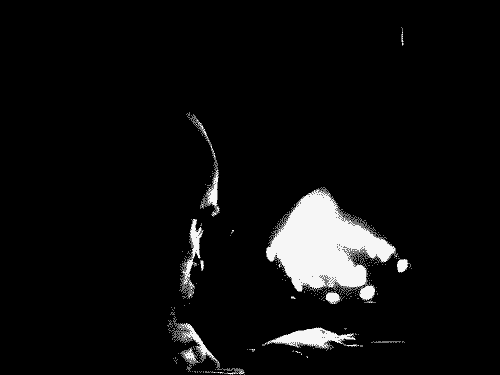
The lights go down completely and we are illuminated by a large amorphous video projection behind a table stacked with equipment. The video is black and white as is the video monitor facing us from the table. jonCates moves between the back and front of the table, with purpose. While the equipment stack is familiar, multiple mixers and cases, this is no DJ set. Much closer is the image of a few men in long sleeves and ties tending to tables full of equipment for John Cage’s “Variations VII”. With several nondescript devices on and adjusted, the air around us has become alive with a noisy drone that, by this date and to this audience, is very familiar (parallels extend back to sonic attacks from Peter Christopherson and Chris Carter with Throbbing Gristle) but now the sound is comforting, an aural field that is neither alien nor distracting.
A droning, machine sound, or the droning machine sound, has become a ridiculously common element of a contemporary “experimental” sound and video work. It is thus all the more surprising to be instantly drawn into jonCates’ audio, to take pleasure in it and to lose track of time completely. We are watching him control the mixer and occasionally speak into the microphone that is set in front of a conspicuous security camera. Again, jonCates uses the most expected situation —the camera faces upward toward the video projection screen, creating a counter-clockwise tilting feedback loop. And again, we are not distracted by this, it is familiar yet beautifully framed and we are drawn in. We have been invited to a field constructed by a tactician expertly employing simple situations.
The raw quality of both the droning audio and the feedback loop combine with jonCates’ humble appearance to remove the expectation of a spectacle and we return to the real situation with questions: who is this man and what is he going to do? He keeps speaking into the microphone, his eyes look desperate, and, despite seeing him perform a similar (although much less engaging) performance at the 2011 Gli.tc/h festival, we are surprised as we realize, as it is nearly two-thirds complete, what he is doing: giving a lecture.
jonCates has been speaking for some time but only a few echoed fragments are reaching out beyond the drone. It has been an incantation without purpose, a repetition of the meaningless words one says when one is presenting something to an audience. Finally, jonCates drops the distortion and the volume on the droning sound and his voice becomes clearer. It is obvious that some communication is going to happen and everyone shifts slightly as we strain to remember how to listen to a voice. Are we here to see another performance or hear something important?. The voice is not strong and it has no authority. It is perfectly ordinary, slightly academic with a hint of vulnerability. It’s the voice of a mad scientist who has begun to understand that his experiments may be his undoing. At this point the piece could collapse and jonCates has not propped himself up with his technology. Instead, he’s used it to lead us to key moments and obliterating everything else. Still, he seems not so much frightened as curious to see where this will end, if what he needs to say can be given a short lifespan in this space. This is where performance lives —in the unfolding present. And jonCates says:
“…and I thought [?] … I thought [?] about how I should remix something in realtime for you that I should reflect upon the past, I should reflect upon [?] …patterns so I thought that I should probably do this as a remix and render it in realtime for you but then I found … from 1997…and it was sitting right next to the first tape … it was sitting right next to the first tape, had the same title as the first one, that also said “Flow” and right next to it had another a label that said “Remix” and I thought ‘I already made that piece’ [sampled voice droning: ‘oceanic waves upon waves upon waves upon waves’] and that’s almost too good to be true so I put the tape called ‘remix’ into the VCR, not this VCR. I had to buy a new VCR that VCR broke and … called ‘remix’ .. rendered in realtime for you … and I watched it, and almost [? ] [?] decide … I had already … [sampled voice droning: ‘we can stay in the spell of the laser lights’] … and I’ve been thinking about these things … [sampled voice droning: ‘we are all together … in the time space continuum of … of … of …’ and the drone continues.]”[4]
“The peculiarity of the time bounce, as he mulled it over, was that the resumption of the earlier state of being not only set physical objects back to their former positions, it actually wiped out the events of the lost hour. Like daylight saving indeed! With the lost hour unhappened, even memories of the time were obliterated…They might be reliving a given moment for the fifth time, the fiftieth, the five millionth, and never notice it!”[5]
“A representation is the occasion when something is re-presented, when something from the past is shown again —something that once was, now is. For representation it is not an imitation or description of a past event, a representation denies time. It abolishes that difference between yesterday and today. It takes yesterday’s action and makes it live again in every one of its aspects —including it’s immediacy. In other words, a representation is what it claims to be —a making present.”[6]
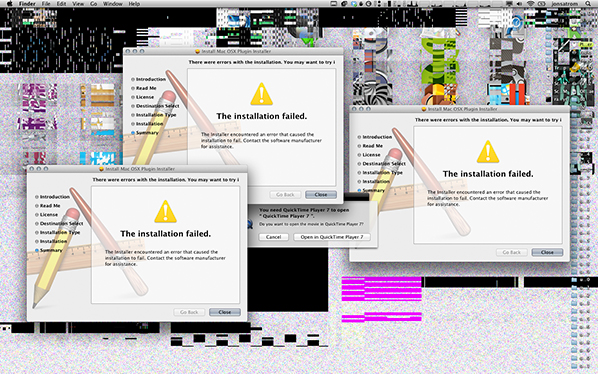
“For every organ-machine, an energy-machine: all the time, flows and interruptions. Judge Schreber has sunbeams in his ass. A solar anus. And rest assured that it works: Judge Schreber feels something, produces something, and is capable of explaining the process theoretically. Something is produced: the effects of a machine, not mere metaphors.”[8]

They are called radio buttons because on old car radios you pushed one button and the other popped out. The performances of jonCates and Jon Satrom were developed as an intersection with the exhibition Ex-Static: George Kagan’s Radios at Intuit, the Center for Intuitive and Outsider Art, on display until January 5, 2013, curated by Erik Peterson and Jeremiah Hulsebos-Spofford.
“In the wee, wee hours your mind get hazy / Radio relay towers lead me to my baby / The radio’s jammed up with talk show stations / Its just talk, talk, talk, talk, till you lose your patience”[9]
jonCates makes Dirty New Media Art, Noise Musics and Computer Glitchcraft. His experimental New Media Art projects are presented internationally in exhibitions and events from Berlin to Beijing, Cairo to Chicago, Madrid to Mexico City and widely available online. His writings on Media Art Histories also appear online and in print publications, as in recent books from Gestalten, The Penn State University Press and Unsorted Books. He is the Chair of the Film, Video, New Media & Animation department at the School of the Art Institute of Chicago:
http://systemsapproach.net/
Jon Satrom undermines interfaces, problematizes presets, and bends data. He spends his days fixing things and making things work. He spends his evenings breaking things and searching for the unique blips inherent to the systems he explores and exploits. By over-clocking everyday digital tools, Satrom kludges abandonware, funware, necroware, and artware into extended-dirty-glitchy-systems for performance, execution, and collaboration. His time-based works have been enjoyed on screens of all sizes; his Prepared Desktop has been performed in many localizations. Satrom organizes, develops, and performs with I ♥ PRESETS, poxparty, GLI.TC/H, in addition to other initiatives with talented dirty new-media comrades.
http://jonsatrom.com/
Sam Renseiw and Philip Sanderson’s Lumière & Son project is a near perfect and altogether exhilarating sequence of moving image lyric poetry (though lyric here does not exclude humour or the grotesque) and a demonstration of how seriality and fragment – an unfolding over time, the diaristic – has quietly become one of the fundamental modes brought stage centre by the network (so much more than the rather dull ‘interactive’ which has so quickly become the standby of the monetised digital). Impossible to watch one of these pieces without the desire to watch just one more.
The set (which lives online but has been shown offline in whole and part) and its component pieces, moreover, are studies in various interesting things: the liberating effects of constraint and collaboration and what those both demand and imply; also of randomness, or perhaps better, the loose, the dashed off, differing degrees of accuracy in such collaboration (also the apparently dashed off, the apparently loose [also the apparently synchronised or ordered]).
To start with, a little history. In 2007 two young members of the digerati, Andreas Haugstrup Pedersen and Brittany Shoot, invented a form and threw down a gauntlet. The form, in fairness, was not exactly new – over 100 years old, actually – but its re-contextualisation within the digital realm and more particularly on the network was, without exaggeration, a stroke of genius[1]. It involved taking precisely the constraints affecting the films of the cinema pioneers, the Lumière brothers, and applying these to contemporary online video work. Films or videos of exactly one minute, fixed camera, no sound, no zoom, no edits. Such videos dubbed, naturally, ‘Lumières’. There was clear recent precedent in the constraints of the Dogme movement of Von Trier and others but the project also drew on the various little-bit-art-little-bit-geek, young, playful cultures which abutted and intersected the more formal area which we called, for a while, ‘net-art’, and which thrived on a sparky and often competitive and showy overcoming of the early net’s limitations of file size and bandwidth – projects like 5k.org, 10secondfilm.com spring to mind.
Additionally, because the start of modernism still does not really seem all that far away, early film was a natural reference point for many wrangling the early internet as art tool and channel both.
We responded viscerally to the sheer, almost willed-into-being, expressivity of the ad hoc devices and solutions of early film and this fitted snugly with the bodges we ourselves were employing. It gave us confidence, too, that our ducking and diving too could be expressive but also it confirmed a certain tendency to lo-fi-ness there in the zeitgeist. (I speculate – a lo-fi-ness which helped to define and declare art – useless, beautiful and human – as against the slickness of corporate design, communication and advertising… This has persisted remarkably – note the thriving on-going cult of the animated gif)
That was the form. The challenge – make some. Embrace that 100+ year old limitation and do something engaging with it. Push the form as far as it will go.
Pedersen and Shoot set up a web site where all contributions would be aggregated and indexed (in retrospect, somewhat unfortunately, by links rather than copies held on their server – much work of historical significance has already vanished. Shoot and Pedersen themselves have moved on and the site has a Marie Celeste feel). In addition to the site itself, there was a Lumière manifesto which, personally, I found a little narrowly focussed. Shoot and Pedersen seemed to invoke a near ethical dimension to the return to first principles and in their own moving image practice confined themselves to work (much of it very good) entirely within this discipline. It was clear from the huge response of other artists and film-makers though that the form clearly answered a diverse set of pressing needs. For some it was a cleansing activity, for some a sketchbook, for others a spur to invention and for others still, a challenge in the sense of “How can I observe the spirit of the rules whilst actually driving a coach and horses through them?”
Although the Lumière made next to no impression on the ‘official’ world of art video (one speculates – cynically, perhaps – too democratic and available to anyone with a cheap camera, too ontologically opposed to the expensive grandeur of high concept, too hands-dirty in a world where artists aspire to hire videographers and editors to realise their art; in short, too lacking in the conspicuous consumption that validates much contemporary work), it was enthusiastically taken up by a mixed bag of videobloggers and artists excited by the idea of video specifically made for the net.
An immediate adopter and one of the most enthusiastic and prolific makers of Lumières was the Danish architect, educator and thinker, Thomas Wiesner, who operates in online video as Sam Renseiw and maintains a quirky and engaging site called Spacetwo: Patalab. Renseiw (as he prefers to be known in a video context) is a maker of numerous very singular small video works, which evince his keen interest in space and movement within spaces. (He teaches not only architecture but also a course for dancers involving approaches to conceptualising movement in space). I’m not sure Renseiw completely understands how original his work is. It is characterised by a joy in careful, quizzical looking (and a spontaneity in finding or being gifted subjects for such looking, assisted enormously by the continual development of more portable and discreet video cameras). It is, in terms of the formal art world deeply unfashionable. Personal and diaristic, it eschews the grand concept and extravagant and expensive execution and is all the better for this.
Renseiw has a profound sensitivity to space and to how people and objects move along variously restricted and open trajectories but he is mindful too of what the ‘actors’ in these found scenarios, set out to do and in fact achieve as human beings. The gap between aim and reality provides fertile ground for Renseiw’s dry and humane sense of humour, which is never far distant.
Significantly his prolific Lumière making (337 at the time of writing) sits side by side with longer (though still lapidary) works with music, editing and the other things the Lumière eschews.
Renseiw’s Lumières are characterised by a number of quite distinctive things. Something that unites them all is a quite extraordinarily heightened sensitivity to both colour and composition, which formal feature hits us forcefully in the moments even before we begin to decode any content or action. Formally striking too is the way in which a number of the pieces are composed so to as to allow for action in the near, middle and far distance, sometimes in different sectors of the frame, sometimes simultaneously in a kind of layered visual counterpoint and sometimes spread out temporally. My imputed intentionality here is somewhat problematic, though Renseiw confirmed to me that he shoots much more material than he uses and that he will select a particular minutes worth of material from longer sequences so on two counts there is a rudimentary (though nominally forbidden) editing process occurring. A quick comparison with Lumières by other film-makers will however confirm that Rensiew’s singular vision distinguishes each of his pieces from the off.
Other signatures are extremely low, oblique or occluded camera positions, into the fields of which parts of human bodies mysteriously intrude. This sounds clinical. Curiously it is the opposite. Redeeming it is a genial humour which allows the part to stand for the whole – we perforce imagine the entire human being whilst smiling at the V-effekt with which we are presented – for example a pas de deux for a pair of woman’s black leather boots (on the ends of beyond-the- frame legs) and the four paws of a black dog – randomness, clumsiness, near misses, narrow escapes and – we just know because we are human – purposeful activity. Human life, in short.
Another defining stamp is a musician’s sensitivity to rhythm and tempo – rhythm as manifested both as near metronomic regularity – someone’s gait, traffic flow, a hammer, for example, with either disruptions – slowings down, speedings up, pauses, stutterings – to that regular pattern, or polyrhythms created by other simultaneous independent near regularities and variations therefrom.
There are three loose categories into which Renseiw’s Lumière work could be said to fall (of course they’re by no means entirely mutually exclusive) – we’ll call them the loop-able, the documentary and the performative. The loop-ables are kin to the still photograph, are often of natural phenomena or repetitive but irregular human engendered activity where one could imagine the minute’s imaging infinitely, hypnotically extended – the flashing light patterns in Belisha Code for example. The documentary tag applies where the topic itself might be assumed to have some independent interest, for example the workers transporting away in a sling Copenhagen’s Little Mermaid for a trip to Shanghai’s 2010 expo in Speaking Voice or Michelle Obama’s motorcade in Rite of Passage. In what I’ve called the performative, richest of all in my view, an amazing amount of stuff happens. And everyday stuff happening and rendered vital by keen eye, framing and selection rather than something we might have known to look out for, is key. The differently distanced layers referred to earlier partition the frame physically or the piece temporally and unexpected things happen against and within them. We participate in these dynamically as viewers – we view this strange jigsaw world and complete it mentally; sketch a world beyond which is not simply our lived world but that world somehow leavened with Renseiw’s odd and warm sensibility.
I’ve written pretty glowingly about these Lumières – constrained, silent but surprisingly un-austere and you could well think that to add sound, music or both and several layers of these to boot might be over-egging it all somewhat. So one would think, but I have complimentary things yet to say about skill, tact, panache, flair and sensitivity and they are heading the way of Philip Sanderson, Renseiw’s musical/sound collaborator in the extended Lumière and Son project.
Renseiw’s Lumières are, I hope I’ve established, rich, dense, multi-layered but remarkably uncluttered works. A number of these pieces approach as closely as possibly the condition of music whilst remaining wholly without sound. It might seem superfluous or an act of hubris to add sound to them, the consequence of which could be to render leaden, stiff and fixed what is light, playful, complex and turns on a sixpence.
With the exception of a couple of near misses Philip Sanderson’s sound and music additions triumphantly avoid this trap and indeed deepen those rich and quicksilver qualities.
It’s important to note that what Sanderson contributes is all found or appropriated material – it’s possible he’s added original material in, I don’t know, but it’s not a significant chunk if he has – he certainly reworks much of it intensively, usually in the form of a mix of several layers of sound, some musical, some textual. (And we should note that Sanderson’s wit and deftness is literary as well as musical).
The deployment of sound gains enormously from Sanderson’s huge and eclectic range of knowledge, reference and enthusiasms. There’s a cooking metaphor in here – mixing the ingredients, finding just the right, perhaps almost imperceptibly present flavourings, knowing the qualities of things and how to combine them well…
Elsewhere I have asserted that the key feature of the most successful short form video work is a combination of intense poetic compression with a huge range of suggestion. I called this opening-out – a universe from a speck of dust. An ability to evoke the range of connectedness of many disparate things by well-chosen images, sounds, texts, whatever can pertain to moving image. Certainly Renseiw’s work has this in spades. Sanderson’s sound opens-out the movies still further. It adds, almost literally, an extra dimension, as if enabling new angles of view. It provides paths, bridges, vistas, tunnels, maps, balloons, telescopes, and sonar.
The guiding methodological principle seems to be a species of metonymy and one moreover which suggests an, in practice entirely non-existent, explanatory or illustrative dimension. The flashing beacons in Belisha Code are accompanied by a recording of a numbers station where one’s immediate impulse is to construct entirely absent meaning in the correspondence of the binary on-off of the four beacons and the German numbers from zero to nine heard on the soundtrack. Let’s be clear that this is not a criticism – a rigorous correspondence would be leaden – closed-in – but what we do have is a rich package of suggestion and affect. The correspondence that does exist is formal and temporal, between the flashes of the beacons and the articulation of the words and where the same sort of rickety polyrhythms that we’ve observed within the original Lumières themselves ensue.
Although comparison of some of Sanderson’s sources with their use in the pieces evidences, on occasion, some quite detailed cutting, mending and buffing-up there is an inescapable sense in his deployment of sound of the somewhat aristocratic tradition of the modestly dashed off. It’s partly his clearly extensive knowledge of his sources and his evident skill with a huge variety of genres but it’s also to do with a certain ambiguity in how the sounds are placed – not four square upon, but athwart the images, the sound often only fading or vanishing well after we’re into Renseiw’s end titles. Sometimes the sound is clearly not cut to shape in the way one might at first expect – an introduction, for example proper only to the original sound itself and not to any clear visual motivation might be left standing. The imperfections, noise, oddities and glitches contained within each block of appropriated sound intensify this sense of informality as does the slightly culinary air referred to previously. On the other hand, often enough to matter, the sound directly lines up in a spine tingling way with a particular action. It’s a master class in expressive ambiguity.
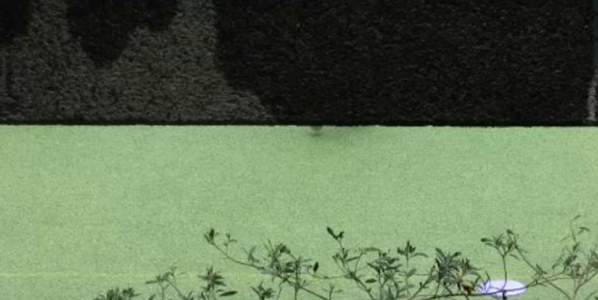
Renseiw – physical poetry, the occlusion, constraint. The careful choice of footage (variety and kind of motion within a narrowish range). Humanism: we don’t see faces, we don’t hear voices, we are amused but we recognise ourselves, youth and age &c.
Sanderson: The music found but could have been composed. The artfulness of placing it just thus. We will never know whether the way it ends with the action, the running off, taking place just after the repose of the final minor chord was deliberated or found. For me this placement implies a universe beyond the letterbox. It has a commonality with the treatment of time in many photographs and paintings – this is an instant, a fragment, but there was a before and an after.
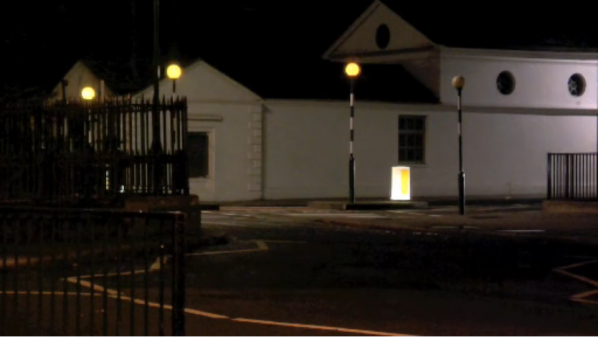
Note that there are four beacons. The sound (a numbers station, one can almost track the archaeology of impulse!) draws on the numbers 0-9, in German. It’s worth noting there is no obvious mathematical mapping between the pattern of the beacons and the numbers but the character in sound of the numbers is close to that of the beacons in light. Suggestion, metonymy.
This forces our attention very strongly on that area of the screen, with the concomitant effect that when we force our attention away it is as if our eyes have been suddenly opened. There is a world out there.
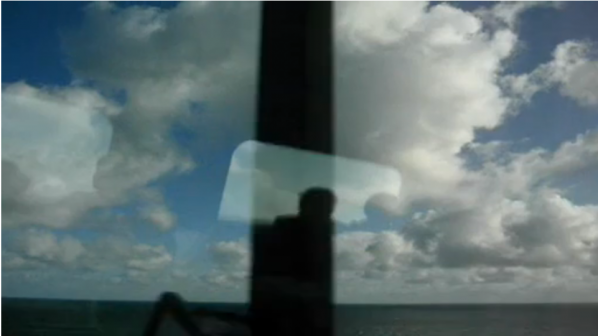
There is a hint of the transcendent in the title – how is this realized? Unless we know Denmark it takes a few moments to realize we are on a train rather than a boat or plane – we are clued into this by the close objects we clearly pass at speed and the reflection of passengers and seating in the windows. One speculates that the sound track is comprised of two elements – one the rhythmic and metallic pulse which somehow rhymes with the passing object (a kind of pseudo-diegesis) and the second an (Open University?) lecture on relativity.
Here, not exactly metonymy but something more fragile, delicate chains of suggestion and subtle resonance. No argument (to see an argument in any of this would be to commit a category error) but a complex and suggestive …um…thing. One should also note that this piece (in both its silent and extended versions) is extremely beautiful.
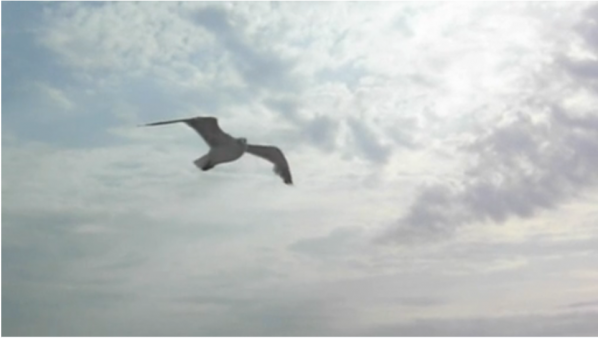
Let’s talk about the sensibility and taste of the makers. Renseiw offers something simple, a kind of tour de force – we perceive it as such although given the fixed camera constraint any virtuosity belongs to the seagull.
A banal seasoning of music would involve simply the seven note modal motif which hails, I’m almost certain, from American popular song of the 70s big country type – Wichita Linesman, you know the sort of thing. (I checked with Sanderson –it’s Bobby Goldsboro’s Summer The First Time) By itself it would be too perfect, too parallel to the floating bird (it seems to give way to a crashing wave sound in its looped form; interestingly the Goldsboro video I found on YouTube begins with a shot of gliding seagulls). With too much parallelism nothing extra arises but Sanderson spices the mixture by the addition of dialogue from what sounds like an American film of the forties or early fifties. It disrupts the idyll but only so as to make us more aware of it. There is a kind of musical V-effekt here (which could have been so badly handled and so isn’t). This is its ‘meaning’ – these things! Here, now!
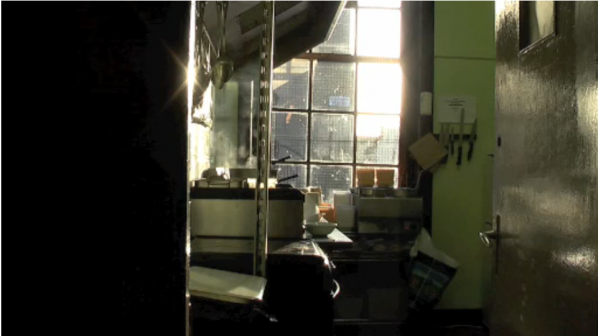
There is something of the dance about this. The music beautifully picks up both the nervous, sudden gestures of the cook but also suggests the process of cooking itself. The music has a funk component. One might say that it cooks.
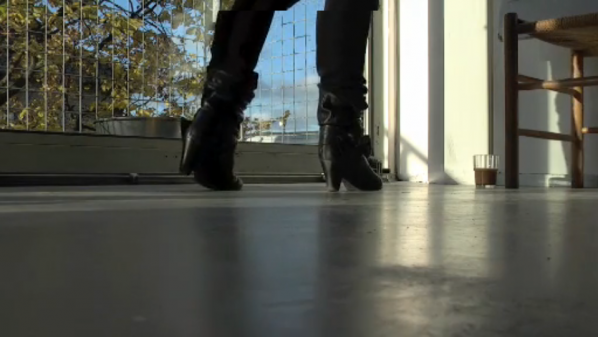
Visually – the low angle, the fragmented view of the body, the person here and not here. The focus on that person which permits and invites its opposite, in particular the framing of the sky and trees. The rhyme between the black-booted two legs of the woman and the black four legs of the dog. Their pas de deux. The music here subordinate, properly so. Ambient sounds, on the one hand, with odd vocal snatches on top. The strangeness doesn’t demand our attention because we are so focused on the visual.
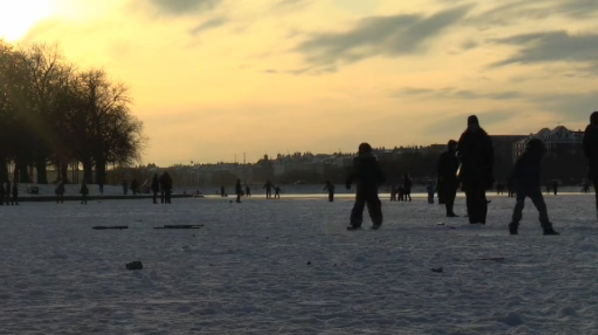
Until the last moments we simply hear a fitting (slightly arch) accompaniment to the skating – we surmise that it is intended to pastiche the kind of accompaniments used in professional skating. At the last moment we realize this is exactly what it is, as the commentator’s voice breaks through. There is also a ‘skate’, ‘friction’ or ‘traveling’ noise which exactly underpins the final move we see, just before the humour of the juxtaposed text, which continues after the movie has gone to black, strikes us: “Delightful, skating of the highest quality” delivered in classic plummy BBC tones…

A hugely rich piece: visually there are a number of layers – the far left street background where distant people and vehicles process. The game of Petanque: – the actual participants (although glimpsed corporeally only twice: fleetingly at the very end and as one set of typical Renseiw-y legs) and the balls themselves (and the metonymic link between these and the planets). Thirdly, the large shadows. (And the apparent size of each of these layers allows for very clear visual interaction). Sound – the ‘light’, jokey, playful music. The University Challenge soundtrack, here unusually clearly cut up – questions – astronomy; replies – painters. A risk for Sanderson, but one that works.

A little detective work indicates the level of detailed truffling about by Sanderson – part of the sound, the text, is grabbed from a YouTube video about French patisseries in London and cut up considerably – in particularly yielding the repeated incantation “cream cakes, tarts, macarons” the latter word in a considerably overheated French accent following the sloaney first three, to deeply comic effect. Comic maybe but, repeated, as in a dream; this mood is reinforced by a rather beautiful waltz time solo piano loop of the opening line of The Associates’ Party Fears Too. Here’s another piece where the visuals, here also dreamy and wistful, set in a looking glass Copenhagen (and the disjuncture between the London-location heavy narrative and the visuals is simply ignored, taken for granted, part of the deal), support quite a complex sound assemblage. Utterly haunting and quite difficult to say exactly why.
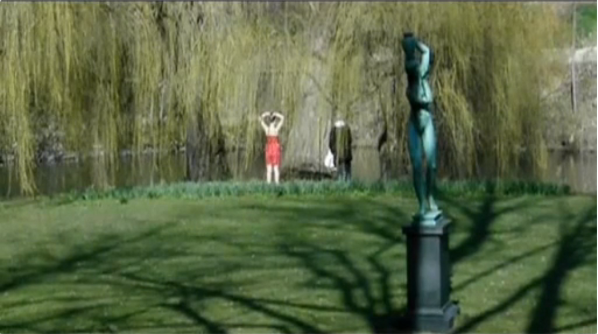
If one didn’t know it wasn’t one would surely assume this was carefully planned, and our knowledge it was not adds to our pleasure in it. Visually the rhyme between the woman and the near foreground statue is perfect – at one point she seems to mirror it exactly. Maybe she knows the area well and there is some unconscious mental echoing…we’ll never know. The other sharp visual pleasure is the smallness of the area of focussed distant activity, which again feels like a sort of directorial chutzpah, except, except…
Sanderson’s contribution is razor-sharp – the pseudo dialogue hits the mark precisely but doesn’t outstay it’s welcome – or at least there’s other stuff going on to detain us, not least the way the model’s preliminary warm-up shimmy becomes a perfect piece of minimal dance when set against the music.
Right of Passage/Speaking Voice
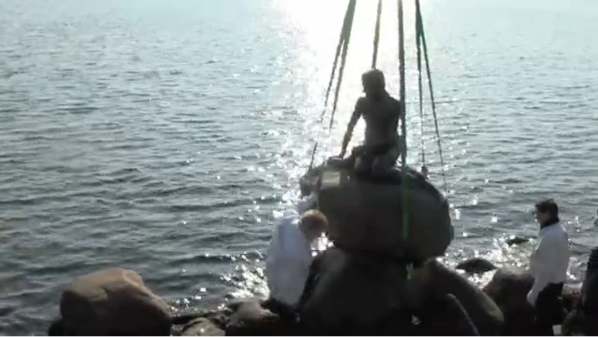
I wonder if when the content has it’s own ‘documentary’ interest, when the filming becomes a case of “Look at this remarkable thing not because of its intrinsic interest but because it happened”, the final result is somehow less engaging?
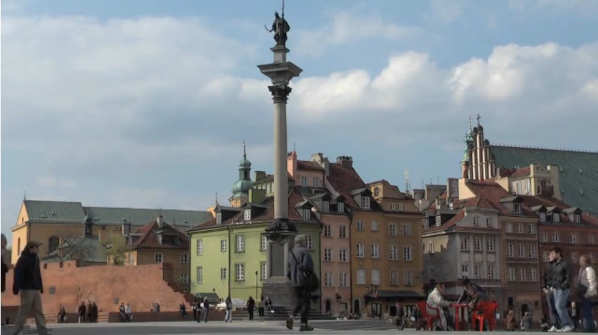
Again a dance related piece – the regular beat of the calling of the numbers one to eight sets up an aural grid against with which the implicit rhythms of the movement in, out and across frame interact in a sophisticated but subtle polyrhythm. Part two of the sound, with actual step instructions, ups the tension and the effect (especially the late entering ‘spinning’ man). Note how often in these pieces the sound fades out slightly later than the visuals, over Renseiw’s titles, thus emphasising its separate existence in an independent channel or dimension.
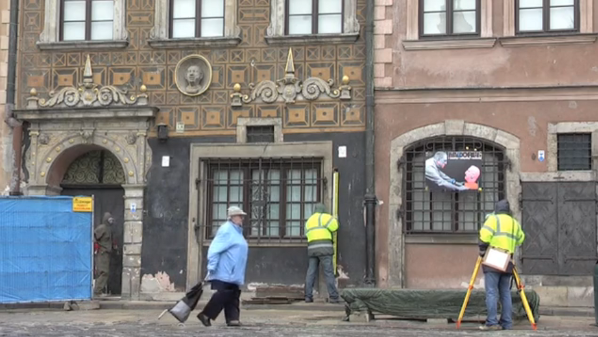
Beautiful found synthesis. Funny. Funny and truthful and touching.
The moving image is packed with incident at both different spatial levels and at different points in the piece. The Portsmouth Sinfonia version of Dance of the Sugar Plum Fairy underpins like a grid, as with Square Dance but in a more complex way, the visual rhythms of the film. Enough coincidence of rhythm to feel planned, enough ‘pull outwards’ to feel open… Again humour… Why does the Portsmouth Sinfonia track, in particular, work so well – atmosphere? the conjuring of a sort of raggedy clockwork ? – can we imagine in its place a more conventional rendering of the Tchaikovsky? Yes, but…
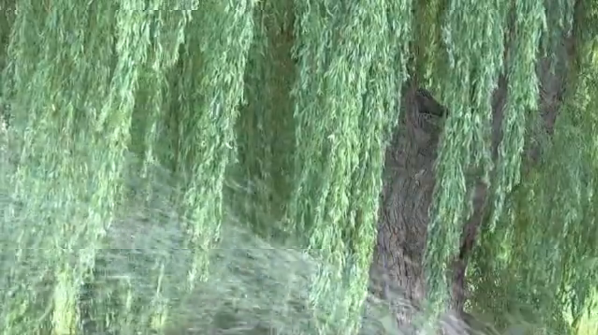
Prime example of Sanderson mind set – metonymy, suggestion – the trees are hair, the water appears exactly on cue (worked? Hmm – the audio appears to be cut to make the word ‘rinsing’ and the water jet coincide)
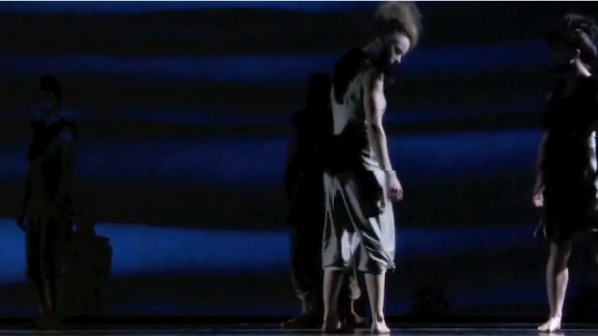
A one liner, but, given its place in the sequence, none the worse for it.
Brass band/Dancers.
*The pieces loosely divide into ones where either sound or vision predominate and some where they have equal roles.
* Not only does dance appear a couple of times explicitly as a subject but the spirit of dance pervades the project.
*The question of the success of individual pieces and of the sequence – a piece that seems less effective in isolation can well form an effective point of relaxation or reflection in the sequence as a whole…
*There are three pieces which, if one ‘re-removed’ the sound, would not strictly be Lumières – Check Out Art Fairs (speeded up), A Beauty Overblown (slowed down) & Sucked In (reversed). Sanderson performed the first two operations for reasons he felt the sound he used demanded. (To which one can only say: yes, this is right, a constraint is there for the sake of art, not art to be constrained.) Sucked In remains a mystery.
*The titles matter (note the re-titling of the composite works). They provide yet another dimension and illumination too.
*The prevailing tone is light, warm and playful. The darker side of life is largely absent, at least explicitly (though there are trails we could pick up to find it). Humour is everywhere. Only a philistine or fool would judge the work as a consequence to be less ambitious, significant or universal.
In September 2012, Italian tactical media artist Salvatore Iaconesi got the diagnosis. He had a glioma (glial cell brain cancer) of approximately 2×3 cm on the surface of his right hemisphere. Upon asking to see all the data relating to his condition, he found that all of the documents, MRI scans, and so on were in obscure not readily used formats. This meant that if one wanted to view the data, you needed specific or corporate software.
What he did then was remarkable. Iaconesi then hacked the formats of the documents and converted them into open-source ones that anyone could read could read with FLOSS (Free Libre Open Source) software. He then created the site, La Cura, where he presented his records as an “open source cure”. People around the world could access his records and then add their recommendations and findings about his condition, cancer, and so on. I begin this interview with Salvatore on September 15, 2012, and the La Cura website already has a rapidly expanding database of information at http://www.artisopensource.net/cure/.
Patrick Lichty: Salvatore, thank you for having this conversation. I remember that it was only a year and a half ago when we were shop-giving copies of the REFF tactical media book from your project, Fake Press in Rome. So, it was a shock when I learned of the glioma the day you launched the site. Could you talk a little about what is on the La Cura site?
Salvatore Iaconesi: Hi Patrick! Yes I do remember, too. And that is also a great explanation on what can be found at La Cura site: it is like one of our “fakes”, except that it is not a fake.
La Cura is about an alternative reality which I want to materialize on this planet, now. In this alternative reality, when someone has a serious disease, life does not end. One can be social, creative, and friendly. Work, art, design, fun and entertainment are possible for diseased people in this alternative reality, just as it is possible to reach out to find cures in any philosophy, time, strategy, culture or way one wishes. And consider that even technologies in this alternative reality are designed to enable and facilitate all this, actively promoting the freedom and autonomy of people.But, sadly, life is not like this alternative reality.
I wanted it to be my alternative reality, so I just did everything it took to bring that reality into the world. It’s like when you make an Augmented Reality application: you do a series of things to “materialize” some other things into ordinary reality. And then you have them, right there. So, La Cura is my personal Augmented Reality, in which, if I want to, I have all the tools and information I need to find a “cure” for my disease in one of multiple ways and strategies, which are medical, cultural, technological, emotional, artistic, political etc.
To achieve this, I have had to go through a series of obstacles:
The first is connected to language and information, as the first thing you notice at the hospital is that they are not really talking to you. Medical language is difficult and complex, and they rarely take action to make things more understandable to you. One of the testimonies I received in La Cura was that of a lady who has found herself in front of a doctor shouting at her: “You really think that I will explain to you why your thyroid has to be removed? It has to be removed! That’s it!”
This is really not “open”, in any sense. And, in more than one way, it is an explicit evidence of the approach which medicine has towards patients: they cease to be “humans” and become sets of parameters on a medical record subject to certain protocols and standards. When you are in the hospital, it’s often as if you’re not there. The only thing that matters is your data: blood pressure, heartbeat, magnetic resonance etc.
And the way in which information reflects this if handled in this context. Data formats may be, technically “open”, meaning that they are described somewhere but they’re really an explicit reflection that when you’re sick you “step out of society”. That data is usable and accessible only to “professionals” and to those people who have tools and skills to handle them.

I, as someone with considerable expertise with computers, have had some difficulties in opening them. Imagine someone else with less skill! Most people would not have been able to benefit from all the types of “cure” which I am currently accessing from a variety of sources and modalities. They would not have access to a “cure” that doesn’t end at a list of medicines and dosages, but spreads out into society.
To do that, I have had to hack into the information and convert it into really “open” data, using multiple formats that could be used by many kinds of people to do multiple things. In the format that the data was originally in, even if it was “technically open”, that data would have been seen only by “professional doctors” and, instead of being a “human being”, I would only have been a “patient”, or worse yet, a “case”.
PL: What do you want people to do with the information?
SI: Whatever they wish! Obviously! What is important in this case is that we must agree on what the “information” is… What I am publishing is my autonomous will to disclose my state of disease, including all data and medical information. I have my own purposes for this, but it does not necessarily mean that this purpose must/should be shared by others.
My personal purpose for this disclosure is to autonomously shape my own human condition. I have a disease but I am not a “diseased person”. I am a person. And, as such, I wish to create my personal “cure”, which has to do with my life, not with my disease. For what people know, I might even consider cancer as not being a “disease” at all! I might, for example, consider it an expression of the “cure”, such as if I adhered to Hamer’s theories. Which I don’t, or, at least, not in the sense that “I believe” in Hamer’s theories; I take them into consideration, but I don’t believe in them, just as I don’t believe in chemotherapy, in Aloe Vera, in Caisse Formula, in surgery, in shamanism, in healers, oncology or in any of these things. I take all of them into serious consideration, just as I seriously consider certain philosophies that say that we are made of energy, energy creates matter, and cancer is “matter” and so on. Therefore, cancer must be created by energy in some form. And so it could possibly be that I created cancer myself in a way or another.

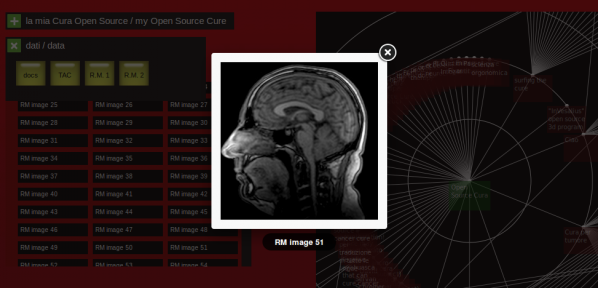
So in this sense, I think it is very important to be able to easily look at the images of my cancer and to say “hello” to them. It is important to turn them upside down, to edit them with GIMP, to make mosaics out of them, to speak to them, asking “hello?” What are you doing in there? Did I do something to cause you? Can I change something to make you/myself feel better?”
Both scientific and traditional evidence shows that art, positive emotions, laughter, reduced stress, and a good social life have great practical benefits to the human body, I want to seriously consider that part of my cure could be formed by receiving an image of my brain with a smiley face drawn across it over the tumor, or a picture of a friend of mine, or a video of a projection mapping done with Processing in which the images of my cancer cover a whole facade of a building.
And since I don’t want to believe, but I want to take all of these things into serious consideration, I cannot focus only on the “medical” approach (and the related information, and its formats). I need to access all of my information in multiple ways, and I wish that everyone could do the same (as, from my point of view, it’s part of my Cure). And, even if “technically open”, the format in which my medical records have been disclosed is not enough, because it is “open for professionals” and so the only thing I could do with it would be “show it to professionals”, missing out on all the other wonderful parts of the “cure” which are available in the world.
This for me, is an interesting starting point to think about what things such as “OpenData” could mean. This is far beyond the idea that some government can some data according to ways in which some “professionals” could grab it and, do something like make a visualization or an App out of them. Who knows? In this sense, instead, we would not be talking about “technology”, we would be talking about “humanity”.
In the end, this is exactly what I’d like people to do with the “information”. I want the world to take the fact that I decided to disclose the fact that I have a disease and that I want to actively search for a cure for from all of these perspectives. In the meantime, I want to reconsider what it means to be “diseased” in current times and what new conceptions of the word “cure”, “medicine” associated with my condition could mean.

PL: What has happened since you launched the La Cura site?
SI: Lots of things. People are contributing and participating in multiple ways. There are testimonies, art, poetry, suggestions, videos, performances. Many doctors have called in to propose their methodologies and technologies. I have had very interesting and profound discussions with people who are prepared to deal with very complex things every day of their lives. I’ve communicated with doctors who are perfectly open to the possibility of such a paradigm change for the word “cure”. Artists, designers, activists, are giving me wonderful parts of “cure”. Many “patients”, “ex-patients”, “relatives” and “friends” of “diseased people” are sharing their experiences, are opening discussions, are sharing the information I found on possible medical cures. And so many people want to talk to someone in new and different ways, becoming again, simply, humans. Journalists from all kinds of media have started to ask for interviews, texts and videos. We stopped that after a while, as we don’t wish to turn this into merely a “spectacle”. We only keep on working on this with journalists which we know we can trust and which we know will not transform what we say to produce their news.
PL: For your information, I had an MRI in 2009 here in the States, due to my doctors’ concerns of something similar (nothing was found), but when I asked for the data, I got a CD full of JPEG images. Were you surprised when you found out your records were in particular formats?
SI: They were not really in a proprietary format. Let’s call them “exotic formats for professionals”. And yes, I would have expected something which I could have shared easily (such as your JPEG images, and maybe some meta-data in some easy to use format such as XML, or even a spreadsheet). But this was a sort of paradox: an “open” format which is really hard to open and to use for something else other than putting the CD in an envelope and (snail)mailing to the next doctor.
PL: What do you think the line is between privacy and data oppression? Would that be when the patient is denied access to their rights to access the information and distribute it as they wish?
SI: We should all know this by now. Privacy is not a problem unless the “system” is made by lousy people. We have tools to protect ourselves and to promote ourselves, and these tools are dangerous only when who runs them is a lousy person. Privacy protection arises through education (understanding what is privacy and when/where/how/why would I want to protect it) and through the acquisition of decent ethics from the people and organizations which run the entire infrastructure through which all our digital data goes through. And obviously, and most importantly, our ethics is created by helping each other out in a P2P way, teaching each other what we know, what we discover and how we decided to handle it when we found out.
There is no single line between privacy and data oppression. Not one which everyone would agree on. We have the tools for each one of us to tune this line to our own wishes, according to what we want to do, what are our desires, what are our objectives etc. We “just” need more places (physical, digital, virtual, institutional, occasional…) in which to discuss and share our points of view, as every time this happens, many things are learned on all sides.
PL: Do you consider your site a form of radical tactical media intervention?
SI: I can now say “I have a radical tactical media intervention in my head”. Cancer is the new Black. The Cancer is the Message. And we could go on. I don’t know. I guess I could call it that. I also guess I could call it a performance. I guess I could call it life. I guess I could call it hacking or whatever. I will just call it La Cura.
PL: What has been the most inspirational information, art, or otherwise that has resulted from the launching of the La Cura site?
SI: The most enlightening thing that happened is the experience of talking about the same exact thing using dozens of different languages. I have spoken with neurosurgeons, shamans, nutritionists, pranotherapists, doctors, activists, macrobiotics, hippies, cyberpunks, punks, friends, relatives. Most of the time, I received incredibly good advice. When you look at that advice from different points of view, you start to understand that you are really talking about the same thing, but in different languages.
For example, two of the most important things which you deal with when you talk about cancer are the idea of creating alkaline environments in your body (because cancer cells cannot stand them) and the facts that anti-oxidants are a great tool in support of any type of therapy (because of the molecular reactions which are at the base of cancer).
Well, speaking of just these two, it occurred to me that multiple theories deal exactly with these two concepts. I have had an esoteric master describe my cancer as an invisible living being, and he suggested to drive it away using sulfur and Rosa Rubiginosa oil, in ways which turn them into two incredible anti-oxidants and creators of alkaline environments as well as powerful stimulants of the immune system. I have also spoken with nutritionists and macrobiotics communities and learned about their instructions on choosing food, cooking and eating, many of which are directed exactly to that: anti-oxidants and creating alkaline environments, but through food.
And when an oncologist explained us his therapy, that’s exactly what it was about: powerful anti-oxidants and alkaline environments. And on, and on and on. Aloe Vera, Caisse formula, fungus theory, chemiotherapy, Di Bella method, potassium ascorbate, ketogenic diets, etc: all highlight cancer cells in some way; create an environment around them which is as alkaline as possible; anti-oxidate them; activate the immune system as powerfully as possible so that the highlighted weakened, cancer cells can be more easily “convinced” at mutating back to a decent form or to commit suicide with the help of the immune system. Realizing this is an enlightening experience: it spans across thousands of years and also helps you make some choices (things stand out when they speak about different things!).
Everything else that is going on in La Cura is wonderful, but having realized this fact is just incredible and fascinating. You start imagining about all the other things we discuss about in our daily lives using multiple languages (energy, politics, emotions…) and start to wonder what would happen if you turned on this shared, P2P modality in those cases as well.
PL: How do you hope that others will benefit from the conversation that you are starting through La Cura?
SI: I don’t “hope” anything. I did this because I felt I needed to. When one talks about “revolution” dialogues start arriving at the point when one says, “Let’s burn everything down!” “Let’s destroy everything!” and so on.
We know we can’t do it. We can’t “destroy everything”. It’s not possible. What we can do is to create a reality as if everything already happened – as if the “revolution” already happened, as if the world had been burned down already, and rebuilt, just the way you like it. We can live life like this. It is a bit more than “seeing things”. But you do Augmented Reality, Patrick. You know what I mean. It’s a bit more than “writing”, it’s about creating worlds.
PL: As of this interview, what is the prognosis of your condition?
SI: Depends on what perspective you look at it from. From the medical point of view I have a low-grade glioma at intensity which is still undecided, between 1 and 2 (we will have to wait an histologic exam to know for sure). From the human point of view: I am fine! I have no apparent symptoms. I just need to be careful because if I find myself in stressful situations I could react by having an epileptic shock. So it is not advised that I drive or things like that. It’s the perfect excuse! 🙂
PL: Don’t you think it’s funny that the abbreviation for your name is “si”?
SI: Sì! Obviously 🙂
“Tweets in Space beams Twitter discussions from participants worldwide towards GJ667Cc – an exoplanet 22 light years away that might support extraterrestrial life. By engaging the millions of voices in the Twitterverse and dispatching them into the larger Universe, Tweets in Space activates a potent conversation about communication and life that traverses beyond our borders or understanding.”
Marc Garrett: Could you explain to our readers what ‘Tweets In Space’ is?
Scott Kildall and Nathaniel Stern: Tweets in Space is an art project — a networked performance event — which beams your Twitter messages to a nearby exoplanet that might support human-like, biological life. Anyone with an Internet connection can Tweet with the hashtag #tweetsinspace during the performance time, and their messages will be included in our shotgun blast to the stars. The performance is on September 21st, 20:30 – 21:00 Mountain Time (3:30 AM BST / London time).
MG: What was the motivation behind your current collaboration?
SK and NS: We found inspiration from various sources. First, in NASA’s Kepler mission, whose purpose is to discover planets in the “habitable” or “Goldilocks” zone. The project has found over 2000 exoplanets thus far, all of which are “not too hot, not too cold, but just right” for life as we know it. Scientists now estimate that there are at least 500 million planets like this in the Milky Way alone. Our conclusion: extraterrestrial life is almost certainly out there.
![The newly discovered planet is depicted in this artist's conception, showing the host star as part of a triple-star system. Image credit: Carnegie Institution / UCSC. [1]](http://www.furtherfield.org/wp-content/uploads/2012/09/planet_gj667cc.jpg)
“The latest discovery is at least 4.5 times bigger in size than Earth. Reportedly, the planet exists 22 lightyears away from Earth and it orbits its star every 28 days. The planet is known to lie, in what is being referred to as the star’s habitable zone. A habitable zone is a place where the existing conditions are just perfect for life sustenance. Astronomers, according to this report also suspect that the GJ667Cc may have been made out of earth-like rock, instead of gas.” [ibid]
Another source of great inspiration is how we use social media here on Earth. This is our second, large-scale, Internet-initiated collaboration. In 2009, we amplified the power structures and personalities on Wikipedia, and questioned how knowledge is formed on the world’s most-often used encyclopedia – and thus the web and world at large. Now, we are turning to the zeitgeist of information and ideas, feelings and facts, news and tidbits, on Twitter. The project focuses on and magnifies the supposed shallowness of 140-character messages, alongside the potential depth of all of them – what we say in online conversation, as a people.
We are directing our gaze, or rather tweets, via a high-powered radio telescope, towards GJ667Cc – one of the top candidates for alien life. It is part of a triple-star system, has a mass that is about 4 times that of Earth, and orbits a dwarf star at close range. GJ667Cc most certainly has liquid water, an essential component for the kind of life found on our own planet.
MG: Right from its early years when Jagadish Chandra Bose [2], pioneered the investigation of radio and microwave optics – science, technology and art have had strong crossovers. And it might be worth mentioning here that Bose was not only well versed as a physicist, biologist, botanist and archaeologist, he was also an early writer of science fiction. [3] Which, brings us back to ‘Tweets In Space’, wherein lies themes relating to science fiction, radio broadcasting (commercial, independent and pirate), wireless technology of the everyday via our computers, and ‘of course’ the Internet.
![J.C. Bose at the Royal Institution, London, 1897.[3]](http://www.furtherfield.org/wp-content/uploads/2012/09/JC-Bose-at-the-Royal-Institution-London-with-his-radio-equipment-The-date-is-1897.png)
But, what I want to pin down here is, where do you feel you fit in historically and artistically with other past and contemporary artists, whose creative art works also involved explorations through electromagnetic waves?
Scot Kildall: The work of JC Bose is incredible and what strikes me is that he eschewed the single-inventor capitalist lifestyle in favor of his own experiments. Isn’t this the narrative that artists (often) take and linked back in many ways to the open-source/sharing movement, rather than the litigious patent-based corporation? And it mirrors in many ways the reception of electromagnetic radiation as well. You can’t really “own” the airwaves. Anyone who is listening can pick up the signal. This comes back, as you point out, to the internet. Twitter is now, one of the vehicles, and, ironically entirely owned by a benevolent* corporation.
Nathaniel Stern: (Agreeing with Scott) and we can’t forget of course Nam June Paik, who played with naturally occurring and non-signal based electromagnetic fields to interfere with analogical signals (as well as the actual hardware) of tube televisions, and more. And of course, there have been other transmission artists, explored in depth by free103point9, among others. I think, like them and others, we are messing with the media, amplifying (figuratively and metaphorically) and intervening, pushing the boundaries of DIY and cultural ethico-aesthetic questions…
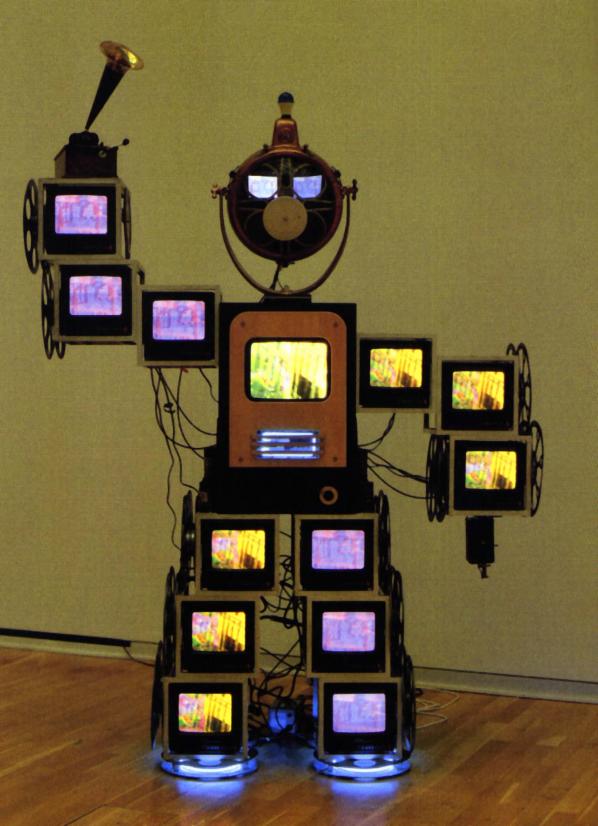
MG: What is especially interesting is that all the tweets submitted by the public are unfiltered. How important is it to you that people’s own messages are not censored when going into space?
SK and NS: Absolutely. Tweets in Space is by no means the first project to transmit cosmic messages with METI technologies (Messaging to Extraterrestrial Intelligence). Our fellow earthlings have sent songs by the Beatles, photos of ourselves shopping at supermarkets, images of national flags, and even a gold record inscribed with human forms – controversially, where the man has genitals and the woman doesn’t. These slices of hand-picked content exhibit what a select few believe to be important, but ignore, or willfully exclude, our varied and collective modes of thinking and being.
Tweets in Space is “one small step” with alien communications, in that it is open to anyone with an Internet connection. It thus represents millions of voices rather than a self-selected few. More than that, our project is a dialog. There have been, very recently, a small number of projects that similarly “democratize the universe” but none are like ours: uncurated, unmediated thoughts and responses from a cooperative public. We can speak, rebut, and conclude, and nothing is left out. Our transmission will contain the good, the bad, and the provocative, the proclamations, the responses, and the commentary, together, a “giant leap” for all of humankind – as well as our soon-to-be friends.
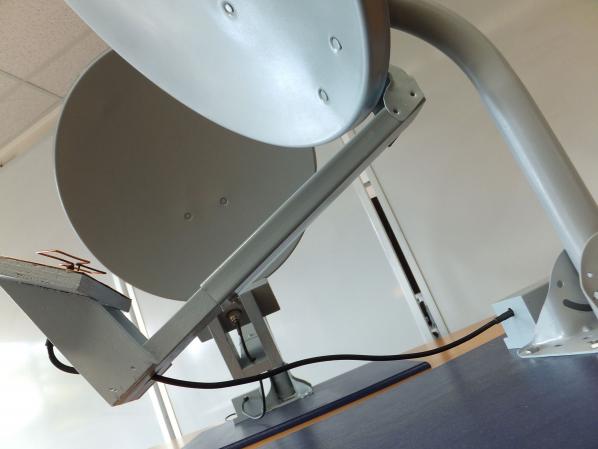
Furthermore, by limiting the event to a small window of only 30 minutes, we are encouraging all our participants to speak then respond, conversing with one another in real-time, through networked space. We are not just sending lone tweets, but beaming a part of the entire dialogical Twitterverse, as it creates and amplifies meaning. Tweets in Space is more than a “public performance” – it “performs a public.”
MG: Now, you will be transmitting real-time tweets toward the exoplanet GJ667Cc, which is 22 light-years away. How long will it all take to get there?
SK and NS: Well, first off, we’re collecting all of the tweets in real time, but only sending them out later in October. The main reason for this is that we have to wait for the planets to align – literally. We want line of sight with GJ667Cc from where our dish is. The added bonus of time, however, is that this will allow us to really flesh out how we send the messages in a bundle. We want to include a kind of Rosetta Stone, where we will not only send binary ASCII codes of text in our signal, but also analog images of the text itself. We additionally intend to choose the most frequently used nouns in all the tweets from our database, then give a kind of “key” for each. If “dog” is common, for example, we can transmit: 1. an analog image of a dog, like a composite signal from a VCR; 2. a text image of the word “dog” in the same format; and 3. the binary ASCII code for the word dog.
In terms of time/distance, when speaking in light years, these are the same thing. A light year is the distance light can travel in one year of Earth time (about 9.4605284 × 10 to the 15 meters). Since radio travels at the speed of light, a big dish on GJ667Cc will pick up the signal in 22 years. We should start listening for a response in 44 – though it may take them a while to get back to us…
MG: Will the code used for the project be open source, and if so, when and where can people expect to use it?
SK and NS: Yes it is! The most useful part of our code is the #collector, which saves real-time tweets to a database, that can then be used for live projections or web sites, or accessed and sorted later via all kinds of info. The problem is that it’s not really user friendly or out of the box – folks need a suped up server (VPN), and to plug into a few other open source wares. The main portion of the backend we used is actually already available at 140dev.com, and then we plugged that into Drupal, among other things. For now, we’re telling interested parties to contact our coder, Chris Butzen, if they want to use our implementation. And we hope to do public distribution on tweetsinspace.org if we are able to package it in a more usable format in the next 6 months.
MG: Are there any messages collected so far, grabbing your attention?
We’ve had thousands of tweets so far – even while just testing the ware in preparation for the performance. We’re anticipating a lot of participation! The tweets we’ve seen have ranged from variations on “hello [other] world” and “don’t eat us,” to political activism and negative commentary, to a whole surreal narrative of about 30 tweets per day over the last 3 months.
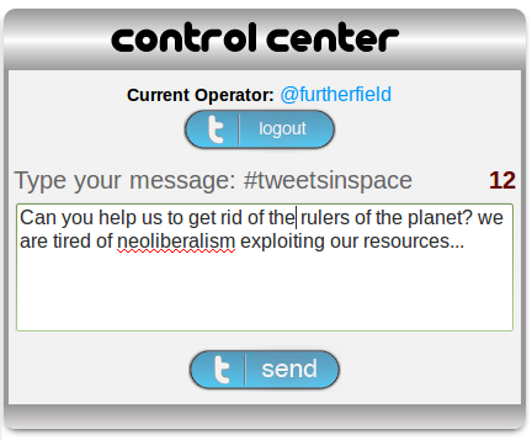
go to tweet aliens to add your own words…
Some of our favorite tweets have been those that question how to make our own world better. These speak to both the hope of space age-ike technology, as well as the hope in collective dialog – both of which our project tries to amplify. Such tweeters ask about the alien planet’s renewable energy sources, tax structures, education, art, and more.
We imagine the 30-minute performance will see a much more potent discussion about such things, and hope your readers will participate. The final transmission will be archived permanently on our site once we’ve prepared it for launch.
As part of the International Symposium on Electronic Art in New Mexico (ISEA2012). We will collect your tweets and transmit them into deep space via a high-powered radio messaging system. Our soon-to-be alien friends might receive unmediated thoughts and responses about politics, philosophy, pop culture, dinner, dancing cats and everything in between. By engaging the millions of voices in the Twitterverse and dispatching them into the larger Universe, Tweets in Space activates a potent conversation about communication and life that traverses beyond our borders or understanding. http://tweetsinspace.org/
AND THEY WILL BE SENT INTO DEEP SPACE!!!
Watch the stream LIVE here – http://tweetaliens.org/tweets/tweets.php
Contact: info@furtherfield.org
Part of Furtherfield Open Spots programme.
Seeking to investigate new modes of audience experience, {crowdsourced} Noir / Love Beyond Recognition is a process-based artwork encompassing a sculptural installation and an interactive stream across the World Wide Web. Both parts of the project are based on the notion of “crowdsourcing” and the use of public domain archives for works of art. The physical installation will be exhibited at Konstepidemin Gallery, Gothenburg (SE), with live interactive streams at Furtherfield Gallery, London.
Visitors will be able to search for keywords from a database of short clips selected from the online public domain Film Noir Archive and hear them play through sourced short clips dialogues containing those words, while a live video stream connecting the two venues in London and Gothenburg will show the sculptural installation intercut by those dialogues and related video footage. A compelling cinematic experience is created. Visitors at Konstepidemin Gallery will be also able to see the live stream and hear the dialogues selected by the London-based audiences.
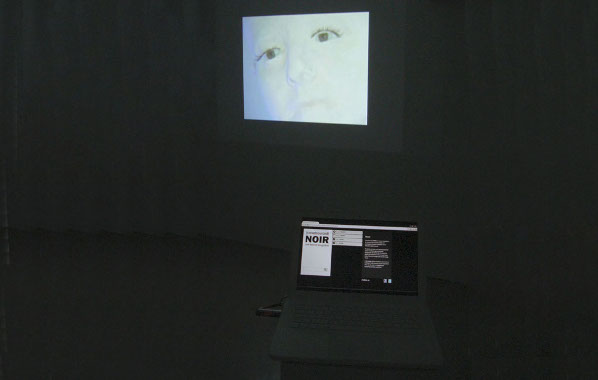
{crowdsourced} Noir / Love Beyond Recognition is a process-based artwork encompassing a sculptural installation and an interactive stream across the World Wide Web. The origin of both parts of the project is based upon the notion of ‘crowdsourcing’. The principle being that more heads are better than one. By canvassing a large crowd of people for ideas, skills, or participation, the quality of content and idea generation will be superior. In this instance, crowdsourcing will be applied through the use of clipsourcing tools which have been developed to aid in project-related tasks that can only be achieved through human interaction/intervention. This way, the crowd will help the artist achieve these tasks whilst adding a democratic element to the final outcome of the project.
During Spring and Summer 2012, an interested public was invited to both participate and contribute to the project’s creative process in two distinct ways: in Sweden as models, whereby a cast was taken of a chosen body part (the body parts were later assembled to full figure sculptures) and in the UK by taking part in a workshop at Furtherfield Gallery to help source short clips from the online public domain Film Noir Archive through our online tool.
The digital part of Posch’s project was developed in collaboration with UK artist and new media developer Mike Blackman.
Josefina Posch
Josefina Posch is a Swedish artist that has worked and exhibited extensively abroad, including at the 52nd Venice Biennale, Fondazione Pistoletto’s Cittadellarte, Sculpturespace NY and a residency at Duolun Museum of Modern Art Shanghai. During her 3 month residency at Art Space, Portsmouth, in Autumn 2010, she began her collaboration with artist and new media developer Mike Blackman in the development of her digital concepts.
The project is supported by Gothenburg City Arts Council, Arts Council England/British Council and IASPIS – The Swedish Arts Grants Committee’s International Programme for Visual Artists.
www.crowdsourcednoir.org
www.josefinaposch.com
Furtherfield Gallery
McKenzie Pavilion, Finsbury Park
London N4 2NQ
T: +44 (0)20 8802 2827
E: info@furtherfield.org
Furtherfield Gallery is supported by Haringey Council and Arts Council England.
ALL WELCOME
A project by Sarah Waterson and dogs (and their human companions) of Finsbury Park.
+ Dog walks: every Wed-Sat, between Wed 17 October and Fri 30 November 2012
Laika’s Dérive invites Finsbury Park’s dogs and their human companions to record a walk in their local park and surrounding area. This walk offers a chance for interspecies communication and a sharing of knowledge that results in a collaborative mapping of each dog/human’s walk.
Each dog is kitted-out with a system that automatically photographs the dog’s favourite vistas and objects on location. The photographs are selected via the sniff and interest time of the dog, and are returned to the human as a series of the dog’s favourite snaps, and displayed on Laika’s Dérive website.
Laika’s Dérive is part of the WWW: World Wild Web exhibition at Furtherfield Gallery.
To take your dog for a dérive, please contact Furtherfield Gallery at info@furtherfield.org or phone 0208 802 2827.
Walks can be booked by one person/dog Wednesday to Saturday between 1-5pm, from Wednesday 17 October to Friday 30 November 2012, so book early to avoid disappointment!
The kit collection point for the walk is Furtherfield Gallery, McKenzie Pavilion, in Finsbury Park.
Event Coordinator: Laura Bottin
Event Producer: Alessandra Scapin
Laika’s Dérive/Dog’s DeTour (2011) is a new media locative data-mapping work by Sarah Waterson about interspecies communication, collaboration and knowledge. Community participants and their dogs use an electronic mapping system (custom iphone app-GPS, accelerometer, interval timed and geo tagged photography) within their local area. The data collected is incorporated into the online mapping and visualisation system (website) together with the participant narrative and profiles. This work engages cross species sensing to explore a psychogeography of place.
A sketch for this project was produced during the Kiss Club incubator residency at the Performance Space, Carriageworks, Sydney. Feb 2010.(A minisite for the project prototype can be found here).
The android mobile phone application and harness system was developed during a residency at Blast Theory, UK, June- July 2011.
More info at http://laikasderive.sarahwaterson.net
Sarah Waterson
Sarah has practised as a new media artist for the past twenty years. Her works include electronic installations, collaborations with performers, video and audio work, generative and software based artworks, VR environments and data visualisations and ecologies. Interdisciplinary and collaborative practice informs the development and ultimately the design of these artworks. Her current interests include data mapping, data ecologies and cross species collaboration.
Sarah’s recent interactive installations have included: Laika’s Dérive (Performance Space, Carriageworks 2011), 33ºSouth (collaboration with Juan Francisco Salazar, Casula Powerhouse 2009), a custom made data mapping system that juxtaposes the cities of Sydney (Australia) and Santiago (Chile) trope, a e-literature project developed for the Second Life environment (SWF 08, ongoing), subscapePROOF (collaboration with Kate Richards, Australian Centre for the Moving Image, Melbourne), and subscapeBALTIC (ISEA2004, Helsinki, Finland). Sarah is a senior lecturer in interactive media at the School of Humanities and Communication Arts, University of Western Sydney, Australia.
Furtherfield Gallery is supported by Haringey Council and Arts Council England
FURTHERFIELD GALLERY OPENING HOURS
WWW: World Wild Web exhibition
18 October – 01 December 2012
Open Thu-Fri 1-5pm, Sat 11-5pm
Opening Event: Saturday 13 October 2012, 1-4pmFree admission to exhibition and events
Location
Furtherfield Gallery
McKenzie Pavilion, Finsbury Park
London N4 2NQ
T: +44 (0)20 8802 2827
E: info@furtherfield.org
So ArtForum have launched a special September issue investigating the, lets say broader, relationship between new media, technology and visual art.*
Of worthy mention is the essay Digital Divide by the art world’s antagonistic critic of choice Claire Bishop, a writer whom a little under 8 years ago, deservedly poured critical scorn over the happy-go-lucky, merry-go-round creative malaise that was Bourriaud’s Relational Aesthetics and all of the proponents involved. Since then Bishop’s critical eye has focused on the acute political antagonistic relationships, within the dominant paradigms of participatory art and the concomitant authenticity of the social.
In Digital Divide, Bishop asks a different question, and its delivered even more bluntly than usual. Why has the mainstream art world, for the most part, refrained from directly responding to the ‘endlessly disposable, rapidly mutable ephemera of the virtual age and its impact on our consumption of relationships, images and communication.‘ This is not to say the practices of mainstream artists do not rely on digital media (in almost all cases, it now cannot function without it), but why hasn’t the shifting sands of digital culture been made explicit? In Bishop’s words;
“[H]ow many really confront the question of what it means to think, see, and filter affect through the digital? How many thematize this, or reflect deeply on how we experience, and are altered by, the digitization of our existence?”
Clearly, there are exceptions and she mentions three examples by art stars Frances Stark, Thomas Hirschhorn and Ryan Trecartin which flirt here and there with digital thematisation. Conversely artists who once specialised in digital art, Cory Arcangel, Miltos Manetas – to name two very famous examples – have previously broken out into the mainstream.
But for Bishop, there is of course, “an entire sphere of “new media” art, but this is a specialised field of its own: It rarely overlaps with the mainstream art world (commercial galleries, the Turner Prize, national pavilions at Venice)” – (one could add art fairs here). But nonetheless “these exceptions just point up the rule“. Bishop’s focus is on the mainstream and, moreover, she contends that “the digital is, on a deep level, the shaping condition—even the structuring paradox—that determines artistic decisions to work with certain formats and media. Its subterranean presence is comparable to the rise of television as the backdrop to art of the 1960s.” True enough, this structuring paradox is an implicit problem with the mainstream art world, but thats not the problem tout court.
From the responses I’ve read both in the article comments and in subsequent blog posts, a particular issue has been marked with Bishop’s statement that “new media” art is a specialised field. Whilst it doesn’t qualify as a dismissal, one could certainly suggest that Bishop is partly guilty of the same disavowal she throws at the mainstream art world when she relegates this sphere as an ‘exception’. In a blog-post response, Kyle Chayka makes a similar point; “Bishop understands that digital technology forms a seedbed for art as well as life, but fails to uncover the artists who are already critiquing that context.” I’m not a Lacanian, but maybe this is a symptom of something.
If mainstream art is ‘the rule’, (and I’m insinuating ‘the rule’ as anti-metaphor here) perhaps ‘the rule’ isn’t worth paying attention to, considering that the new media art exception is too much of a ‘specialisation’. In as much as one can only agree with Bishop’s call for mainstream art’s negotiation with digital thematisation, has she not missed the same aesthetic questions already posed and re-composed in this exceptional sphere? Why should the qualifier of the mainstream be such a factor of importance here? Why not cut off the need to reconcile digital thematisation with a set of historical, and commercially ideological principles which may not take kindly to the more ambitious and darker questions that the social and political arena of global digitalisation have thrown up. This is not to say that Bishop isn’t seeking those questions nor does she wish to reconcile those principles, but the specialised sphere of ‘new media art’ may quench the questions she herself raises.
Case in point: all Bishop would have needed to reference is something like the Dark Drives exhibition for the transmediale festival earlier this year; the tag line “uneasy energies in Technological Times” sums up her main descriptions of a digital epoch quite nicely. For instance, the artist group Art 404’s 5 Million Dollars 1 Terabyte, renders explicit one subset of the absurd, copyright, exploitative logic of proprietary software, by saving one terabyte’s worth of unlicensed software onto a single hard drive. Next to it was JK Keller’s idiosyncratic piece Realigning My Thoughts on Jasper Johns, which showed off a glitchy, abstract bastardisation of a Simpson’s episode Mom and Pop Art – regurgitating haggard mainstream perspectives. Crucially the success of the show was down to the implicitness of the exhibition’s technical triumphs – where technical jargon is often touted as a reason for the mainstream’s averted gaze. Whilst the viewer didn’t need to know the technics, but a richer understanding emerged should they have wanted to know.
There isn’t any need to clog up this article with a bottomless plethora of pieces from other equally important exhibtions and shows (I’m sure many others are better qualified in doing so); my point here, is that Bishop cannot relegate new media art as an exception to the rule, when the digitalisation of media is becoming the rule, which she herself explicitly admits. Choosing to focus on the failure of the mainstream in this arena gives the essay a healthy line of questioning, but in relegating an entire sphere which has – for some time – repeatedly dealt with these questions and more, it raises what is effectively a pointless query. To be fair to Bishop, she isn’t trying to force a fecund translation of new media with mainstream values, but looking for methods where digitalisation can instigate the change of those values.
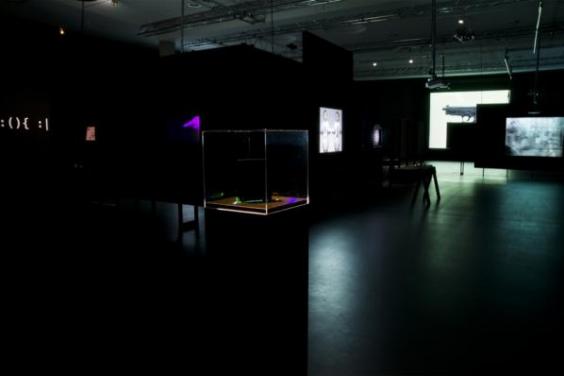
Granted, Dark Drives is one major show in a major Berlin new media festival – the top of a very extensive collection of disparate voices and influences – but it inadvertently highlights a salient thought. What if Bishop’s call to bridge the ‘Digital Divide’ was actually met by a new generation of artists thrust into the mainstream, where digital themes were translated into its own methods of commercial production? We’ve gotten over the myth that ‘virtual’ commodities are unmarketable, so it’s not as if I’m being negative for the sake of it. Where would this leave festivals like transmediale, or not-for-profit collectives like Furtherfield – how would they respond? It’s an uneasy question, one which for speculative purposes cannot be answered quickly at present, if at all.
In the throws of conjecture, there is perhaps another division at play here. Towards the end of her essay, Bishop makes a reference to the difference between the non-existent embrace of the digital medium today, and the rapid embrace of photography, film and video in the 60s and 70s.
“These formats, however, were image-based, and their relevance and challenge to visual art were self-evident. The digital, by contrast, is code, inherently alien to human perception. It is, at base, a linguistic model. Convert any .jpg file to .txt and you will find its ingredients: a garbled recipe of numbers and letters, meaningless to the average viewer. Is there a sense of fear underlying visual art’s disavowal of new media?”
This is a division which is even more striking; more aesthetically and philosophically significant in comparison to marketable rules and unmarketable exceptions. I think Bishop is really on to something when she chastises the hybrid solutions of old media nostalgia, evidently favoured by the market and contrasts it to the alien nature of code, but it’s not without problems.
Some may consider there to be nothing inherently alien about digital media; many artists, who also work as programmers and write, design and engineer artworks together with code without any recourse to an alien nature (however I vehemently disagree with the notion that code be solely reduced to human production, but it must be pointed out) Likewise, any 90s utopian reading of the ‘digital revolution’ is mired from the start, once you take into consideration, closed proprietary devices and services which falsify other meaningful alternatives (one only needs to trace the important work of the Telekommunisten art collective to realise how advanced these questions are, in what is supposed to be a specialised field).
If there is a fear underlying visual art’s disavowal of digitalisation, it’s not just a critical bemusement of code, but of the material which composes computational media; wires, LCD screens, motherboards, caches, firmware, sorting algorithms. Bishop’s call for mainstream contemporary art to be aware of its own conditions and circumstance is admirable, but unless art can actually get its hands dirty with the material processes of new media and more importantly the underlying computational conditions concerning the digital (because thats what it is), the project of explaining these circumstances will be quagmired from the start. It’s not enough to explain ‘our changing experience’ with computation, but to explain the experience of computation in itself.
But for now, lets keep the divide going, not least because antagonisms are fun (Bishop should know), but because the contemporary digital arts are not hindered with the burden of seeking the mainstream’s attention. They can get away with a lot more as a result. Digital or Computational art needs to be cheaper and nastier, as the artist’s tools of use are getting increasingly dirty with critical engagement and proflierfation of code (one cannot avoid mentioning Julian Oliver et al’s important project of critical engineering in this sense). Only then, can Bishop speak of a moment, where the “treasured assumptions” of mainstream art are brought to bear through the criticality of the digital.
——————
* Just to make it clear, I am aware that key terms in this article such as ‘new media’ ‘digitisation’, etc carry little to no relevance anymore, (I prefer computational to be more relevant myself), and they’re only used as a replying dialogue with Claire Bishop’s essay which relies on them throughout.
Charlie Gere is a Media Theory and History professor in the Lancaster Institute for Contemporary Arts, Lancaster University. Co-curator of FutureEverybody, the 2012 FutureEverything exhibition in Manchester. In 2007 he co-curated Feedback, a major exhibition on art responsive to instructions, input, or its environment, in Gijon, Northern Spain. He has given talks at many major arts institutions, including the Centre de Cultura Contemporània de Barcelona, the Architectural League in New York, Tate Britain, and Tate Modern. Gere’s new book, Community without Community in Digital Culture (Palgrave MacMillan, 2012), is out now.
Previous titles include: Digital Culture (Reaktion Books, 2002), Art, Time and Technology (Berg, 2006), Non-relational Aesthetics, with Michael Corris (Artwords, 2009). Gere was co-editor of White Heat Cold Logic (MIT Press, 2009), and Art Practice in a Digital Culture (Ashgate, 2010), as well as writing many papers on questions of technology, media and art. He is also co-editing with Robin Boast an anthology entitled Allegories of the Information Age (forthcoming).
Marc Garrett: Digital Culture was originally published in 2002, which happens to be the version I’ve had all these years. In 2008 it was republished, revised and expanded. Now the book has an extra chapter ‘Digital Culture in the Twenty-first Century’. Of course, we already know that digital technology and society has changed dramatically since 2002. So, what themes and historical contexts did you choose, as necessary to include in this new and last chapter?
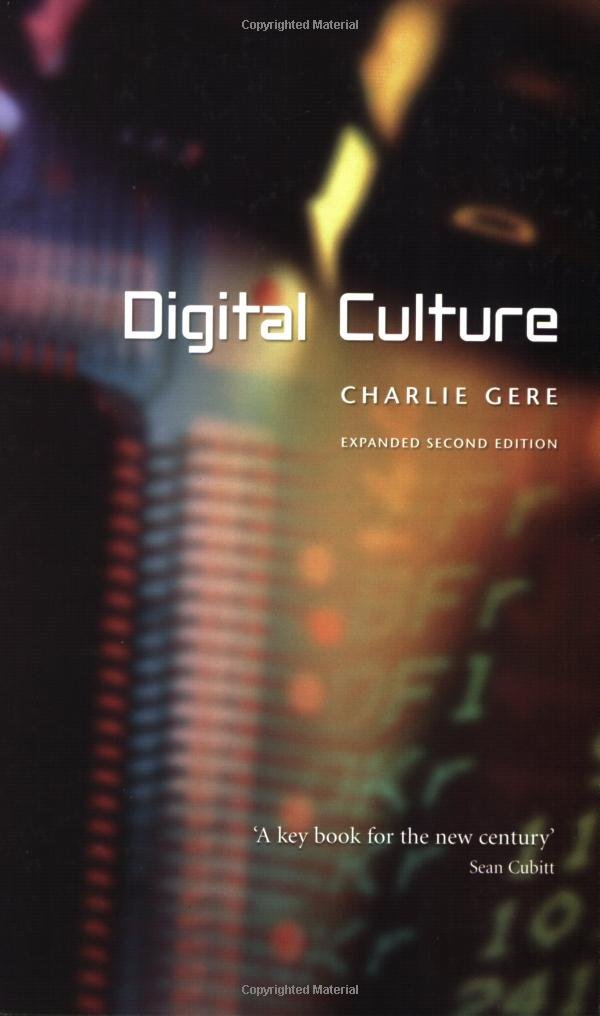
Charlie Gere: What happened after the first edition’s publication was of course, the rise of so-called Web 2:0, which was simply the greater exploitation of the reciprocal possibilities of the Web. I tried to reflect on how this reciprocity was visible beyond the Web itself and was becoming part of a more general culture of engagement and exchange, not that I share some of the more utopian visions of this phenomenon. Indeed, in my new book Community without Community in Digital Culture, I try to counter the, for me, more naive visions of community in relation to digital technology. I advocate a more ‘non-relational’ approach that does not deny the transformative effects of new media in terms of community but thinks of it more in terms of hospitality to the other.
MG: Many of the artists we have worked with are using new media to explore and critique the utopian assumptions you discuss: YOHA, IOCOSE, Liz Sterry, M.I.G (Men In Grey, Julian Oliver and Danja Vasiliev), Heath Bunting, Face to facebook (Paolo Cirio and Alessandro Ludovico), Annie Abrahams and more. Each of them work in a deeply relational way to intervene in the mythologies projected about digital technology; and, with a knowingly crtical eye of the technical limitations and the social controls at work when using networked technology. At different levels, all are producing work that ‘consciously’ incoporate relational contexts, in some way or another, this includes ideas and approaches with autonomy as part of their art, but not necessarily advocating technology as a singular, saving grace.
How do you view the role of this practice in the context of the wider corporate and state impact on the way technical cultures are evolving. How do you see the notion of hospitality working between the arts and these other more mainstream cultures?
CG: I greatly admire and like the work of the artists you mention and others doing similar things. For me they exemplify the complexity of the idea of hospitality. In general the Web is about exchange, whether that of money for goods, social links and relational exchanges in social networks, or the exchange of speech and dialogue in on-line fora. The work of these artists refuses this demand for exchange and profit within a restricted economy. Thus they are in a sense parasitical on the Web. The word ‘parasite’ comes from ‘para sitos’, meaning ‘beside the grain’, and refers to those animals that take advantage of grain stores to feed. They are the creatures to who must be offered hospitality, as a gift, without expectation of return, which means that while they are bound up with the technological systems that comprise the Web, they are not part of the restricted economy of exchange, profit, and return that is at the heart of capitalism, and to which everything else ends up being subordinated and subsumed. Thus they find an enclave away from total subsumption not outside of the market, but at its technical core.
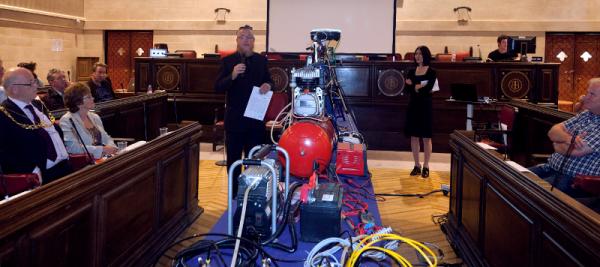

MG: Many are aware that technology and digital culture have changed the world we live in and appreciate their immediate effects on our everyday behaviours and situations. But there is a bigger story to tell, and history can offer us insightful glimpses, important clues and ways into this story about our relationship with technology and digital culture. One of the arguments outlined in your book ‘Digital Culture’ is that digital culture is neither radical, new nor technologically driven. With this in mind, which past developments do we need to acknowledge and be reminded of and why?
CG: For me the emergence of digital technology is part of a much longer story of abstraction, codification, quantification and mathematisation that can be traced back to numerous points in the history of the West, from Ancient Greece, to early Modernity to the rise of industrial capitalism. Here one might think of Heidegger’s use of ‘cybernetics’, a word we normally associate with post-war computing culture, to describe the technology and calculative enframing of modern society which he traces back to the Ancient Greeks and especially to Plato. I am not a particular advocate of digital technology, and while I appreciate its uses, I also think we must try to be aware of how it determines the way in which we think, and in which we conceive of the world. Above all we should not regard it as merely a conduit to an uncomplicated world simply out there, but rather the means by which a particular world comes to be for us. That said, this is very hard, given that in my view, and to adapt a well-known phrase from Derrida, il n’y a pas de hors-media, there’s no Archimedean point outside of our medial condition, from which we can understand it as from a god’s eye view. ‘Media determine our situation’ as Friedrich Kittler put it.
MG: In Digital Culture, you write about the composer John Cage and how he “has had the most profound influence on our digital culture”, and how his influence has opened up various different avenues of creative engagement. And, many of his ideas on interactivity and multi-media not only “have repercussions in the art world”, but also a strong influence on how computers are used as a medium. Which art movements in particular did he influence and what kind of legacy did he leave for others in relation to computers?
CG: Actually Cage’s influence on those using computers in the arts is probably less to do with what he himself did with such technology and more to do with his use of aleatory methods in many his different projects across many artforms. Also there is something about Cage’s own refusal of a normative Western subjectivity that is also consonant with aspects of our hyper-technologised existence with its emphasis on decentering the individual. Both the refusal of such subjectivity and the aleatory work together to produce a new model of the artist as conduit of contingent social forces rather than protean demi-urge or genius.
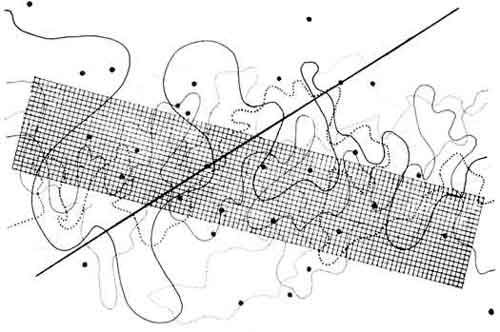
MG: Your new book ‘Community without Community in Digital Culture’, has come out at the same time as Geert Lovink’s ‘Networks Without A Cause: A critique of Social Media’. Lovink asks “How do we overcome this paradoxical era of hyped-up individualization that results precisely in the algorithmic outsourcing of the self? How do we determine significance outside of the celebrity paradigm and instead use intelligence to identify what’s at stake?” [1]
Where are your thoughts in regard to Lovink’s question, and does it relate to what you propose in terms of “hospitality to the other?”
CG: I haven’t read Geert’s book, yet at least… But I am highly sympathetic to what I take to be his position. My view is that the Web is part of a broader set of developments that apparently concern relationally, but actually emphasize the sovereign individual and autonomous subject of modernity, as well as promoting spectacular and image-bound forms of presentation and relation. The problem is that one alternative to this individualization is a kind of fascistic identification with the mass, in the form of fusion that negates the individual. A solution maybe to engage with the idea of the other in terms of difference, as both relational and separate, and yet also that which we depend on for our identity in a process of differentiation; thus the idea of hospitality as a reception of the other in difference.
MG: Community without Community in Digital Culture, is a curious title. It proposes contradictory meanings and these contradictions are clearly explained in the introduction. Although, the last sentence says “In this such technologies are part of the history of the death of God, the loss of an overarching metaphysical framework which would bind us together in some form of relation or communion. This can be understood in terms of contingency, which has the same root as contact.”
Could you unpack this last sentence for us, I’m especially interested in what contingency means to you?
CG: I owe my understanding of contingency to the work of philosopher Quentin Meillassoux, whose book After Finitude is causing a stir. Meillassoux is one of a small number of young philosophers sometimes grouped together under the name ‘speculative realism’, mostly because of their shared hostility to what they call ‘Kantian correlationism’, the idea that there can be no subject-independent knowledge of objects. Meillassoux follows the work of David Hume, who questioned the whole notion of causation; how one can demonstrate that, all things being equal, one thing will also cause another. For Hume causation is a question of inductive reasoning, in that we can posit causation on the grounds of previous experience. Meillassoux pushes the implications of Hume’s critique of causation to a point beyond Hume’s own solution, to propose the only necessity is that of contingency, and that everything could be otherwise, or what Meillassoux calls ‘hyperchaos’.
![Community without Community in Digital Culture [Hardcover]. Dr Charlie Gere. Palgrave Macmillan (2012) http://www.barnesandnoble.com/w/community-without-community-in-digital-culture-charlie-gere/1110025572 See on Amazon.](http://www.furtherfield.org/wp-content/uploads/2012/09/179510500.jpg)
I use his ideas to think through the implications of the ‘digital’. According to the Oxford English Dictionary ‘digital’ has a number of meanings, including ‘[O]f, pertaining to, using or being a digit’, meaning one of the ‘ten Arabic numerals from 0 to 9, especially when part of a number’, and also ‘designating a computer which operates on date in the form of digits or similar discrete data… Designating or pertaining to a recording in which the original signal is represented by the spacing between pulses rather than by a wave, to make it less susceptible to degradation’ (the word for data in the form of a wave being ‘analog’).
As well as referring to discrete data the dictionary also defines ‘digital’ as ‘[O]f or pertaining to a finger or fingers’ and [R]esembling a finger or the hollow impression made by one’, thus by extension the hand, grasping, touching and so on. Much of the book concerns deconstructing the ‘haptocentric’ implications of contact, and communication, especially in relation to the claims made for social networks, and to engage with what I understand as the relation between ‘contact’ and contingency’. ‘Contingency’ is derived from the Latin con + tangere, to touch. ‘Contingency’ enables us think through the implications of the term digital, by acknowledging both its relation to the hand and touch and also to the openness and blindness to the future that is a concomitant part of our digital culture after the death of God.
MG: What other subjects can we expect to read about in the publication?
CG: Touch in Aristotle and medieval theology, cave painting, mail art, Darwin and Dawkins, Luther Blissett, On Kawara, Frank Stella, Bartleby the Scrivener, Christianity – among other things… oh, and a lot of Derrida.
MG: If there is a message you’d like to send to the world, as it carries on regardless with its “permanent exposure of life, of all lives, to ‘all-out’ control […] thanks to computer technology” [2] (Virilio 2000), and it was printed on a banner, or on a billboard in the streets, what would it be?
I am reading Blanchot at the moment, so perhaps something like ‘the disaster has already happened’ (it’s suitably enigmatic to annoy people).
<———————————- The End (for now) ——————————>
Featured image: London Hackspace http://wiki.london.hackspace.org.uk/view/London_Hackspace
…the machine is always social before it is technical.
(Gilles Deleuze)
Though the term ‘lab’ conjures the image of a fairly sanitised environment optimised for scientific experiments and populated by people in white coats, media labs – centres for creative experimentation – are quite different. At their most basic, they are spaces – mostly physical but sometimes also virtual – for sharing technological resources like computers, software and even perhaps highly expensive 3D printers; offering training; and supporting the types of collaborative research that do not easily reside elsewhere. In the early-to-mid-1990s, partly propelled by the exciting possibilities of the internet and associated web browser technologies, groups began to coalesce, bent on developing access to the inherent potential of collective creativity. With the exuberant new dot.com businesses fuelling a ‘creative economy’, the Californian ‘cybercafé’ (surf the internet and slurp the coffee) was emulated in urban centres around the UK and in some cases artists were heavily involved. They saw the internet’s myriad ways of changing the way we make, think about and share art – not to mention its capacity for social empowerment – and wanted to harness these qualities quickly and effectively. With many practitioners coming from the spaces, practices and communities forged by the independent film and video movement, the phenomenon of the UK media lab was born. However, despite the importance of these spaces as the hybrid homes of the then emergent and now embedded creative activities that characterise today’s rich field of digital and media practices, their history and contribution to current lab environments has been little discussed outside a niche arena.
Early Media Labs
Two of the earliest UK media labs were Artec and Backspace (aka Bakspc), both based in London. Artec, which was established in 1990, was initially funded by Islington Council and ESF (the European Social Fund), but soon won additional support from Arts Council England. Conceived by Frank Boyd and Derek Richards, its focus from the outset was to deploy technology for social empowerment and, early on, it provided valuable professional training to the long-term unemployed. In this sense, it did not operate from within an arts context proper, but combined art and technology in the name of social integration. Creative projects were led by Graham Harwood, whose own artistic practice and his collective Mongrel were formed through associations at Artec.
Harwood and Mongrel’s practice is known widely for scrutinising social, political and cultural divisions through a framework of technology. A notable piece from this period was Rehearsal of Memory (1995), which took the collective experiences of staff and patients at Ashworth high security mental hospital, near Liverpool, and presented them as a unified and anonymous computer-based group portrait. Now available as a CD-ROM, the work strongly undermines the assumptions we make about mental health, blurring the line between those branded ‘normal’ or not. It is an excellent example of the way artists and media labs habitually combine creative activities with technology to give people a renewed agency. Around 1995, Peter Ride was brought on board to curate a stream of activity called Channel, which lead to further powerful artworks including Ubiquity (1997) by David Bickerstaff and Susan Collins’ In Conversation (1997).
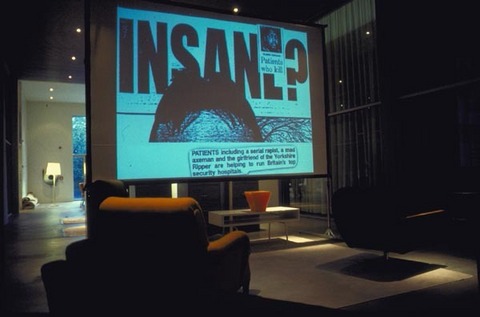
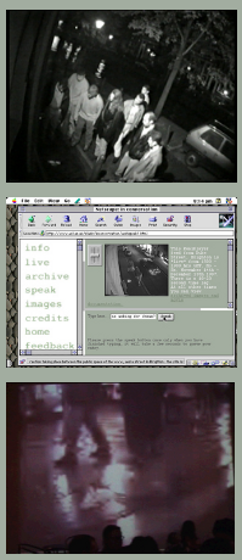
Without regular public funding, Backspace started out as an independent self-organised cybercafé. Initiated by James Stevens as a ‘soft space’ adjunct to his commercial web design business, Obsolete, it had a physical studio and lounge on Clink Street. People could drop in and use the web access and computer terminals in exchange for a nominal membership fee and commitment to maintain the space. What is notable about the Backspace model is how it attempted to foster a co-operatively managed resource. It exemplified a preoccupation amongst internet culture devotees with autonomy and new forms of governance, and struggled with all the contradictions of such ideals alongside the fact of its commercial parent entity. Obsolete shared its (at that time) capacious bandwidth. This gave people web hosting and streaming capabilities that would otherwise have been prohibitively expensive; allowed for the hosting of many artistic projects produced within the space itself; and facilitated many early streaming experiments with link-ups between other European media labs including as E-lab in Riga, Lativa and Ljudmila in Llubljana, Slovenia. Early attendees and co-facilitators of Backspace now list some central figures of the Digital and New Media art fields including: Matt Fuller, Simon Pope, Armin Medosch, Heath Bunting, Ruth Catlow, Pete Gomes, Manu Luksch and Thomson and Craighead – even Turner Prize winner Mark Lecky was a regular for a while.
Globally distributed discussion networks provided a discursive layer for these media labs, with early mailing lists such as Nettime, Rhizome and Syndicate forging international connections around technology, art and politics. Likewise, Mute (at first a newspaper, then a glossy magazine, now a web journal) provided regular critical commentary on burgeoning digital culture.
Foundationally different, Artec and Backspace were united by a belief in the importance of access to tools and training within a social context. In slightly differing ways, they put creative experimentation and social concerns at the centre of the agenda via technology. This was to become an important organisational strategy for this sector. Though both spaces have since closed, Stevens continues to build social and technological infrastructure as Deckspace, at Borough Hall, Greenwich. Without a physical space, Frank Boyd has evolved his media lab system into an industry-orientated programme called Crossover, which assembles creative professionals to workshop cross-platform ‘experiences’ from a variety of creative arenas including film TV and the computer games industry. Crossover is one of many peripatetic media lab models that privilege collaborative creative processes, although it is more goal-orientated than most as participants often pitch to a panel of industry commissioners.
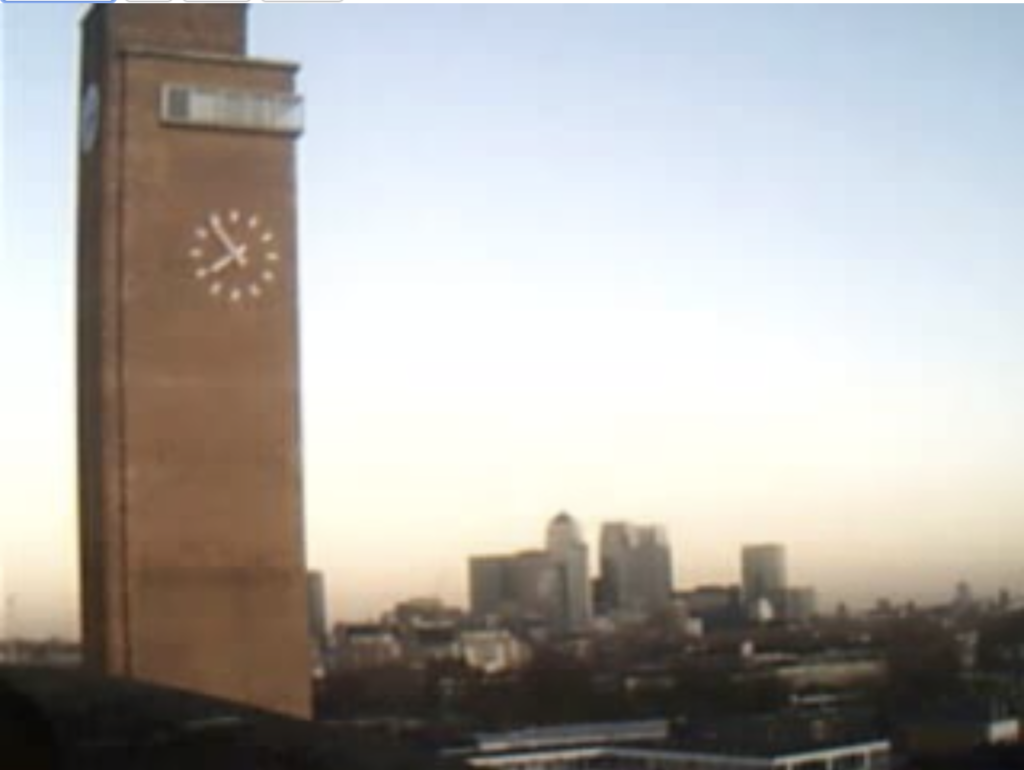
Process over Product
With less of an eye on industry and an abiding interest in the creative process itself, PVA MediaLab was formed in 1997 by artists Simon Poulter and Julie Penfold. In its first incarnation, it took up residence at Dartington College of the Arts, with funding from South West Arts. While there, artists were offered a well-equipped space in which to experiment with technology and develop ideas. In fact it is this developmental freedom that forms another core operational component of the media lab. Rather than asking artists to arrive with pre-formulated projects, or expecting them to see a piece through from start to finish, media labs have consistently placed value on self-determined exploration. PVA helps artists to manufacture methodologies rather than final artworks, fully designed products or content packages. They have also led the way in assisting other media labs to produce a similar system, through their Labculture programme. Highly itinerant, the Labculture model adjusts itself to host organisations, like Vivid, in Birmingham, so they can learn how to set and achieve goals while building the sorts of lasting partnerships that will sustain future activity.
This shared or Open Source way of working integral to media lab culture is also exemplified by GYOML (Grow Your Own Media Lab). A collaborative project between media labs Folly, Access Space and the Polytechnic, GYOML was designed to help generate more media lab initiatives. It has included: ‘GYOML in a Kitchen’, a sound recording and editing workshop by Steve Symons (Lancaster); ‘GYOML in a Van’, which staged an introductory workshop in media-lab culture for community group leaders (Lancaster); a game-centred ‘GYOML for teenagers’ (Rochdale); and ‘GYOML at the Canteen’, catering to film-makers and professional artists with an interest in open source (Barrow-in-Furness). Legacies of this project include the Digital Artists Handbook, an impressive guide to Open Source tools and techniques and ‘Grow Your Own Media Lab (the graphic novel)’, a set of inspiring case studies. Folly continue to work very much in this manner, forming essential infrastructural relationships as and where needed and guiding others through the adoption of free software.
Another example of this attention to operation and openess comes from GIST Lab, in Sheffield, which energises community-based projects through a space that hosts meetings and workshops. Even without a dedicated tech suite, their knowledge-exchange is a short-cut to all manner of original cross-over work, and they have supported yet another project that literally and metaphorically recreates aspects of the media lab model. 3D printing (or rapid prototyping) is increasingly popular in producing anything from car parts to jewellery, by layering materials like plastic into finished three-dimensional objects. RepRap, however, is able to print the spare parts it needs to be built while it is still itself under construction. Just like media labs, this self-replicating 3D Printer is all about sharing access to a successful system.
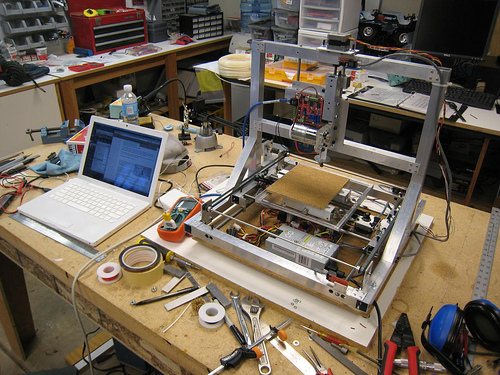
If media labs are not driven by material production, neither are they all about technology. Arising from the work of the art group, Redundant Technology Initiative, Access Space in Sheffield established its media lab through the use of free and recycled technology and learning. Given our cultural predisposition for wanting the latest, fastest equipment and our reprehensible dumping of perfectly serviceable technology, abundant hardware is sourced from all manner of locations. The latest Free and Open Source software is installed on the hardware where expensive proprietary software once lay and the media lab space, complete with this equipment, is opened to the public five days a week. The one proviso placed on this access – continuing the recycling theme – is that once a media lab participant has learnt how to do something, they should pass this knowledge on. As evidence of the success of this system Access Space boasts impressive outreach capacity: more than a thousand regular visitors, of which only about thirty-five percent are university educated, and over half are unemployed, and they habitually work with people experiencing disabilities, learning disorders, poor health, homelessness or other measures of exclusion.

One of the projects that clearly shows what they do is Zero Dollar Laptop, a collaboration with the Furtherfield organisation and community. Through a series of workshops, homeless participants are given the ability to use and maintain a free laptop complete with free software in self-led creative projects. It is this model of learning through self-directed creativity that arises again and again in media labs because it provides demonstrable results in helping people acquire and retain the skills they need. Without ‘bells and whistles’ new technology, Access Space emphasise the importance of ideas over technology and demystify all manner of computer-based skills. SPACE Studio’s MediaLab is also an excellent example of a lab working at a range of levels to offer beneficial specialised training. They teach software packages at a professional level to film makers, artists and a range of media industry workers, as well as offering film-making and media training for NEET (Not in Education, Employment or Training) teenagers in the local area. There are also a number of DIY Technology workshops including those regularly hosted by MzTEK who have expanded their operation as a result of their connections with SPACE. MzTEK are all about encouraging women to build technical skills and enter the new media sector. Growing from a small group to wide and supportive network they answer underdeveloped areas of knowledge. In addition to this, SPACE’s PERMACULTURES residency series has, to date, hosted eight residencies supporting over eleven artists, helping them explore technology and go on to show in a range of spaces.


The media lab also plugs an important gap in the art gallery and museum network. Digital and New Media arts are distinctive for collapsing boundaries between the place of production and exhibition. As a result, few existing art spaces have been in a position to fully represent it. Media labs, as well as community websites like Furtherfield and Rhizome, international festivals including ISEA and Transmediale and curatorial resources like CRUMB (the Curatorial Resource for Upstart Media Bliss) have imaginatively responded to this situation. Media labs in particular have been very successful in fostering relationships between artists and galleries. They have helped to translate not only the ideas expressed by this type of art – which can require much additional contextualisation – but also their physical installation in spaces not designed for this new breed of work.
For example, Folly recently collaborated on an experiment in the exhibition and acquisition of New Media art with the Harris Museum and Art Gallery. Entitled Current, the project saw expert panels first select works to be exhibited at the gallery (in Spring 2011) and then choose one to enter the permanent collection. Not only did this give the gallery the chance to add a timely contemporary work to their collection but it formed a useful public case study showing other institutions how they might engage with emergent art forms in various new media.
Media labs greatly contribute to the collaborative working methods the creative sector now thrives upon. Cross or interdisciplinary partnerships involve people from very different industries or working cultures combining and even reinventing the way they work in order to unearth all manner of new practices and products. Many universities, having born witness to a boom in research which straddles different academic subjects and industry sectors (due in some part to government funding imperatives around ‘knowledge transfer’), have established their own media labs. A relatively early example of this was i-DAT (the Institute of Digital Art and Technology) at the School of Computing, Communication and Electronics at the University of Plymouth. A large project with many interrelated strands is their op-sys (operating systems) network of research into architectural, biological, social and economic data and how it can be made publicly available and useful. The University of Nottingham has the Mixed Reality Lab, which was established in 1999 with £1.2 million in funding from the JREI (Joint Research and Equipment Initiative) programme as well as ongoing grants and investments. Run by Steve Benford, it hosts around eighteen PhD students providing resources for researchers and post-graduates working in areas that intersect its host department, the School of Computer Science, and associated training facility, the Horizon Doctoral Training Centre. It maintains a number of diverse projects, some of which have won prestigious awards and award nominations including Can You See Me Now, a collaboration with Blast Theory. The CoDE (Cultures of the Digital Economy) Institute at Anglia Ruskin University in Cambridge has a digital performance laboratory that focuses on sound-based work. Culture Lab is Newcastle University’s bespoke unit of media-lab-style flexibility, where artists work experimentally and across disciplines, and Sandbox, a similar resource, is located at the University of Central Lancashire. Another approach for universities is to partner with existing media labs. Pervasive Media Studio, a Bristol-located media lab, was set up by Watershed, a cross-artform production organisation, HP Labs and the South West Regional Development Agency. They have a partnership which runs for three years with the University of West England’s Digital Cultures Research Centre and work in a number of different ways including offering Graduate and New Talent residencies for those just starting out in their careers. The Pervasive Media Studio has helped to establish events like Igfest, the Interesting Games festival, held annually in Bristol, as well as development platforms such as Theatre Sandbox, which helps theatre makers introduce technology to their practice. They also support artists, including: AntiVJ, Duncan Speakman and Luke Jerram.
As we have seen, some labs have been nomadic or temporary while others have evolved into new incarnations. A media lab might be part of an array of dependencies with institutional responsibilities i.e. Folly, Isis Arts, Lighthouse, Pavilion, Pervasive Media Lab, PVA, Vivid and more, all of which regularly produce an abundance of quality experimentation in Digital art and culture. While new incarnations of the media lab may respond to three distinct but related phenomena: the rapidly evolving technology sector; the transient networks of geeks and digital experimenters; the need for sustainable models for innovation in industry. MadLab, in Manchester, provides space and facilitates meetings and workshops for ‘geeks, artists, designers, illustrators, hackers, tinkerers, innovators and idle dreamers’. Their ‘drop in’ events, commonly known as ‘Hacklabs’ (for example *Hack to the Future* during the Edinburgh International Science Festival), give people instant hands-on experience with all sorts of code and kit. Although hacking is still seen as a specialist and somewhat murky activity, the term is being increasingly decoupled from its conventional criminal associations and made accessible to mainstream arts territory. In January 2011 the Royal Opera House facilitated a ‘Culture Hack Day’, bringing cultural organisations such as the Crafts Council and UK Film Council together with software developers and creative technologists to usefully open up and share data. Other HackLabs may have less of an arts focus, but do have impressive resources built using the open membership model (pioneered by the likes of Backspace). The London Hackspace boasts a laser cutter, digital oscilloscope and kiln, all donated or collectively purchased.
Scattered through many of our city centres are office/studio-based working spaces which cater to the creative industries by offering flexible working environments and abundant networking and training opportunities. The Hub, in London’s Islington and Kings Cross areas (with up to thirty further Hubs in cities across the globe), gives fee-paying members access to facilities and a way of working orientated towards connecting people from across the network in cost-effective innovation. These spaces are indicative of the emphasis placed on the creative economy as the big hope for economic renewal driven by small entrepreneurs grabbing and shaping the opportunities in technology, entertainment and design.
Inspirational before Institutional
Looking briefly at some of the ways media labs have operated since the 1990s shows them as uniquely fertile spaces for all manner of shared expertise and creative innovation. They have made a fundamental contribution to Open Source culture. Working as openly and collaboratively as possible, participants have found ways of sharing process and product, while an interdisciplinary nature has revealed a plethora of creative possibilities. Fulfilling a difficult remit by offering a home for many of the emergent artistic practices currently transforming artistic activity, they have led us away from ‘art for art’s sake’ and towards work which has demonstrable meaning and lasting social and economic benefit. Large institutions might be extremely well-versed in mounting financially advantageous blockbuster exhibitions, but the beauty of media labs derives from their ability to develop and disseminate the socially-transformative systems that have already and will continue to shape the future of the arts.
A big thank you to everyone who contributed to this research despite their incredibly busy schedules and a special shout to: Simon Poulter for pulling over his car, Clive Gillman for kindly kicking things off, Sarah Cook for an innovative approach to note sharing and Peter Ride for not taking a lunch break.
You can find Charlotte’s original article on Collaboration and Freedom – The World of Free and Open Source Art http://p2pfoundation.net/World_of_Free_and_Open_Source_Art
As part of the Furtherfield collection commissioned by Arts Council England for Thinking Digital. 2011
Featured image: Still from performance of Structure M-11
You would measure time the measureless and the immeasurable.
You would adjust your conduct and even direct the course of your spirit according to hours and seasons. Of time you would make a stream upon whose bank you would sit and watch its flowing. – Kahlil Gibran
Algorithms only really come alive in the temporal time-frames that they move through. Their existence depends on being able to move freely along time’s arrow, unfolding and expanding out in to the universe, or reversing themselves backwards into a finite point. Every form and structure that the universe creates is the result of a single step along that pathway and we’re only ever observing it at a single moment. Those geological steps can take millions of years to unfold and we can only ever really look back and see the steps that happened before we chose to observe them. Computational algorithms break down that slow dripping of nature’s possibilities and allow us to become time-travellers, stepping into any point that we choose to.
Paul Prudence is a performer and installation artist who works with computational, algorithmic and generative environments, developing ways to reflect his interest in patterns, nature and the mid-way point between scientific research and artistic pursuit. The outputs from this research are near cinematic, audio-visual events. Prudence’s creative work, and his blog, Dataisnature (kept since October 2004), explores a number of creative potentials as well as documentating the creative and scientific research work of others that he finds of interest. As the blog’s bio states:
“Dataisnature’s interest in process is far and wide reaching – it may also include posts on visual music, parametric architecture, computational archaeology, psychogeography and cartography, experimental musical notational, utopian constructs, visionary divination systems and counter cultural systems.”
Paul himself feels Dataisnature, and his other blogs, are by their very nature ordering systems, trying to create some kind of structure on information. “Yes, it’s true [that they are ordering systems], but the ordering is sometimes a little bit oblique. I am not interested in ordering systems such as categories or tags, for example, as each blog post has the potential to generate many of its own categories.”
The blog and perhaps all blogs, shouldn’t be an end in themselves then? Should they be a starting point for a deeper investigation? “Well, I’m more interested in substrate and sedimentary structuring – specific fields existing in layers and sometimes overlapping and interacting rhizomatically.”
Blogging for Paul and many bloggers who don’t operate within the ‘monetization of blogging’ sphere that has grown up in the past few years could almost be considered a documentation and ordering process for the creative process. The process and interaction between the theory and the blog as textual artefact becomes quite complex. As does the theory and creative output of the blogger. Paul would argue that this isn’t always something that can be even as straightforward as theory to practice though.
“The posts at Dataisnature are not confined to theoretical relationships between art and science projects, but also take into account metaphorical ones. I never wanted the posts to be so pinned down that they disable the opportunity to make entirely new connections at any level.”
So the chance to see what happens inbetween strict disciplines and an openness to the potentials that may arise out of relaxing the barriers? Shouldn’t that be the way that everything else that is ‘not of academia’ operates anyway? And for that matter, outside of the possibilities of arts/science/research funding.
“I applied the term ‘recreational research’ to Dataisnature in its early days,” Paul explains. “This is still to some degree important – the notion that research doesn’t have to be tied down by the prospect of peer review or academic formatting. This kind of interdisciplinary research can be highly addictive – its the new sport of the internet age. It can generate blogs that become chaotic repositories of interconnectedness – linearity becomes infected with cut-up and collage. In my own mind I have an idea of what Dataisnature is trying to say but I get people approaching me with completely different, and amusing theories of what they believe the blog is about.”
In digital arts (or let us call it digital creativity, to avoid the complexity of art versus design versus technology) the breakdown between the equipment used and the research of the creator has become almost at times indistinguishable. A painter is often only one step away from being a chemist, a sculptor closer to an engineer than a painter. The tools used define and form some of the output. Digital creativity only makes this more implicit. So when using technologies and researching, the scientist and the creative often walk hand-in-hand towards the finished artefact. As Prudence says: “Collaboration among artists and scientists exists through time as well as space.”
“A great part of an artist’s task is to be a researcher. It’s important to remember that any idea you have has already been tackled in the past with a different (want to avoid the term lesser) technology.”
The blogging process offers a chance to gather information and allow some of the artist’s own influences and present interests to manifest themselves into a rough-hewn structure. “For me, blogging facilitates a medium for an archaeology of aesthetics, technology and conceptuality. All this fragmented information is gathered then reconstituted, and fed back into the artistic practice. Of course my personal work blog is more about supplying supplementary material to anyone interested in my work.”
Taking an arguably typical example of Paul Prudence’s work, for example Structure-M11, the sense of a becoming and developing is in the way it attempts to reconnect with what (for want of a better phrase) could possibly be called our lost industrial heritage.
Looking through Prudence’s flickr stream documenting the research trip, there are numerous industrial landscapes empty of human life, where only the machines have been allowed to remain, static and poised, ready to begin work again. If only someone would employ them. These machines perform simple tasks, but they do it elegantly, time after time after time, never complaining and never asking for any recognition. Perhaps that’s why it is so easy to abandon them? And these machines are not only a monument to the way we discard unwanted technologies, they also reflect the changing fortunes of the town as it has moved from production-based economy to one centred mainly on tourism and smaller businesses. It is fitting in a way that the soundscapes and visuals that Prudence has brought to life from these landscapes have such a contemporary, sci-fi industrial feel to them. As though the clean, slick lines and geometric perfection had emerged, phoenix-like, from the unbearably hot, oil soaked environments of the factories and the monotonous repetition of working within them.

The soundtrack that accompanies the performance was made from field recordings at the site. From these, Prudence generated real-time visuals that reflected some of the sonic activations and echoes throughout these landscapes. The final pieces look like ‘robotic origami contraptions.’ The steady throb and crash of the audio reflects the repetition of the machine and its operator’s lives while also suggesting some of the dehumanising effects working in a factory can have on a person. There’s also the beauty, of course, if you shift your own perception a few degrees away from the machines, there is always a window looking out at a natural landscape. And those same slick, geometric shapes of the machines begin to reflect some of the elegance of the world of nature. Nature, like humanity, loves to repeat itself infinitely until something breaks that pattern. Isn’t that a fundamental part of mutation and evolution? Structure-M11 seems to be constantly mutating and growing new rhizomes, but nothing complete ever emerges. Paul Prudence’s work isn’t here to save us from the monotony of the machines though, its task is to remind us of how important nature is to our lives, no matter how entangled in the machine those lives may begin to feel.
Prudence’s interest in the natural spaces emerges from his own theory-based interests. As he says, “My interest in generative systems and procedural-based methodologies in art lead to a way of seeing landscape formations and geological artefacts as a result of ‘earth-based’ computations.”
“The pattern recognition part of the brain draws analogies between spatio-temporal systems found in nature and ones found in computational domains – they share similar patterns. I began to think of the forms found in natural spaces more and more in terms of the aeolian protocols, metamorphic algorithms and hydrodynamic computations that created them.”
“Some of these pan-computational routines run their course over millions of years, some are over in a microsecond, yet the patterns generated can be amazingly similar. I like the fact that when I go walking in mountains my mind switches to [the] subject of process, computation and doWhile() loops inspired by the geological formations I come across.”
This connection and flowing from one space to the other, gives the viewer the feeling that they recognise the shapes and patterns from something they’ve seen before. Attending a performance of Prudence’s work might make you feel as though you’ve been to one already. But it’s just the reconnection of interconnection that you’d be experiencing. And that’s always a good place to start, when experiencing any artwork, isn’t it?
21 Sept 2012
Scopitone Festival, Nantes, France.
24 Sept 2012
Immerge @ SHO-ZYG, London
17-25 October 2012
VVVV Visual Music Workshops at at Playgrounds 2012, National Taipei University of Art, Taipei & National Museum of Art, Taichung, Taiwan
Prank sombody with the fake Windows 10 upgrade screen which never ends. Open the site in a web browser and go full screen with the F11 key.
This conversation follows in a series of interviews with women who work at the intersection of art and technology. Amy Alexander’s work as an artist, performer, musician, and professorapproaches art and technology from a performing arts perspective, often examining intersections of art and popular culture.
Amy Alexander is an artist and researcher working in audiovisual performance and digital media art. She has worked under a number of pseudonyms including VJ Übergeek and Cue P. Doll. Coming from a background in film and music, she learned programming and began making time and process-based art on the Internet in the mid-1990’s with the Multi-Cultural Recycler and plagiarist.org. Amy has performed and exhibited on the Internet, in clubs and on the street as well as in festivals and museums. Her work has appeared at venues ranging from the Whitney Museum and Ars Electronica to Minneapolis‚ First Avenue nightclub. She has written and lectured on software art and audiovisual performance, and she has served as a reviewer for festivals and commissions for new media art and computer music. She is an Associate Professor of Visual Arts at the University of California, San Diego. During summer/fall of 2012, Amy is Artist-in-residence at iotaCenter in Los Angeles.
Rachel Beth Egenhoefer: You’ve taken on many roles as an artist, musician, performer, coder, organizer, professor. How would you explain what you do to the “average Joe” who has not idea what a code artist is?
Amy Alexander: I usually don’t try to explain to people what a code artist is. I generally just tell them about the types of projects I or my students do, (“museum installation,” “club performance,” etc.) and what some of them are about. Then I explain that it’s done by writing software, building electronics, making videos, etc. But the point is more about the projects, not about how specifically they are made.
I also think talking about code-as-art is both less necessary and less difficult than it was five or ten years ago. What motivated me and a lot of other code artists back then was a concern that algorithms had a cultural impact that wasn’t well-recognized. Nowadays, people are familiar with the idea that Google sorts your search results in a particular way, websites you visit develop demographic profiles of you, etc. – they’re already concerned about algorithms. So I think it frees up both artists and audiences to focus on other aspects of the work. Of course, there are definitely some situations in which focusing on algorithms-as-art is important. Just like photographers sometimes focus on the nature of photographs, video artists on video, etc.
RBE: You’ve worked as yourself, as well as other performers such as Cue P. Doll and Übergeek. Can you describe the differences between some of your characters, and how do you see identity as a key element in your body of work?
AA: Some of the online characters just evolved. I tend to anthropomorphize things, and I like to break into characters; I’ve just always done those things. So in some cases when I’m developing a project from a particular perspective, a character emerges who personifies that perspective. For example, The Original Plagiarist.org (1998) website was a collection of projects in which grandiose attempts to opportunistically plagiarize from the Internet always turned out to be transparent. So the character of Plagiarist emerged as the proud proprietor of this site and creator of all its projects – and the only person who couldn’t see the futility of the plagiarisms.
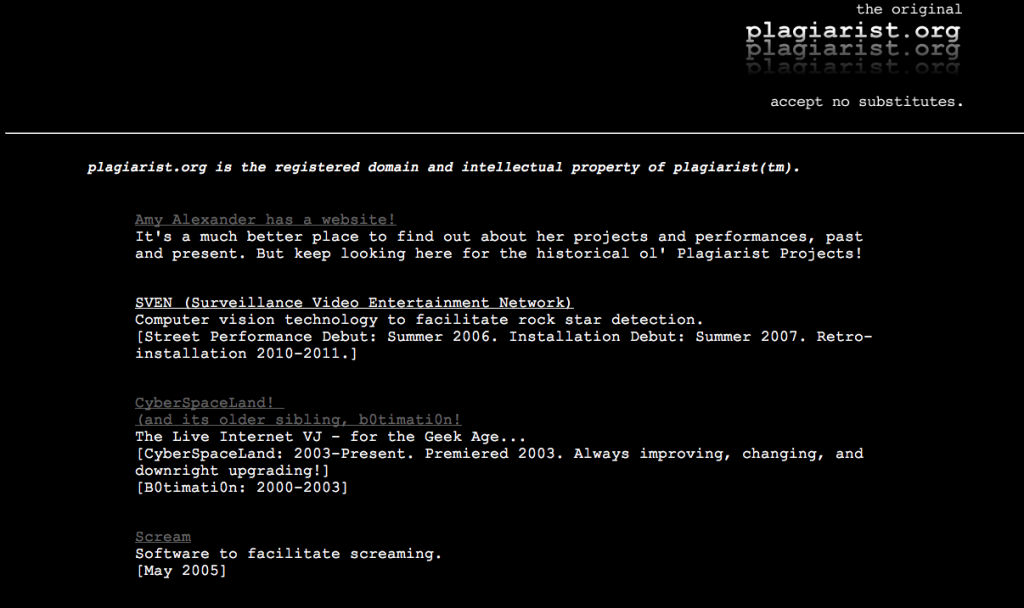
Übergeek is different, since I physically go out and perform as her. She’s both a theatrical character and actual club performer – in varying proportions depending on the context of the show. The theatrical character is a geeky rockstar wannabe. That opens up space for Übergeek to exaggeratedly escape the physical restrictions of performing on a computer – by waving around an “air mouse,” dancing on a DDR pad, etc. The club performer comes from my growing up performing music. I’d never thought about it, but the zone musicians go into to perform is really like playing a character. You have to become someone else. A few years ago I heard Steve Schick explain that when he has to perform a difficult piece of music, he imagines he’s someone else – and that other guy can play the piece. Eventually I realized that any performance of any kind I’d done that I’d been remotely satisfied with, whether music, VJ show, or performance art – I’d mentally become some other person. Going into character is really important, even if the character is just, “the performer.” It can be easy to forget the crossovers between performing arts and visual arts, but there’s a lot we can learn from one another.
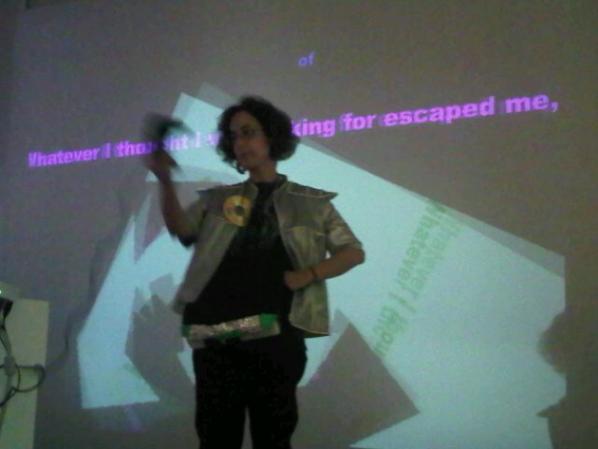
RBE: Do you think this happens to us when we interact online, that we become performers? (Some people believe for instance that Facebook is really a performance of ourselves, not our real selves) Do you see any intersections of performance in “online” vs “physical/ in person” interactions? (I realize this gets into an entirely different question, the idea of intentional performance and unintentional, but perhaps you see an overlap?)
AA: I think there’s an overlap, but there’s also an overlap between the kind of “performances” we do online and those we do in “real life.” I don’t buy the dichotomy that the physical world is real/true and the online world is fake. We perform different sides of ourselves in different real life situations – work, friends, family, large group, small group, etc. Sometimes we perform more consciously than others. On the other hand, sometimes we feel less inhibited in online interactions, so we behave more naturally.
That’s not to say there’s no difference between online and offline interactions – but then again, these differences didn’t just suddenly emerge when the Internet came along. Think back to when people sometimes had pen pals by snail mail, for example. The relationships could be friendly, intimate, or performative. When things like immediacy and nonverbal communication disappear, that invites a different kind of behavior – be it more natural, more performative, or a combination.
RBE: What connections do you see between identity, code, and performance?
AA: I guess I’ve responded to identity & performance in the question above. As for code & performance: people have pointed out that code parallels musical notation, in that both are executable languages. If you think about scores by people like John Cage, where scores could actually be diagrams or verbal instructions to the performers, the connection between performance and instruction set becomes even clearer. This is interesting historically and theoretically, but for many of us who use code in performance, the connection becomes self-evident in practice. Code launches processes and actions, and performance *is* processes and actions, and there’s a back and forth between the performer and software. It’s not that much different for me performing software than performing a musical instrument; if I play violin, I finger, bow, pluck in various ways to get various sounds. You can think of the violin as interface, the notes and gestures as parameters, or whatever. But to be honest, trying to create precise analogies is a recipe for disaster. The point is, you perform both of them, and you have to learn how to do it. The difference with software is, you build your own instrument; that’s both a blessing and a curse. So you try to balance playability with flexibility, and so on. Because of my experience playing music, I keep trying to build ones that will accommodate clumsy performers like me!
RBE: Do you see all code as being “performed”? (Or perhaps is saying code is executable the same as saying code is performed?)
AA: It depends on which sense of the word “performed” you’re using. In the sense that means to do some sort of process – like to perform your job duties – yes. You can think of data as nouns and algorithms as action verbs. You “run” code, and though the physical metaphor might be an exaggeration, in general, some sort of an action happens. So in that sense, the processor is performing the code.
But in the other sense of the word – intentional performance, performing arts, performance art, etc. – running code is innately no more of a performance than breathing. People like John Cage have made interesting performances out of breathing, and people like Alex McLean have made interesting performances out of running code. But it’s not that way on its own, except in the Cagean sense of it being performance if you think of it that way. I think that’s interesting, but I’m personally more interested in code’s cultural, rather than formal, implications. In other words, I’m not so excited that processes are dynamic and self-repeating for their own sake. I’m more interested if, for example, that means we have increasing difficulty finding unpopular or obscure information online, because the popular perspectives have formed an algorithmic echo chamber.

RBE: Your newest work is using audiovisuals, performance, solar energy, and the history of dance in cinema. How did you arrive at this combination of ideas?
AA: The project is Discotrope: The Secret Nightlife of Solar Cells. It’s an audiovisual performance – a collaboration with Annina Rüst, with algorithmic sound design by Cristyn Magnus. There’s really two parts to the project: the projection system, and the content and performances that we develop for it. The system is a disco ball where some of the mirrors have been replaced by solar cells. The cells power the motor that turns the ball. We project video onto the ball instead of colored light. The result is, reflected, fragmented video images move around the room. Since the video projections “solar”-power the ball, the speed at which the images move around the room varies with the brightness of the images.
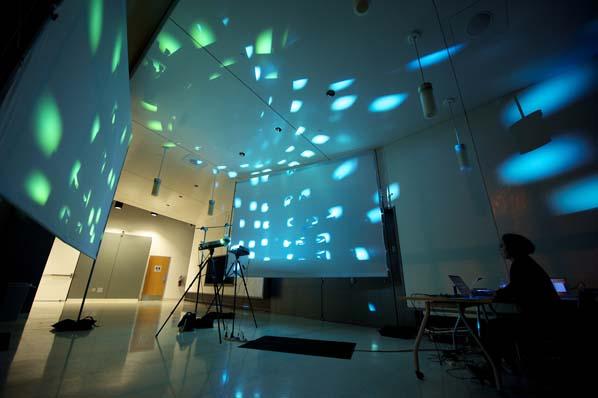
The way this all came about was I’d been interested in the philosophy behind hybrid cars and various other things – that when we “waste” energy, we might actually be creating it. I kept wondering if this idea could be applied to media somehow, and I kept trying various experiments with video: could the talking heads on cable news power an LED? etc. Never quite found the right outlet for this idea, though. At some point, Annina and I came across a disco ball, and we noticed the similarity between its mirrors and small solar cells. Then the idea of projecting videos onto it hit us, and it all came together as a “media-powered” system. Of course, that was just the general idea. After Annina built the initial prototype of ball, it took many hours working with it the studio for the “instrument” to reveal itself – i.e. how exactly does a video-powered disco ball become useful visually and performatively? Figuring that part out was just elbow grease – but getting from rough idea to what-is-this-really always is for me; I have to get my hands on things and play with them.
The content framework we’re working with for at least our initial round of performances is “the history of dancing ‘at’ cameras.” Since it’s a disco ball, we envisioned performing it at community dance parties, etc., and so people dancing seemed like the obvious thing to project. We started from the idea of projecting the people at the party onto it live – but we realized we also wanted to expand beyond that. Again, the elbow grease process: I’d try different clips of people dancing on YouTube, old movies, TV shows. Eventually a connection emerged between early cinema clips and contemporary YouTube clips. In both cases, people dance pretty much like vaudeville performers, directly for the audience – as opposed to cinematic narrative style, in which the viewer is a fly on the wall. In the dancing “at” cameras style, there’s a more direct, intimate connection between dancer and audience. We’ve written some things about this on the Discotrope blog – and I’ll probably write more there soon. Another thing we became interested in is how representation (gender, physical, etc.) does and doesn’t change from early movie camera demos and Hollywood films to YouTube, where people are generally self-cast and self-directed. And I’m really interested in the relationship between all of this and the muddy space between exhibitionism, voyeurism, and surveillance. That’s a theme that’s run through a number of my projects, and dancing at cameras certainly exemplifies that murkiness.
Of course, a lot of the dancing at cameras perspective relates to film history in general – cinema’s origins in theatre and vaudeville, the development of montage, etc. So it’s interesting to see it return with YouTube. Teresa Rizzo has written a really interesting article related to this called, YouTube: The New Cinema of Attractions.
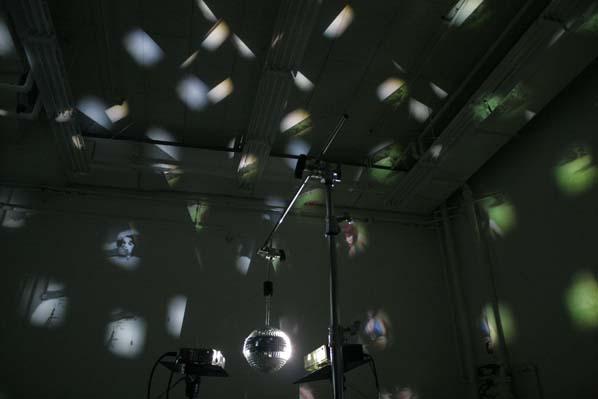
RBE: When you say “people dancing at cameras” I immediately thought of surveillance cameras. Is your disco ball a type of surveillance camera?
AA: I’m really interested in the blurring between surveillance, exhibitionism, and voyeurism. The Multi-Cultural Recycler, SVEN, and CyberSpaceLand all hit on that theme in one way or another; this time it’s cinematic dancers. The cinema/YouTube performers who appear in Discotrope all knew they were on camera, so overtly it’s more about exhibitionism and voyeurism. Glamorous 1950’s female burlesque dancers did their strip tease acts for the camera; sixty years later, not-so-glamorous scantily-clad men proudly stomped through the Single Ladies dance on YouTube. One group does work-for-hire within the Hollywood studio system; the other does what they want. Does that make one voyeurism and the other exhibitionism, or is it more complicated than that? in some cases, we see the performers much differently than they probably saw themselves. Does that make it surveillance? I think it’s all very muddy, and that’s what I find interesting.
The flip side is that there are people in some of Discotrope’s YouTube videos doing things like dancing in Walmart, which gives the video a surveillance camera look even though it’s obviously not surveillance (in the traditional sense, at least.) People turn the tables on surveillance video and make their own production numbers in surveilled/controlled areas – for fun and as a type of resistance. That’s one of my favorite parts of Discotrope. Then we get to recreate those Walmart spaces in the big Discotrope projection. It makes it even more like an old Hollywood production number, and it makes it weirdly immersive. This is fun for us, because Walmarts are not the kind of thing normal people like to recreate immersively. 🙂
RBE: For this piece you are creating something for other people to perform with. Are there any differences for you in creating work that you will perform vs. others performing?
AA: Ah, those pesky multiple senses of “performance” again!. 🙂 I do the visual performances for Discotrope, so for now I’m primarily building the software system for myself to perform. So far Annina is the only other person who performs with the software. Like anything, it’d require some tweaking to be distributed for more general use, though I’ve tried to make it not too terrible in that regard. 🙂 More challenging/interesting might be for performers to get the feel for moving the ball – like anything, it takes practice to get proficient.
But perhaps you’re talking about performers in terms of the audience who can dance to Discotrope, or the parts of the show where audience members can dance on camera interactively. In this case, they’re both performer and audience at the same time. That’s an interesting challenge, because in designing the show, we have to think about them in both ways.
RBE: You are starting a residency at the iotaCenter in Los Angeles, what will you be working on there?
AA: It’ll be mainly exploratory/preliminary research; things will likely be changing/developing as I go along. But my general plan is to explore two threads: gestural and spatial cinematic performance. In performing CyberSpaceLand over the years, I found myself unconsciously developing certain gestural/structural performance techniques that were much different than what I’d consciously designed for the piece. That spawned some ideas about gesture, time and space that I’m going to try to take further. The spatial thread grew out of some things we’ve played with in Discotrope in terms of deconstructing cinematic narrative in a 360 degree space. I’ll be exploring these spatial cinema ideas both in regards to Discotrope and as broader research.
iotaCenter’s a great place for doing research in abstract / formal and experimental cinema, visual performance history, etc. They’ve got a terrific collection of films and texts. I’m hoping to also use the opportunity to get together with other experimental cinema and visual performance folks in LA. It’d be great to organize some fun/intellectually-stimulating/breathtakingly-earthshattering screening/performance events.
RBE: This interview is going to be part of a series of interviews with women working in art and technology. What do you consider to be important today about being a woman working in art & technology? Do you think it is still useful to discuss the female voice as a separate voice in the field?
AA: It’s a tricky subject, because we both need to hear women’s voices and avoid tokenizing or homogenizing them. Women artists working with technology do tend to have different perspectives than men, and there are far fewer of us. So often when the dominant themes emerge, they tend to be the “masculine” themes by virtue of sheer numbers. A corollary is that often women artists feel pressured to focus on gender issues or certain types of social issues. Again, it’s a problem of critical mass and self-perpetuating themes. Since a fair number of women are already involved with those topics and many women’s interests overlap there, they have momentum. But this ends up discouraging women from discussing or doing work on other topics they’re interested in, So, while we need to talk about shared experiences among women in art and technology, we also need to recognize that they have a diverse range of work and perspectives.
RBE: How have you seen perceptions of gender change through the years either in teaching, performing, or working as an artist?
AA: It’s interesting to think that the first programmers were women, and that at the time it was considered clerical work. (See Researcher reveals how “Computer Geeks” replaced “Computer Girls” by Brenda Frink.)
As men started to fill programming jobs, the perception of programming shifted. It became something “technical” that was somehow inherently “man’s work,” even though it had been clerical “women’s work” only a few decades earlier. I’ve seen something similar happen as a female computing artist. I think there are more of us now – at least we don’t seem to be the novelty we were ten or fifteen years ago. And I’ve seen a shift in attitudes and perception among undergraduate computing arts students: by now both the men and women have grown up playing video games and doing a variety of Internet activities that might have seemed like “boys-with-toys” pastimes a decade ago. So their perceptions of what they’re learning to do as computer artists is a little more open and less gendered. But unfortunately, there are still circular perceptions in all age groups that whatever technical work women are doing can’t be too serious by virtue of the fact that a woman did it. It would seem to parallel the current political debate in the US about the pay gap between women and men. There are always arguments that women’s jobs aren’t as demanding, and they usually end up with someone saying, “I can’t believe we’re still talking about this in 2012!” So on one hand, the more things change, the more they stay the same. On the other hand, as more women computing artists emerge, we’ll hopefully soon achieve sufficient critical mass for world domination. Don’t say I didn’t warn you.
Andreas Broeckmann writes on art, machine aesthetics, and digital culture. He is director of Leuphana Arts Program at the university in Lüneburg, and has played key roles at transmediale – festival for art and digital culture, ISEA2010 RUHR, TESLA-Laboratory for Arts and Media, Berlin, and V2_Organisation Rotterdam, Institute for the Unstable Media. Lawrence Bird interviewed him on our current experience of media and civil society. Image: A. Broeckmann, transmediale 2007 (© Jonathan Gröger)
Lawrence Bird: It’s often said that we inhabit the city differently today because of our engagement with media and media technologies. This has been one of your main concerns, and it makes for a very interesting intersection of media theory and public realm theory. Where does this preoccupation come from on your part?
Andreas Broeckmann: I have arrived at these questions not so much from a theoretical or academic perspective, but in response to specific artistic practices that I was interested in. For my own thinking about this area, the works that the artist group Knowbotic Research were working on in the 1990s were seminal. The participative public installation “Anonymous Muttering” (1996), for instance, initiated a radical clash of the physical urban space with the virtual ‘space’ of the internet, interlacing the activities of the participants in a way that created a strange intermediate zone – maybe we could say that it allowed people to place themselves _in_ the medium. In the series of projects that followed under the title “IO-dencies” (1997-99), Knowbotic Research further explored the possibilities of becoming active, of acting in a virtual environment in a manner that was connected to activities and events in the physical space.
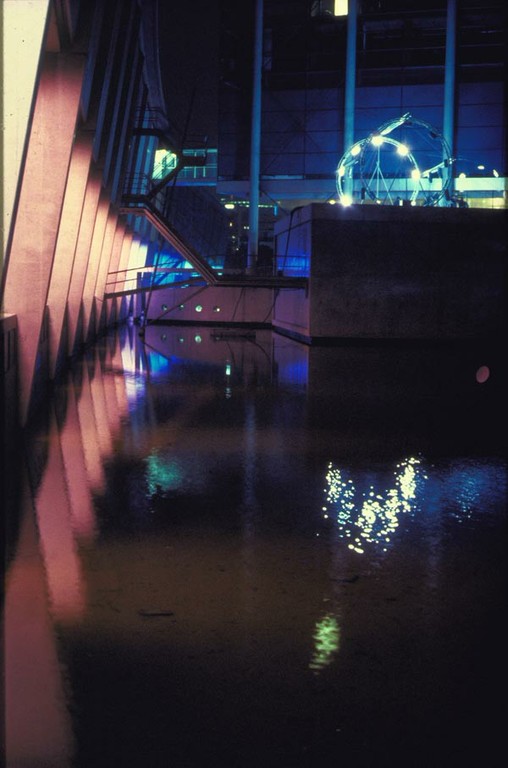
I was working quite closely with the group at the time, presenting some of the projects in Rotterdam where I was a curator at the V2_Organisation, co-authoring texts, organising workshops, etc.. This was a great opportunity to think through the issues of the new, hybrid public sphere that was opening up because of the Internet. In order to understand the works, it was necessary to develop a differentiated conception of what it meant to “be public” or to “become public”. The topic returned, for instance in projects I was involved in by Rafael Lozano-Hemmer in Rotterdam, or a publication on Polish video art by the WRO agency, or a major curatorial on a media facade in Berlin, or, for that matter, more recent projects by Knowbotic Research, like “Be Prepared Tiger”, or “MacGhillie”. Personally, I believe that privacy in all its guises – from camouflage and the absence of surveillance to “a room of one’s own” – is one of the great privileges of a modern individual. Contemporary media and communication technologies have transformed the possibilities of being private dramatically, just as the notion of what it means to be public is subject to drastic changes. And artists are articulating these changes which we are all part of, giving us opportunities to reflect on what is going on, and to imagine how things might also develop otherwise. I think that my interest in the relationship between publicness and intimacy is fed both by a personal sense of urgency and and concern, and by the inspiration I get from artists, not to fall into despair.
Lawrence Bird: Fascinating. So would you say that in the direction media are now evolving, there’s actually an increased scope for private “being” — not just in terms of a potential for increased anonymity and independence, but in terms of a richer and more developed individuality? To a greater degree — or perhaps qualitatively different — than was possible in earlier stages of modernity?
Andreas Broeckmann: Unfortunately not… I say that privacy is a privilege exactly because it is becoming such a rare condition these days. The developments that we speak about are, of course, not unidirectional and homogeneous, but very diffused and heterogeneous, and open to quite different interpretations. For many people, a platform like Facebook or Google-Plus is a way of discovering a new form of sociality in which they try out different ways of being public and being private.As for myself, having been brought up with the Critical Theory analyses of the Frankfurt School, I find it difficult not to see these optimistic readings as dangerously naive – it would be a bit like exploring your inner self in the highly regulated and commercial spaces of a shopping mall… I would not go so far as to say that privacy has completely disappered — as though we were now living in a global village of Big Brother containers, or in a vastly extensive version of the Truman Show. But I do think that today we lack a more widespread critical sense of resistance to the regimes of commodification that have taken the place of what were once “privacy” and “social relations”.
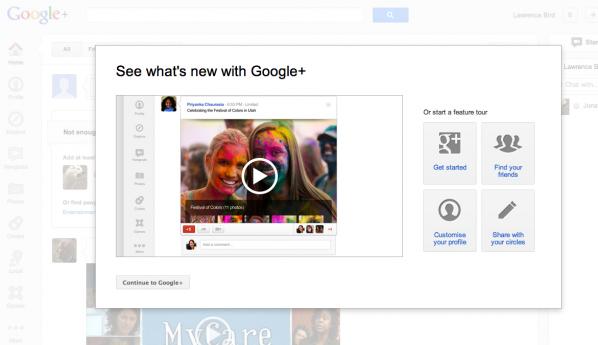
Lawrence Bird: You spoke about the concern of “falling into despair”. How general would you say that motivation is? I don’t know if you’ve thought about it this way, but I’m thinking in terms of Occupy, and the other social movements, many of them enabled by media and engaged by artists, which seem to generate new, and some evidence suggests quite lasting, relationships of trust and hope. Many of these seem to come in response to a recent loss of faith in corporations, governments, financial institutions — older social groups that had an important role in old definitions of “public”. I wonder if your comment connects with a widespread yearning for hope, in response to conditions that might well produce despair?
Andreas Broeckmann: I dare not speculate about the longevity of the relationships that have been built by the different branches of the Occupy movement, but I am skeptical about the longevity of anything that is built on specific internet-based media platforms. Facebook, for instance, was launched in 2004, that’s eight years ago, and the German and many other non-English Facebook services are no older than four years. That’s a very short time, and we might want to remember that platforms like Google (*1998), Facebook, Flickr (*2004) or Twitter (*2006) are not part of the natural environment, but recent services offered by profit-oriented companies which, just as well as they may rule the internet world throughout the 21st century, might also get drowned in the swamps of global capitalism (whose regime includes “customer confidence”).
I would refute the assumption, implicit in your question, that many of the people who protested on the squares in Madrid, Cairo, Washington or Athens last year were people who previously had faith in their governments, or the institutions of capitalism. Of course they didn’t, and quite rightly so. What was special about last year was that there is a new, articulate generation of people who would not put up with the situation of stasis, hopelessness and frustration that has paralysed major parts of global societies since 2003 when, in February of that year, millions who took to the streets around the world in protest, were not able to stop the US government and their allies from starting the war on Saddam Hussein’s Iraq. The inflection of this event is different in different parts of the world, but I believe that we share that moment. And this is where the protests in the Arab countries, and those in Spain and Greece, hit the squares on a parallel trajectory: In the same year of 2003, the German government started the implementation of what was called the “Agenda 2010”, a project based on the EU’s 2000 Lisbon agreement of economic restructuring, with the aim of making Europe more competitive on the global market. Since then, in Germany we have seen an erosion of the welfare state, drops in income for lower and middle classes and a huge increase in precarious jobs. But some economists also say that the reason for Germany’s relatively healthy economic situation today, compared with, for instance, Greece or Spain, is that these countries failed to reform their debt-pampered economies. Which is why there is a certain reluctance today in Germany to protect privileges for the Greek middle class, privileges which German citizens already had to give up years ago.
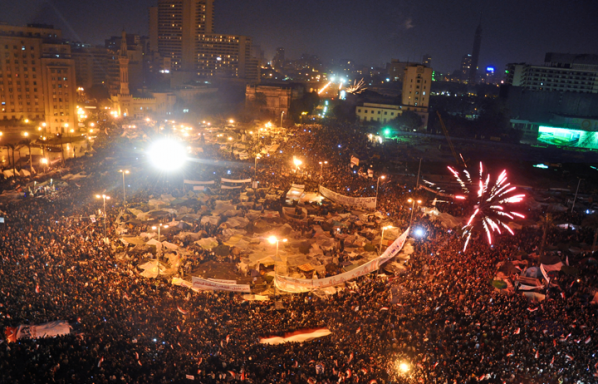
above: Tahrir Square on February 11, by Jonathan Rashad (CC-BY-2.0, 2011).
My point is that if we take things into a more extended historical perspective, and if we count our lives not in short Twitter months, we can see how the struggles, the hopes and the despairs of today are part of a broader set of transformations. And we can see that in these transformations there are forces at work which have a huge inertia and which need to be worked on and battled with both patience and long-term strategies. Like any other revolution, and like in the theatres of the Occupy movement, the one in Egypt may have started on Tahrir Square and the mobilisation of people through media-based social networks, but to complete that revolution, a difficult and drawn-out political struggle needs to be fought. Maybe that is the necessary realisation that hit “the movement” this past winter.
Lawrence Bird: And what form might those long-term strategies take? It’s a huge question perhaps, but do you have any ideas about the shape this restructured public sphere might have to take, what forms of governance and participatory democracy for example, to sustain a more permanent change?
Andreas Broeckmann: Personally, I believe that for the foreseeable future many political struggles will continue to happen in the ‘arenas’ of political institutions like governments, parliaments and other election-based structures, in political parties, public administrations, in transnational and inter-governmental decision-making bodies, in trade unions and NGOs. It is a realm that will only partly be affected or influenced by the online world, and even if the emerging public sphere of the Internet and its social media forums implies a huge expansion and diversification of the mass media dominated public sphere of the 20th century, this expanded public sphere will not necessarily have a bigger impact on political processes than the ‘old’ public sphere did. The experience of the ‘movement’ in Egypt today might be analoguous to that of the APO (the extra-parliamentarian opposition of the students movement) in 1960s and 70s West Germany, i.e. realising the necessity of getting involved in existing state institutions (“the long march through the institutions”), which brought members of that generation to power some 25 years later in universities, in parliaments, in national governments. The relevance and standing of the new Egyptian parties is not proven or disproven in the first elections; it is decided when in ten or twenty years from now they may or may not have been able to change the social consensus about democracy, rights, and freedom.
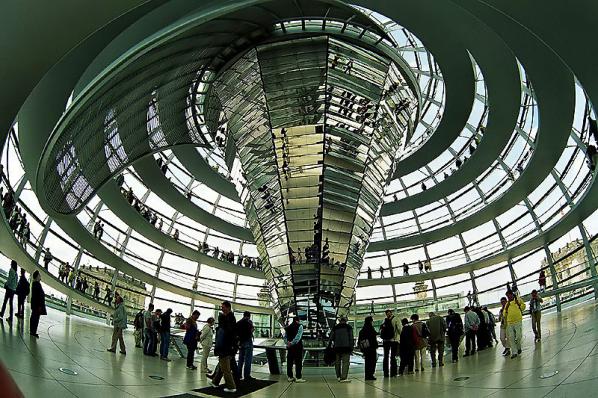
Lawrence Bird: A confession here: I’m an architect, so I always assume, perhaps naively, that a built infrasructure can play a role in these kinds of transformations. In your opinion, might a material intervention be a necessary part of those changes — distinct from, though perhaps in dialogue with, the mediated public realm? What kind of physical (urban) spaces might serve as a counterpoint or moderator to the transience of the Twitter world — and are those spaces any different from the urban spaces we have now?
Andreas Broeckmann: I doubt whether architecture in the narrower understanding of the term will play much more than a symbolical role in these struggles and transformations. Of course, the built environment, especially the way in which public space is configured, plays a significant role in how public life can unfold in cities. And there are political issues to be fought over: for instance, I find it curious how in many of the European cities the authorities allow the construction of one shopping mall after the other, pushing the social and commercial activity of shopping into privatised and highly regulated control spaces, and then those same authorities are surprised when the neighbourhoods in the vicinity of these malls deteriorate because the normal shops are abandoned or have to be closed, making room for trash and money laundering businesses. The resistance against such developments can at times most effectively be fought in local parliaments that, at least in Germany, have to give their consent to such major construction projects. This makes it necessary to join a political party, get elected into the local parliament, sit around in meetings, deal with all sorts of issues of public interest, etc., and be there when the application for the next shopping mall is up for decision…
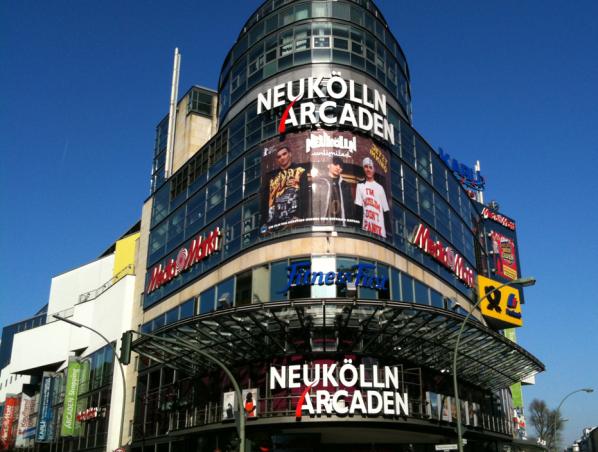
Of similar relevance is the designing of the digital sphere through software ‘architectures’ – both in terms of individual applications and services, and in terms of the overall technical infrastructure, both hard- and software, and its governance. The critical discussions around the status of ICANN and, more recently, the public protests against law-making initiatives like SOPA and ACTA, have shown that protests can in fact have an impact on such structures. Yet, that impact will remain cosmetic if the public outcry is not followed up by sustained political work through which the drafting of and the decision-making on such laws is factually influenced. This is what lobby groups do, and this is what social movements also have to do, finding whatever possible and suitable political instrument or institution through which to act.
The major arena of constructing and designing the new political sphere will be in law-making, and I believe that the movement needs critical lawyers, historians of economy and charismatic intellectuals more urgently than architects – although, of course, everybody has an important role to play and no-one who wants to contribute should be sent away.
Lawrence Bird: And how about artists — do they have a role in this? To provoke, perhaps? To articulate social and political conditions? Would you say that whatever that role is, it can be part of the sustained transformation you’re talking about — or do they need to step down into a governance role to take part in that (Vaclav Havel being one example).
Andreas Broeckmann: In my understanding of art, there is no particular role that it can, or even “should” play. I would argue that the most important aspect of art for society is its autonomy and the fact that it has no particular responsibility. Art can beautify, it can decorate, it can irritate, it can disturb, it can question, it can affirm, it can simplify or complicate. Such an “open program” of course implies that individual artists or groups, or specific projects, will take a particular political stand, will try to influence a social or political situation — will seek real impact. This is a form of activism that art can borrow from political groups and movements, but it is not the activism that is crucial for the artistic practice, it is the transgressive articulation that artists may achieve in their own dealing with social realities. I want to emphasize that this is my understanding of art, and I fully respect people who think that art can and must be more engaged in social processes in order to be relevant. But again, I think that what art can give us most importantly is what happens in a zone of freedom that is morally, aesthetically and sometimes also politically more risky than anybody who acts in the political arena — save for the mavericks — would want to be.
So the question, “what should artists do,” can in my understanding only ever be answered: “they should do whatever they do.” It must be the best thing that they can do, they have to be precise in their formulations and realisations, they have to be committed, diligent, and daring. It is wonderful if they can, in that way, help proliferate good ideas and push the political situation in a good direction. But by the same token I believe that it is equally wonderful if artists ask questions that are impossible to answer, or pointing out unsolvable ethical dilemmas, or remove the mask of an opponent only to don it themselves.
There is, in my eyes, certainly no obligation to go into politics like Havel did. Artists are not always people with a high moral reputation, and stepping into the political arena like Havel did requires stamina and a certain habitus. And there are many ways in which people can intervene in social and political processes. Take the example of Aliaa Magda Elmahdy who posted a photograph of herself naked on her website and sparked a huge debate about the situation of women in the Islamic world. This was not an art project, but it shows what work in the realm of symbols can achieve.
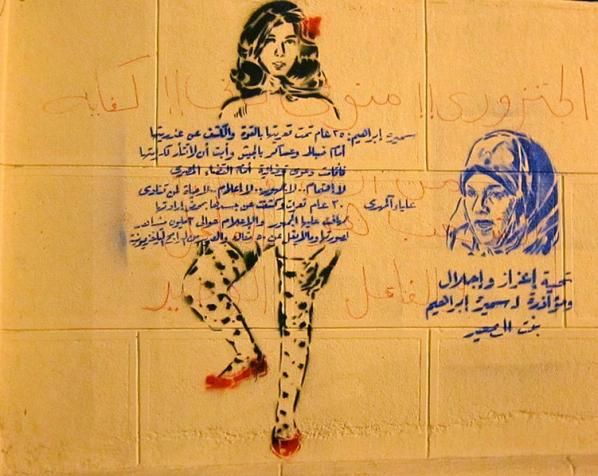
Lawrence Bird: If I could I’d like to steer the conversation in the direction of your thinking on “the wild” — perhaps it relates through the transgressive nature of art you’ve just been discussing, and the tricky relationship of that to civic functions, governance, and related realms of responsibility. Cities have been conceived as set apart from the wilderness — within the city lay the realm of humanity, civility, politics; outside its walls, the wild, monsters, raw life. Girorgio Agamben makes the case that the violence of our times equates to the obliteration of that line: between political life (zoe) and bare life (bios).
In light of what you’ve already said about art and transgression, and the value of that; and the precarious status of privacy today, and the danger of that; your understanding of media and the political movements underway today which involve some significant transgression of the boundaries of authority, I’m willing to bet you have a more nuanced take on this issue. What’s our condition now with regards to the edge of the wild? Is it a constantly shifting boundary, what Agamben refers to as the caesura? Does it imply a human condition interdigitated with an inhuman condition, like a werewolf, or cyborg? Does our humanity in fact find its source in the wild?
Andreas Broeckmann: The questions that you raise are of course extremely complex and very difficult to do justice in the current context. So allow me to shirk the anthropological discussion, which I guess I don’t have a particularly original opinion on anyway. When I spoke about the “wild” as an aspect of digital art a few years ago, it was in a half ironic, and half romantic way: ironic in the sense that art that makes use of digital media is technically conditioned and requires a “tamed” environment to function at all; even what is referred to as ‘glitch aesthetics’ is predicated on general functionality, the glitch being only a minor aberration, not a substantial fault. Yet, as you would gather from what I said before, I am also ‘romantically’ attached to the idea of an artistic practice that transgresses these technical functionalities and explores failure, dysfunctionality, misuse, or uncontrollability as categories of aesthetic experience. I’m thinking of artists like Gustav Metzger, Jean Tinguely, Herwig Weiser, or JODI, who in their works perform, we might claim, the potential wildness of technology. This is mostly a controlled, at times even metaphorical wildness, whereas the true wilderness of technology, if we want to go there, is probably the realm of the accident that Paul Virilio has so poignantly written about. An “art of the accident”, as we entitled a festival in Rotterdam in the late 1990s, is, I believe, only possible in the realm of metaphors.
What I’m currently wondering about is whether in our 21st-century cybernated world a notion of “nature” as something different from culture maybe disappears completely, as we have full Google-ised view and total measurability of what happens on Earth, from millimetre shifts of tectonic plates to carbon dioxide output of cattle. In such a world, there would be no room any more for the “wild”, only for different degrees of pollution on the one hand, and endangerment of species on the other…
In the long run I have trust in the finality of all existence, and the futility of all human efforts. But in the short term, that is, in our lives, I believe that we have to work to make the world a little better, or at least do our best to not make things worse than they are.
